This website uses cookies to improve your browsing experience and analyze the use of the website. Learn More


Highgate Cemetery in London

This post provides all the information you’ll need to visit Highgate Cemetery.
We include details about how to get here, ticket prices, tours, famous gravestones in the cemetery, and more.
And in the video above, let local tour guide, Sinead, with Free Tours by Foot, take you on a virtual walk through the cemetery to see some of the most well-known graves.
Let's dig in (pun intended)!
How to Get Here
- Tickets & Tours
- Famous People Buried Here
- Highgate Vampire
- The Magnificent Seven
This historic cemetery is the final resting place of over 170,000 people in North London, and it is considered one of the “Magnificent Seven” cemeteries in the city.
Due to the variety of wildlife that can be spotted here, Highgate Cemetery is also considered a de facto nature reserve.
Designed by architect Stephen Geary, this massive graveyard houses many beautiful mausoleums, obelisks, gravestones, and other pieces that are now centuries old.
There are several famous people buried here, including former Lord Mayors, beloved musicians, notable writers, important philosophers, and more.
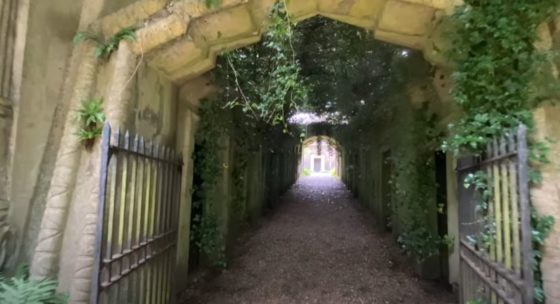
You must pay for admission to the cemetery, and they are currently providing entry via timed tickets.
You can also purchase tickets for tours of the cemetery which cover some of the more notable burials and history of this location.
Highgate Cemetery is currently open daily from 10 am - 5 pm.
Highgate Cemetery is located at Swain’s Lane, London N6 6PJ. This site is just north of Camden Town and right next to Waterlow Park.
You can use this map for directions from anywhere in London.
There is a bus stop near the bottom end of the cemetery on Swain’s Lane which services line C11 .
Alternatively, there is also a stop at Waterlow Park on Highgate High Street. This stop is close to a path that will take you directly to the gates of Highgate Cemetery.
Bus lines 143 , 210 , and 271 service this stop.

The closest tube station is at Archway, which is southeast of the cemetery.
This location is far enough away that we recommend hopping on either the 143 or 271 at the station and taking it up to the Waterlow Park bus stop.
The Highgate tube station is quite far from this part of town, and it can take 40 minutes or more to walk from there to the Highgate Cemetery.
This can be confusing given the name of the station, so make sure to stop at Archway instead.
For more information about using public transport to get here, check our post covering how to use the London Underground .
Highgate Cemetery is split into both an East section and a West section, each requiring its own ticket.
While you can buy tickets to the East Cemetery alone, entrance to the West Cemetery includes access to both.
It's worth noting that photography is allowed for personal use, so feel free to snap as many pictures as you want - but be respectful!
East Cemetery Ticket Prices
- £4.50/Adults
- £0.50/Child (8-17)
- Free for kids under 8
West and East Cemetery Ticket Prices
- £6/Child (8-17)
Tickets are not sold at the cemetery, so you must purchase them ahead of time online.
Purchase tickets or learn more .
Best Time to Visit Highgate Cemetery
Although they are open daily, it is worth noting that their busiest day is actually Sunday. We recommend visiting during a weekday if you want to avoid crowds.
Alternatively, you might also want to consider visiting on a foggy day for an especially eerie experience walking among the tombstones.
Guided Tours
There are guided tours of the East and West Cemetery led by Friends of Highgate Cemetery which include admission to both the West and East Cemetery.
Guests can expect to learn about both the history of the cemetery and its occupants.
West Cemetery Guided Tour Ticket Prices
- £7/Child (8-17)
- Children under 8 cannot be accommodated.
The West Cemetery Guided Tour is 70 minutes long and includes steep paths, so it is recommended to wear appropriate footwear with good tread.
Still photography via handheld cameras is allowed, but filming is not permitted on the tour.
Full refunds will be offered if any unforeseen problems cause them to cancel your tour.
There are also tours offered for visitors who are hearing impaired.
These outings are offered by their volunteer John Wilson, who is a native user of British Sign Language.
Many members of our Facebook Group suggest that this is an underrated activity, some even insisting that the tour is absolutely worth the price.

British Sign Language Tour Ticket Prices
The British Sign Language Tour of West Cemetery is also 70 minutes long, and it is offered simultaneously in BSL and spoken English.
Tours run only on selected weekends.
If you’re looking for an alternative, you can always enjoy our free virtual tour of Highgate Cemetery!
Famous People Buried at Highgate Cemetery
There are far too many famous people buried here to list them all, but we’ll give you a handful of names to look for while you’re visiting this historic cemetery.
Karl Marx (East Cemetery)
This is arguably the most notable gravesite in the entire cemetery. Marx was a very important philosopher, economist, and political theorist.
That all being said, it’s inarguable that his two works The Communist Manifesto and Das Kapital would eventually become his most influential contributions to the world.
Love him or hate him, Marx is definitely one of the most significant people buried at Highgate Cemetery.
Douglas Adams (East Cemetery)
Adams was one of the finest satirists of modern times, working on several science fiction projects which have been incredibly influential to the genre.
Although he did write two stories for the classic BBC television show Doctor Who , Douglas Adams was probably best known for his book Hitchhiker’s Guide to the Galaxy .
He also wrote Dirk Gently’s Holistic Detective Agency , which has since been adapted into its own television show.
Henry Gray (West Cemetery)
Although he worked mostly as an anatomist and surgeon, Henry’s name would live on through a significant book he published entitled Gray’s Anatomy.
Although the name of this book was an inspiration for the show Grey’s Anatomy, this book was actually one of the most respected works describing human anatomy, and it was used to educate many generations of doctors and surgeons.
Michael Faraday (West Cemetery)
Faraday was an important scientist who contributed to modern scientific understanding of electromagnetism and electrochemistry.
If you’ve ever heard of a Faraday Cage, this is the man you have to thank for discovering its existence.
Due to his discovery, we learned that electricity is not a fluid, but rather a force.
George Michael (West Cemetery)
Anyone born before the year 1990 will probably be at least a little familiar with the musical work of George Michael.
He got his start in the band Wham! , known mostly for their hits Wake Me Up Before You Go-Go and Last Christmas .
Michael would also go on to have a fairly successful solo career with songs like Careless Whisper and Faith . He also performed Don’t Let The Sun Go Down on Me as a duet with Elton John.
Bob Hoskins (West Cemetery)
Hoskins was an accomplished actor who starred in several notable and beloved films, but most people nowadays would probably recognize him for his starring role in Who Framed Roger Rabbit .
He also played none other than Mario in Super Mario Bros. and had significant roles in films like Hook , Nixon , Mermaids, and more.
Other Notable Burials
In addition to all the other interesting gravesites located at Highgate Cemetery, there are also a lot of other notablem mausoleums, vaults, and graves belonging to famous poets, authors, novelists, musicians, and more.
- Sir Charles Cowper (Premier of New South Wales)
- Alfred Lamert Dickens (Younger brother of the author, Charles)
- Catherine, John, and Elizabeth Dickens (wife and parents of Charles Dickens)
- Jane Arden (director, actor, screenwriter)
- Beryl Bainbridge (author)
- Alexander Litvinenko (Russian dissident, murdered by poison)
- George Eliot (Pen-name of Mary Ann Evans, novelist)
- Patrick Caulfield (pop artist)
- Sheila Gish (Actress)
- Dachine Rainer (poet)
- Malcolm McLaren (manager of the Sex Pistols)
- Stella Gibbons (author of Cold Comfort Farm )
- Elizabeth Siddal (Model)
- Thomas Sayers (Boxer)
- George Wombwell (Traveling Zoo Operator)
- Julius Beer Mausoleum (Newspaper Baron)
- Christina Rossetti (related to Dante Gabriel Rossetti, famous poet and illustrator)
The Highgate Vampire and Vampire Connections
In the 1970s, rumors began to spread that there was supernatural activity taking place at Highgate Cemetery.
Starting in the 60s, occultists had been visiting other graveyards and cemeteries in London and desecrating various burial sites, supposedly looking for a vampire.
One such event took place at the Tottenham Park Cemetery on Halloween night in 1968.
During this event, a coffin was found with an iron stake shaped like a cross driven through the lid and into the chest of the person inside.
This sparked public interest in vampires, and in February of 1970, a man named David Farrant reported that he had seen a “grey figure” in Highgate Cemetery on December 24, 1969.
Many people reported seeing all kinds of supernatural activity in the cemetery after this report, and on March 13th (Friday the 13th), a man named Sean Manchester held an exorcism on the site.
This inspired a mob of “vampire hunters” to show up in search of supernatural baddies to confront. Months after the mob, the charred remains of a body were found nearby.
A week or two after that incident police found Farrant carrying a crucifix and wooden stake in a churchyard by Highgate Cemetery.
Although he was arrested, the case was dismissed due to a lack of evidence of wrongdoing.
Just a few days later, Manchester returned to Highgate and planned to drive a stake through the body of a potential vampire, but instead, he left garlic and incense -- likely to avoid any criminal charges.
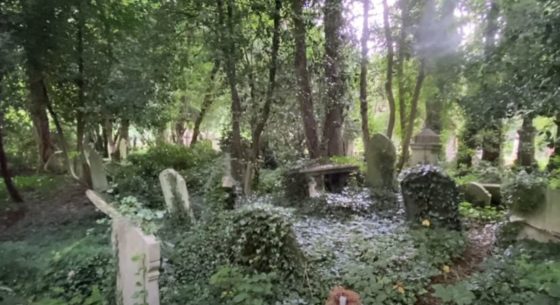
The tale of the Highgate Vampire has inspired many stories since, including the Christopher Lee and Peter Cushing film Dracula AD 1972 .
The Highgate Vampire was also featured in Buffy the Vampire Slayer .
Highgate Cemetery is often cited as the inspiration for Bram Stoker’s Dracula , and it’s also speculated to be the location of Lucy’s tomb in the book.
Due to its significance in vampire lore, Highgate Cemetery has been featured in several other British horror films including Tales from the Crypt , From Beyond the Grave , and Taste the Blood of Dracula .
Highgate Cemetery is also the setting used for the sixth level of the video game Nightmare Creatures , and it was the inspiration for the setting of Neil Gaiman’s The Graveyard Book .
Whether or not there actually was (or is) a Highgate Vampire, it’s clear that the atmosphere of this historic cemetery has inspired many creative minds to come up with wonderfully spooky tales about the possibility.
If you’re interested in learning more about the creepy and potentially supernatural history of this city, consider taking either a London Ghost Tour or a Jack the Ripper tour .
The Magnificent Seven Cemeteries
Highgate Cemetery is one of seven notable cemeteries in London that was established in the 19th century to prevent overcrowding in smaller graveyards.
Given the nickname of the Magnificent Seven, these cemeteries were the final resting place of many notable people, and many of them are now considered some of the finest parks and gardens in London.
Brompton Cemetery
Built in 1840, this was the fifth of the Magnificent Seven to be finished, and it is still a working cemetery to this day.
Managed by the Royal Parks of London, you'll find both beautiful wildlife and noteworthy gravesites.
If you're curious about what to expect here, our virtual walking tour above will provide an excellent look at this beautiful landmark.
You can also learn more about our post covering Brompton Cemetery .
Abney Park Cemetery
Built in 1840, this was the fourth of the Magnificent Seven cemeteries to be constructed.
Although this was originally the site of Abney Park, a public parkland, they turned it into a cemetery in the mid-1800s.
Notable burials include both William and Catherine Booth, founders of the Salvation Army, and anti-slavery abolitionists James Stephen and Thomas Binney.
Nunhead Cemetery
Constructed in 1840, this was the sixth of the Magnificent Seven cemeteries built shortly after Brompton Cemetery.
Previously known as All Saints Cemetery, today it is publicly owned and considered a nature reserve.
Several notable people are buried here including Bryan Donkin, who created the first commercial canning factory and the first paper-making machine.
Kensal Green Cemetery
This was the first of the Magnificent Seven cemeteries to be established, and it was built in 1833.
Listed as a Grade I structure on the Register of Historic Parks and Gardens in London, this cemetery remains in use to this day.
Many notable people have been buried here, including Prince George, Duke of Cambridge, and Princess Sophia.
Tower Hamlets Cemetery
This was the final cemetery of the Magnificent Seven to be constructed, and it was built in 1841.
Originally known as The City of London and Tower Hamlets Cemetery, locals chose to refer to it as Bow Cemetery.
This location was actually built more than 100 years before the creation of the modern borough of Tower Hamlets in 1965.
Since then, this cemetery has been declared a nature reserve, and its walls were listed as a Grade II structure on the National Register of Historic Parks.
West Norwood Cemetery
Constructed in 1837, this was the second of the Magnificent Seven cemeteries to open in London.
As in the case of most cemeteries on this list, West Norwood has been listed on the National Register of Historic Parks and Gardens, and it is considered a valuable site for nature conservation.
Noteworthy burials here include more than twenty Members of Parliament in Westminster, several artists and entertainers, significant inventors, and more.
Related Posts
- Most Haunted Places in London
Choose a Destination... I want them all PLUS general travel tips. Amsterdam Berlin Boston Charleston Chicago Dubai Lisbon London Los Angeles Miami Nashville New York City New Orleans Paris Philadelphia Prague Rome San Francisco Washington DC
About The Author

North America
United kingdom & ireland, middle east & india, asia & oceania.

9 Things Not to Miss at Highgate Cemetery
It’s one of the most famous cemeteries in the world but recently Highgate Cemetery has offered an even better opportunity while visiting. It’s the chance to explore the West Cemetery alone with a self-guided route.
I’ve previously taken one of their excellent guided tours but this was a brilliant opportunity to wander the peaceful surroundings alone.
There are thousands of graves, so this list is just my personal highlights and somewhere to start!

A Bit of Background
Highgate Cemetery was one of the earliest private cemeteries in England. London’s huge population growth in the early 19th century meant that most churchyards were full and there was growing concern of the need to bury the dead.
Between 1801 and 1841 the population of London doubled from 1 to 2 million and during this time the capital was also hit with unprecedented health crises including typhoid an cholera.
The solution to this problem would be solved by entrepreneurial Victorian businessmen.
In 1836 an Act of Parliament established the London Cemetery Company, led by Stephen Geary. There were plans to build a North, South and East cemetery, with Highgate being the flagship project.

It wasn’t the first. Kensal Green (1833) and West Norwood (1837) came earlier and were both run by private companies.
Spurred on by competition the plan was to make Highgate the most beautiful and prestigious private burial place in London.
1. The First Burial
Easily missed in amongst the greenery, the grave of Elizabeth Jackson doesn’t seem that ‘special’.

But this is the very first burial in the cemetery, just six days after Highgate Cemetery was consecrated by the Bishop of London on 20 May 1839.
Elizabeth was only 36 and died from consumption. She lived on Little Windmill Street in Soho which at the time was overcrowded and unsanitary. Her husband later died in the 1854 cholera outbreak. You can read more about this and the fateful water pump at the centre of the story here .
2.Egyptian Avenue
During the 19th century, as new opportunities for travel opened to the British, there was a boom in Egyptology. It was during this time that many objects were taken from Egypt, to the British Museum and this new inspiration would influence art and design.

The Avenue reflects contemporary fashion and is particularly apt for funerary monuments. It’s a theatrical experience, walking through the small entrance and passing 8 vaults on either side which can each contains up to 12 coffins. Previously this also would’ve been enclosed overhead, adding to the atmospheric experience.

3.Circle of Lebanon
After walking through the Avenue you then emerge back into sunlight, but are presented with a sweep of mausoleums.

This is the centre of the West Cemetery and is named after a cedar tree from Lebanon – already 100 years old when Stephen Geary was designing the site.

Sadly the cedar tree had to be removed in 2019. Tree Surgeons found it was beyond saving and was in danger of collapsing into the vaults below.
4. Terrace Catacombs

Named after the garden terrace of Ashurst House, demolished in 1830, these are brick catacombs stretching over 70 metres, lit by circular gaps in the ceiling.

One of the people buried here is Robert Liston, a pioneering Scottish surgeon who specialised in amputations. Known as the ‘fastest knife in the West End’ he could remove a patients leg in under 30 seconds.

Image from Wikimedia Creative Commons – Robert Liston, 1847 portrait by Samuel John Stump
Something I’m sure his patients appreciated in an era before anaesthetic.
5. Thomas Sayer’s Tomb
Since it opened Highgate was a prestigious place to be buried and so it follows that the Victorian celebrities found their way here.
There are plenty of architects, scientists and politicians, but a particularly eye-catching grave is that of Thomas Sayers, a bare-knuckle prize fighter.

10,000 people are meant to have attended his funeral and riding as ‘chief mourner’ behind his procession of carriages was his beloved pet dog ‘Lion’.
In statue form, his faithful dog keeps watch over his master’s grave in perpetuity.
6. Nero the Lion
On an animal theme you can also find an actual lion represented in Highgate Cemetery.

This is Nero; the most famous attraction of George Wombwell’s travelling menagerie. Established in 1810, Wombwell was an eccentric showman and by 1839 he had 15 wagons packed with exotic creatures that toured the country.
He even made use of his coffin before he died, made from the wood of a shipwreck and gifted to him by Prince Albert (for curing his pet dog) Wombwell exhibited his coffin for a fee while he was alive.
Seen as the first international terrorist incident, Joseph Conrad’s novel The Secret Agent is based on the story.
7. The Beer Mausoleum
The largest and grandest of all Highgate’s private monuments is the Beer Mausoleum, designed for Julius Beer who died in 1880.

He made his money on the London Stock Exchange and this burial place cost him £5,800 at the time.
But it wasn’t an egotistical place for himself, rather a monument to family including his beloved young daughter who died of scarlet fever aged 8.
Get a 360° view inside the mausoleum here .
8. Karl Marx’s Tomb (East Cemetery)
Karl Marx can be found in the East Cemetery and is almost impossible to miss his tomb, simply because of the absolutely massive bronze sculpture of Marx which stands at 12ft (3.7m) high. Marx was originally buried here in 1883, alongside his wife in a sparse ceremony.

Marx was originally buried here in 1883, alongside his wife in a sparse ceremony. Howver in the 1950s, after a huge fundraising effort from the Communist party, Marx and his wife Jenny were exhumed and moved to a more prominent position. The current monument was erected in 1954, designed by Laurence Bradshaw.
The East Cemetery was built in the 1850s, this expansion doubled the cemetery in size and has a very different feel to the West side, less overgrown and dramatic.

The 19 acre-site is on the other side of Swain’s Lane which meant that it was tricky to transport coffins (after ceremonies in the chapel) across the road.
Leave it to the Victorians to come up with an engineering solution. An underground tunnel and hydraulic lift was installed! It opened in 1855 but is sadly inaccessible today.
9. Patrick Caulfield’s Headstone (East Cemetery)
Not everything in Highgate Cemetery is Victorian and they’re still open for burials today (interested? find out more here .)
One of the most striking modern tombstones is for the artist and printmaker Patrick Caulfield (1936-2005)

Visiting Highgate Cemetery
On the Highgate Cemetery website you can choose between guided tours and self-guided visits of the West Cemetery. The East Cemetery is included in your ticket price. Find out more here .

Each Wednesday morning I send the latest London history blog post, news and inspiration. If that sounds like your cup of tea, sign up using the box below!

More London Inspiration

History of the Royal Waterloo Hospital For Children and Women
One of the most eye-catching buildings beside Waterloo Station is the former Royal Waterloo Hospital for Children and Women....

Climb the Dome at the Old Royal Naval College
There's a new tour you can take in Greenwich! Here's what it's like to climb the dome at the Old Royal Naval College....

Hidden History of Golden Square
It might not have the immediate charm of Soho Square, but Golden Square has a fascinating history (and a good reason for its messy hodge-podge of architectural styles and ages). While walking through on a sunny afternoon I was struck by how many little details......

Inside Lambeth Palace Garden & Library
Lambeth Palace is the official London residence and office of the Archbishop of Canterbury. As well as medieval buildings and historic state rooms, it contains the oldest continually cultivated gardens in Central London. However, to be perfectly frank, it’s incredibly difficult to get a look......

Visit the Thames Tunnel at the Brunel Museum
In Rotherhithe, you can descend into part of the Thames Tunnel, a ground-breaking slice of engineering history. Here you can step down into the world’s first tunnel dug under a navigable river, built between 1824-1843. Today it’s part of The Brunel Museum. History of the......

History of Vauxhall Park
Vauxhall Park was opened in 1890 by the then Prince of Wales (later, King Edward VII) but its origin story takes us back to a remarkable couple in the mid 1880s. In 1875 Millicent Garret Fawcett and Henry Fawcett rented 51 South Lambeth Road. The......
Judith Barnett
When we had our tour we were shown a spot (there were undoubtedly others too) that were more expensive as the view across London was exceptional! Pity that the deceased couldn’t enjoy it more really! It’s such a great cemetery.
Post a Comment
This site uses Akismet to reduce spam. Learn how your comment data is processed .

Highgate Cemetery London: Your Complete Visitor’s Guide
The English have always been fascinated by death and burials – the Queen has even already planned her own funeral a few years back! In fact, it is pretty common to plan your own burial in England. Here’s why the Highgate cemetery is so famous:
Table of Contents
History of the famous London Highgate Cemetery
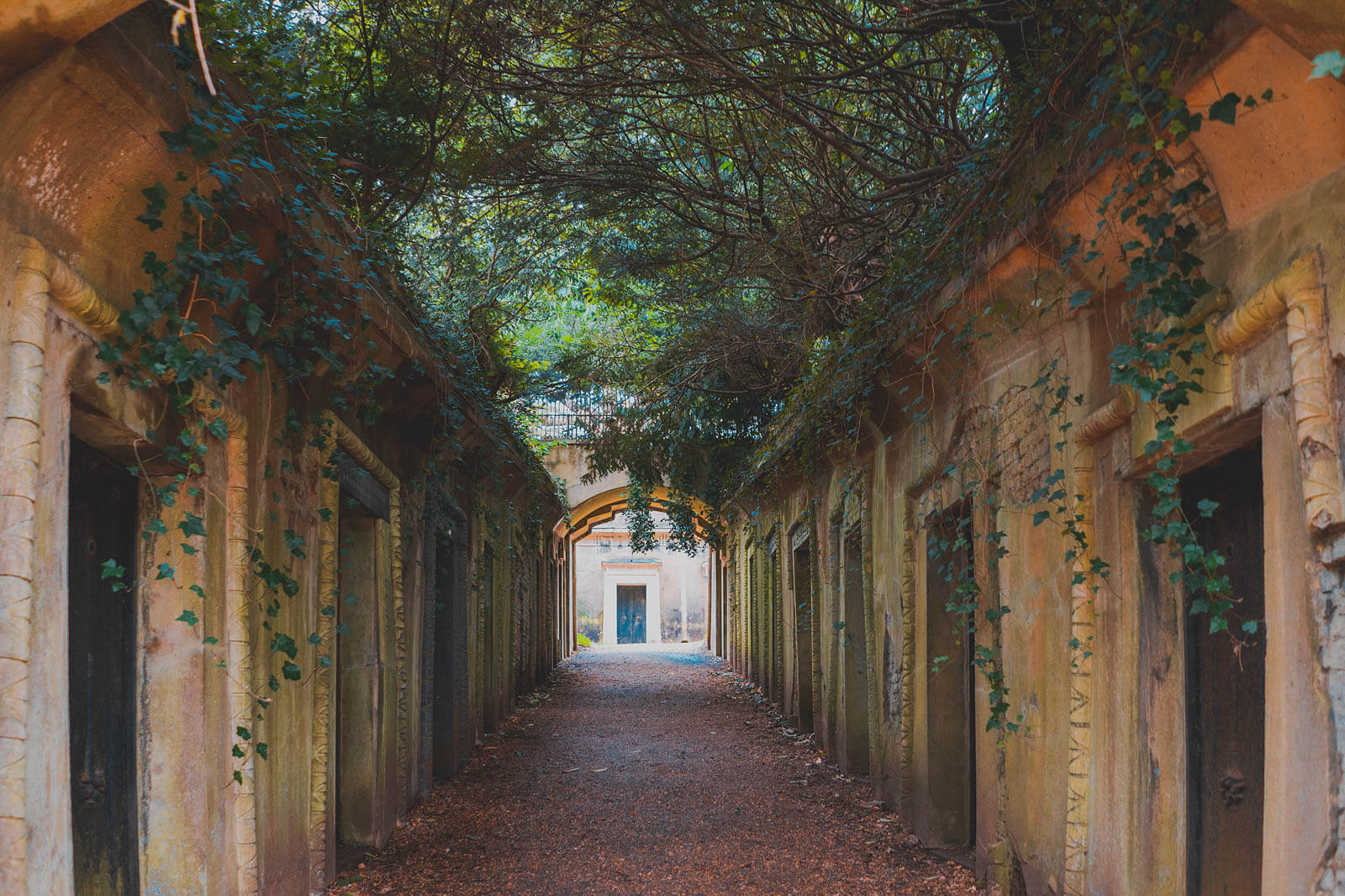
There are two different parts of the Highgate cemetery – East and West. The Highgate cemetery in London is over 180 years old (well, at least the West part). During the industrial revolution there was a very rapid population growth which, unfortunately, also meant that a lot more graves were needed. Before that, people mostly used to build small graveyards in front of churches. Those, however, were not very deep – people were not buried properly, thus risking diseases to spread. Quite a bit was invested into building the West side and you won’t see the beautiful architecture in the East part. Elizabeth Jackson was the first to be buried at the Highgate cemetery, just six days after the bishop consecrated the site.
The East cemetery was built almost 30 years later , as Highgate became a very desired and popular burial site. There were even multiple occupancy per grave! Life was much much different back then – the average person’s age of death was only 35, while 25% of the people buried were children 🙁
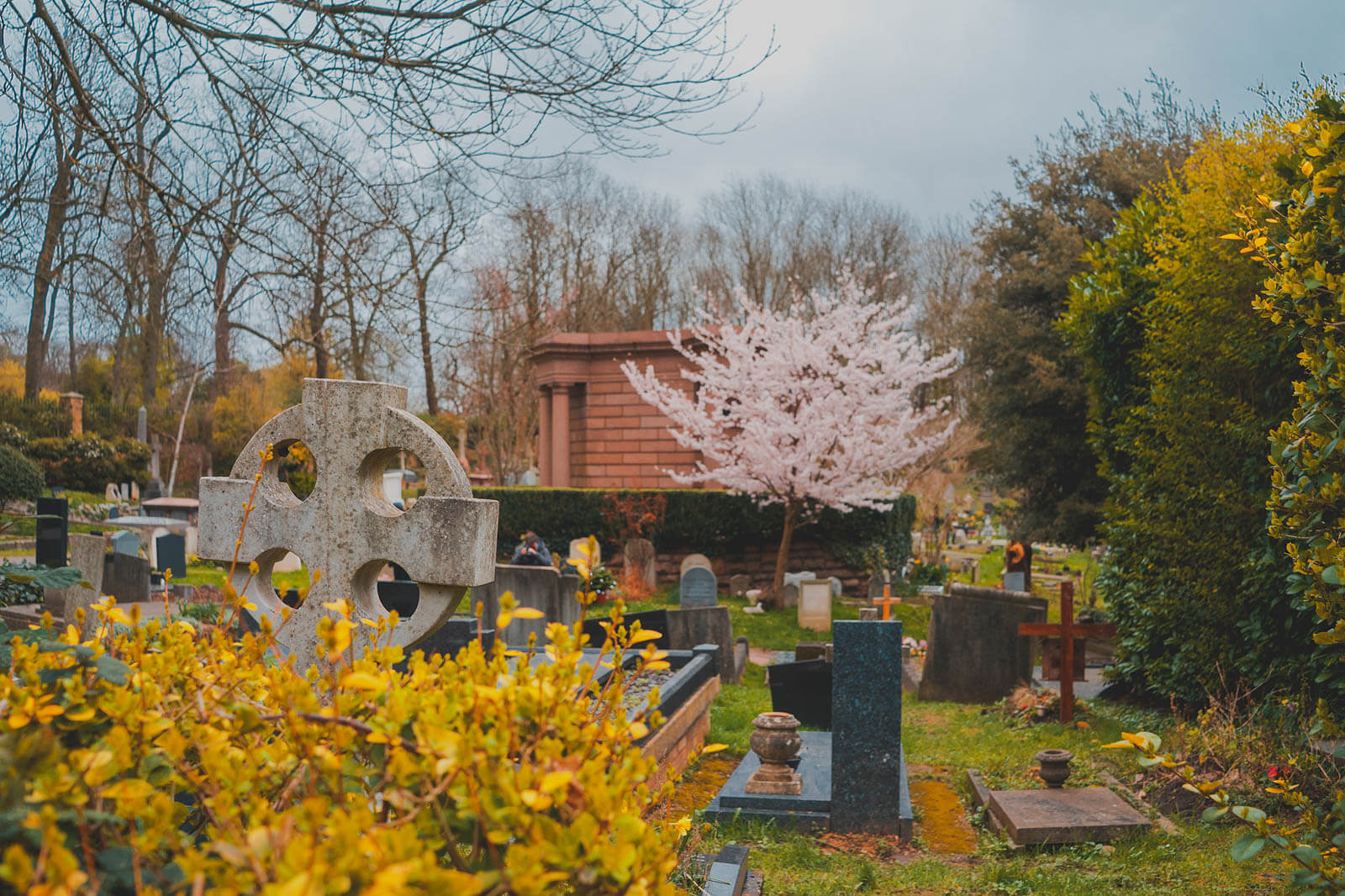
Walking around, you’ll see some parts that have been consecrated and have crosses all around. As you walk down the West cemetery, you’ll see more and more symbols that are not Christian – for example, obelisks !
Unfortunately, there was a decline in the Highgate cemetery condition and maintenance. After WWI, it was almost abandoned – there weren’t even any lanes, nature had started to take its toll. Since it was owned by a private company, it decided that it wasn’t profitable to run it anymore. Around 1975, a group of locals finally decided to take matters in their own hands and started clearing up everything. What an impossible task! They even established the “Friends of Highgate Cemetery Trust” , which is active even today. Most of the people that work in the Trust and at the cemetery are actually volunteers, so be kind!
The Magnificent Seven Cemeteries in London
Actually, the Highgate Cemetery in London is part of the so-called “Magnificent Seven” or “The Garden Cemeteries” . Here are all the cemeteries that are included:
- Charming Cotswolds: Bibury & More – England’s Best Villages
12 Top London Instagram Spots
- 8 London Curious Phone Booths – Hidden London Gems
Explore Oxfordshire: Top 35 Must-Visit Places in Oxford
- Game of Thrones Vibes in London: 14 Must-Visit Locations
- 7 of the Best Streets in London You’ll Fall In Love With
- Kensal Green
- Tower Hamlets
- West Norwood
However, none of the other sites is as famous or as beautiful as the Highgate cemetery.
What to see at the Highgate Cemetery in London
The egyptian avenue at the highgate cemetery.
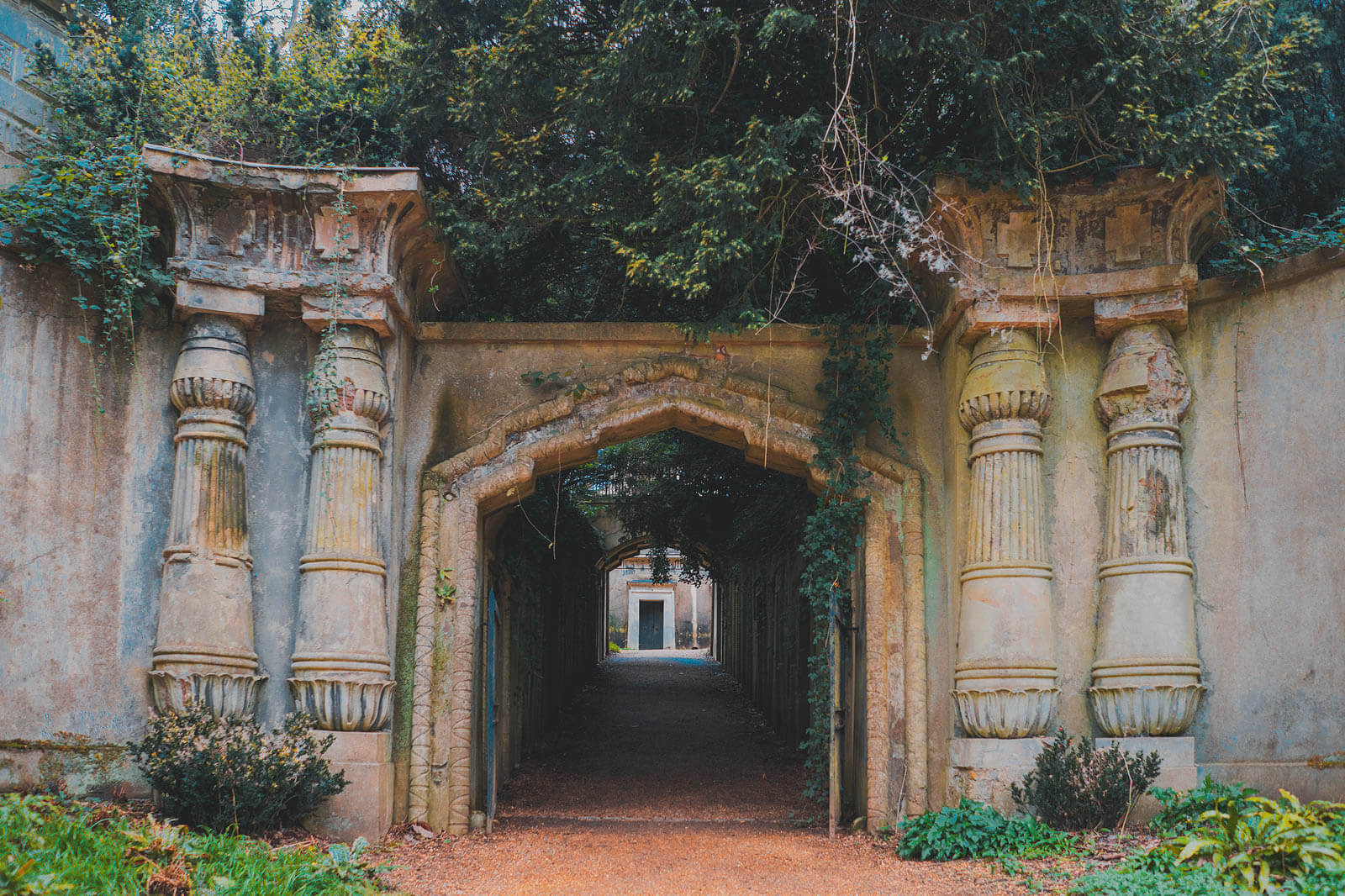
The Egyptian Avenue was where only the wealthiest people were buried. Well, actually, they were not really buried – the coffins stand, even now, above ground. There are sixteen vaults at the Egyptian Avenue and each was usually purchased by a whole family (there are 12 slots in each). Around this part of the cemetery, you’ll notice an upside-down torch – it’s a symbol of eternal life.
The Circle of Lebanon at the Highgate Cemetery

One of the most popular movie locations at the Highgate cemetery is the Circle of Lebanon. The circle was actually built around the Tree of Lebanon , which is quite impressive and is even believed to be about 350 years old! The ground was excavated and space was made, little by little, for further 36 vaults. You cannot enter any of them, but you can take a peak into one or two that don’t have a solid door.
Movies shot at the Highgate Cemetery
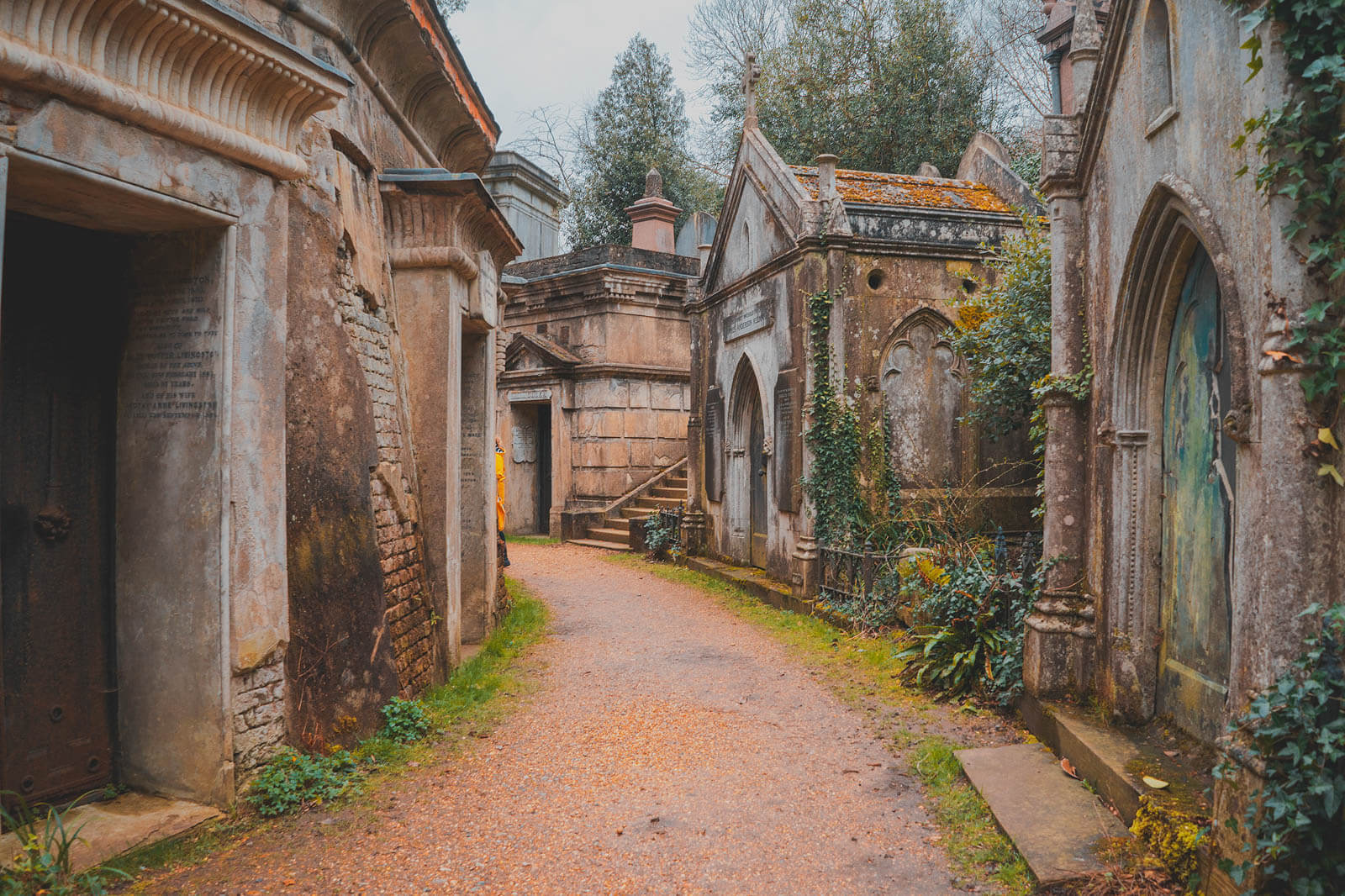
In the past, the famous London cemetery was a filming location for many movies with ghosts and vampires, some of which pretty low-budget . Nowadays, the caretakers of the cemetery are very picky as to what can be shot. Some of the more recent movies and shows include Fantastic Beasts, Hampstead and even Luther !
Terrace Catacombs at the Highgate Cemetery
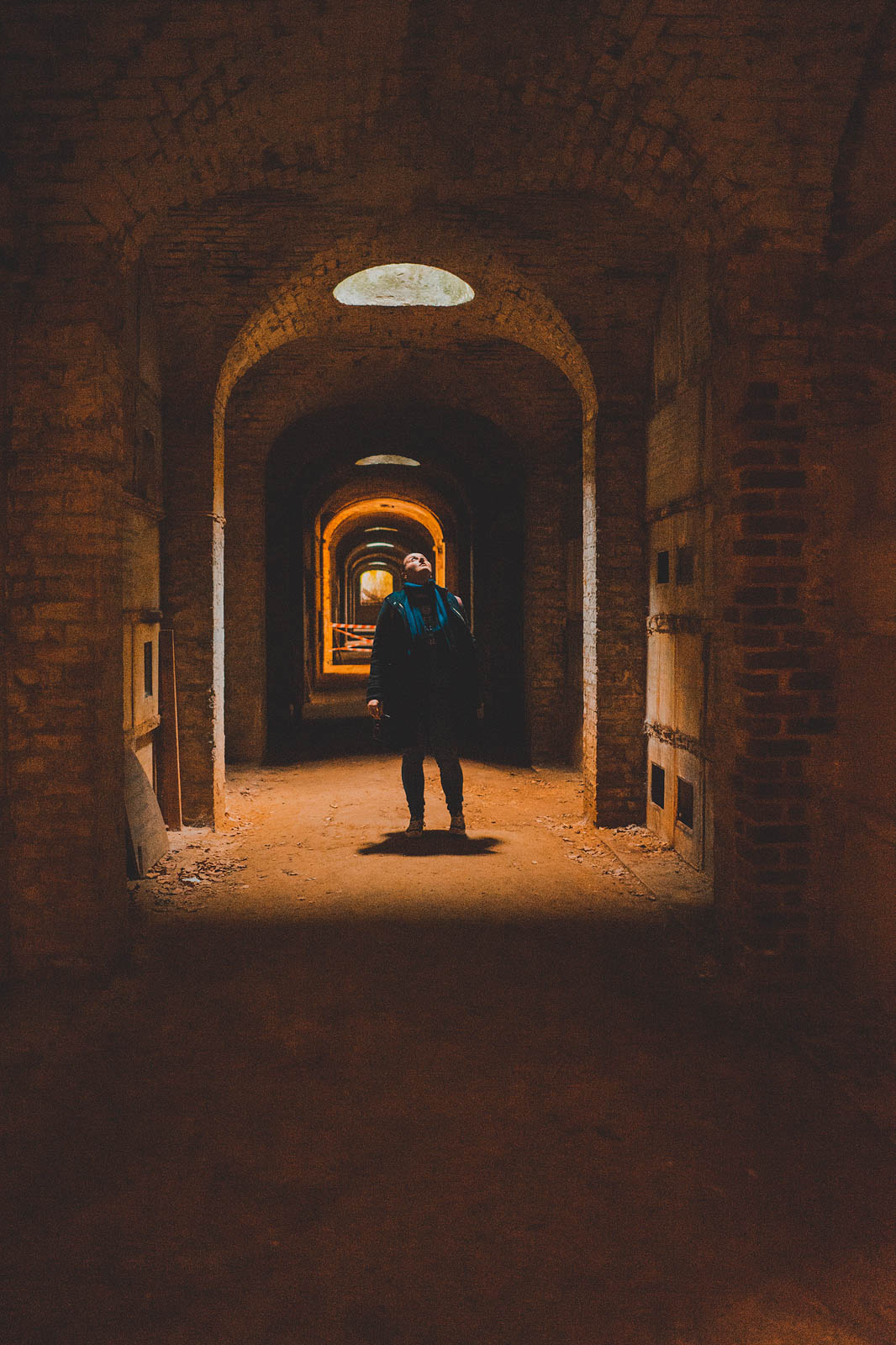
The Gothic-styled catacombs at Highgate are not at all what I expected – yes, they’re dark, but they’re not underground. In fact, they’re located at one of the highest points of the site! With over 55 vaults, long corridor with light beaming down , they make for a feast for the eyes. Whew, I honestly thought they’d be scarier!
Karl Marx’s Grave
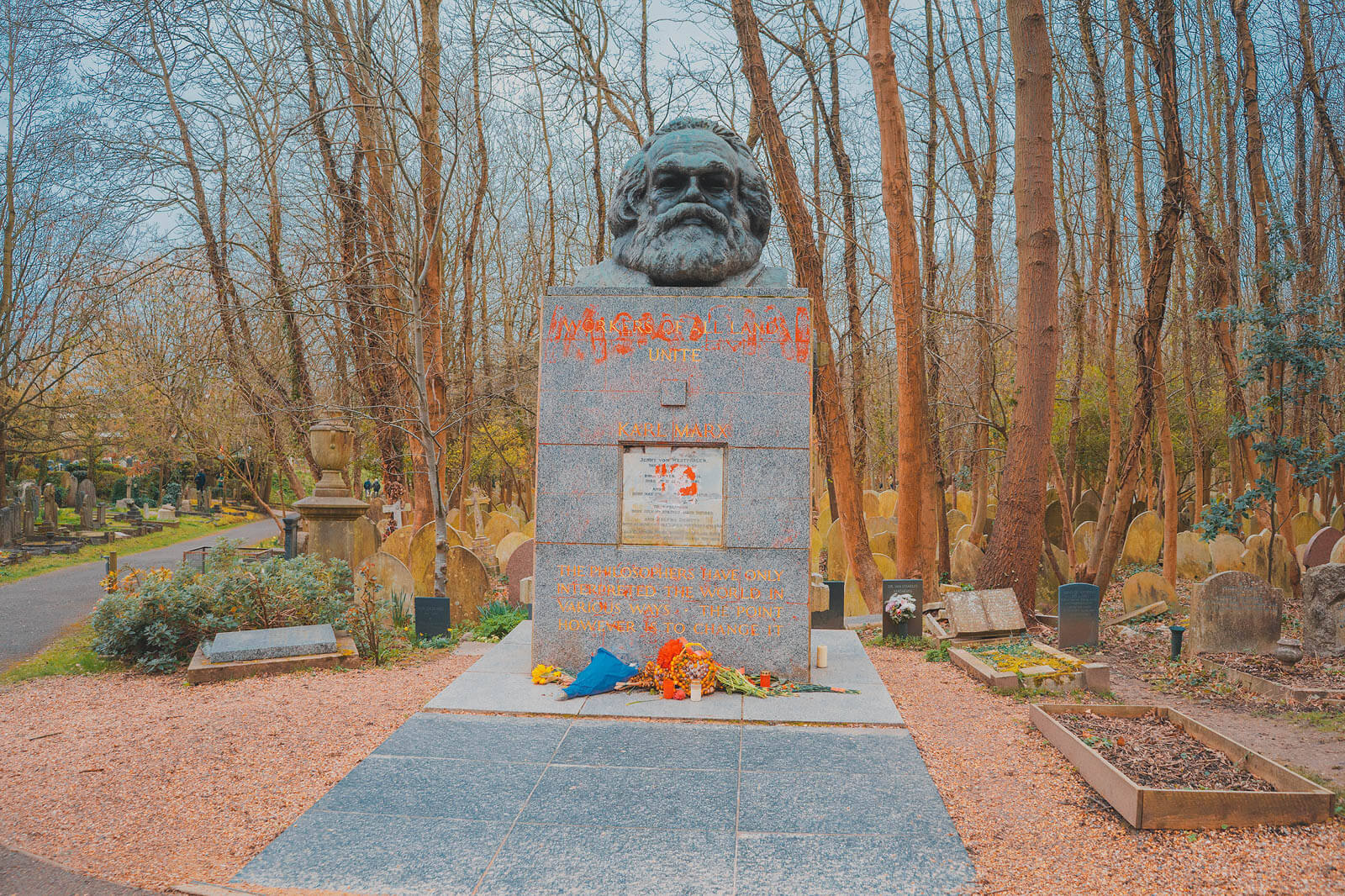
Karl Marx is buried at the East part of the Highgate Cemetery in London. He and his wife were actually “moved” to this site and reburied, while the monument was erected a couple of years later. You’ll see some quotes from his ” The Communist Manifesto” inscribed on the monument.
We visited Highgate about a month after someone vandalised the monument, so it was a quite disappointing sight to see all this hatred.
Map of graves at Highgate Cemetery
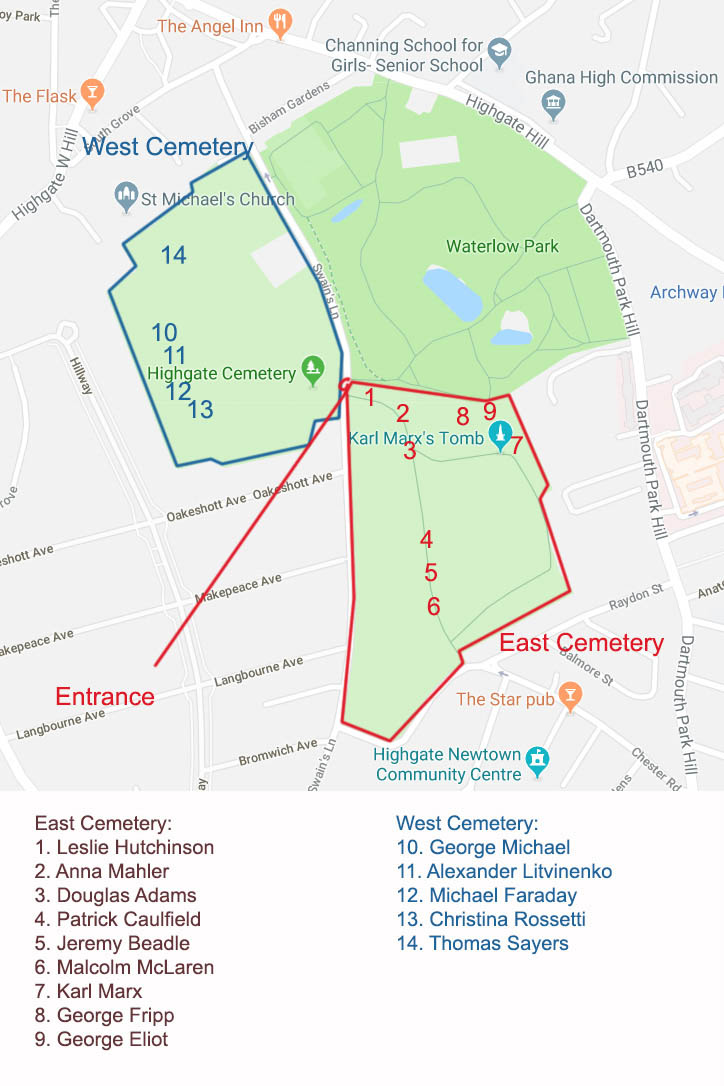
There are many, many curious burials at the famous London cemetery! Here is a bit more information on these celebrities:
Famous people buried in London – Highgate’s East Cemetery
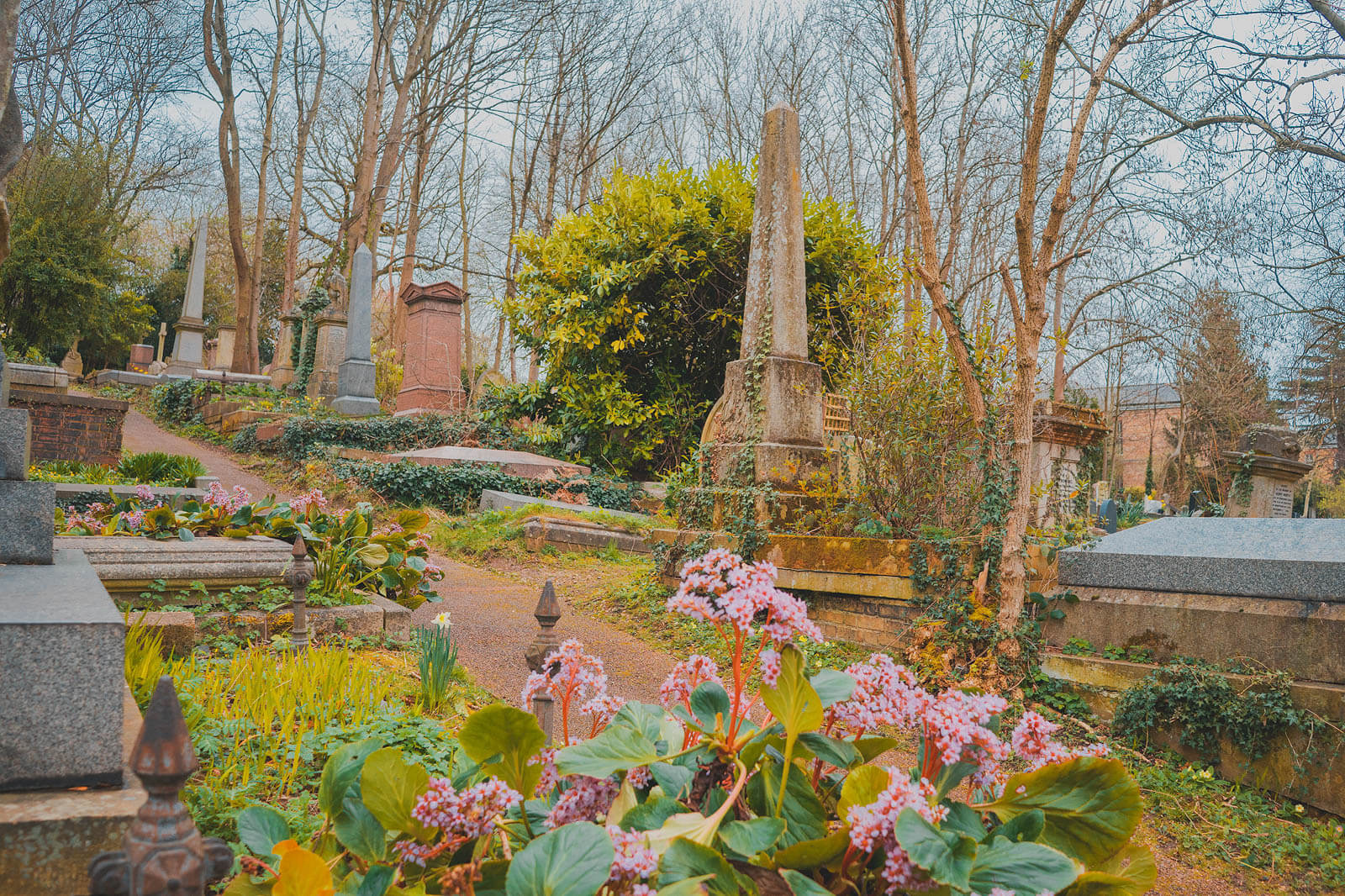
1. Leslie Hutchinson (1900-1969) – here lies one of the most famous cabaret singers of the 20s and 30s! As most solo artists, he began his career in a band, but even when he became famous, he was still struggling with racial prejudice. He fathered 8 children from 7 different women! Cause of death: phneumonia .
2. Anna Mahler (1904-1988) – even though her father was a composer (Gustav Mahler), the Austrian lady decided to forge her own path and studied art. She became a great sculptor and won prestigious awards around Europe! She, too, had 5 husbands (but only two children). Boy, these artists sure knew how to lead a bohemian life, didn’t they?
3. Douglas Adams (1952-2001) – The writer was mostly famous for his “The Hitchhiker’s Guide to the Galaxy” (if you haven’t gotten your hands on this piece yet, do so and you won’t regret it!). During the beginning of his career, he worked multiple jobs to support himself and later, his sci-fi hit radio show became his most renown work. Cause of death: heart attack .
4. Patrick Caulfield (1936-2005) – Caulfield was an English painter that loved painting still life. Some of his canvases were even held by David Bowie!
5. Jeremy Beadle (1948-2008) – Jeremy Beadle was one of the most famous English TV presenters, having been the face and heart of programmes as You’ve Been Framed and Game for a Laugh. Cause of death: cancer.
6. Malcolm McLaren (1946-2010) – an iconic behind-the-scenes figure for Britain, he worked and designed along his girlfriend, the infamous Vivienne Westwood. He did love music as well – the Sex Pistols were one of the clients he managed!
7. Karl Marx (1818-1883) – perhaps the most famous burial at Highgate, Karl Marx actually lived in a few countries. Born in Germany, kicked out of France, he spent the rest of his life in London, where he published Das Kapital.
8. George Fripp (1813-1896) – you can see works from this artist at The Tate London! Watercolor painting ran in his family – both his grandfather and his brother were painters.
9. George Eliot (1819-1880) – her real name was actually Mary Ann Evans! She lived with his father, but after his death she really immersed into writing – philosophical journals and editing famous London literary pieces. George Eliot was so lucky – her husband encouraged her to write and thus helped give light to some of her most famous pieces, as “The Mill of the Floss”.
Famous people buried in London – Highgate’s West Cemetery

10. George Michael (1963-2016) & Lesley Panayiotou (1938-1997) – George is buried next to his mother. He lived the Highgate neighbourhood and even bought a house there. However, bear in mind that it is currently not possible to see George Michael’s grave – it’s at a private inaccessible for visitors plot.
11. Alexander Litvinenko (1962-2006) – A former Russian spy, Litvinenko fled to England late in his life. He knew many secrets and this was, perhaps, the reason he started criticising his former bosses!
12. Michael Faraday (1791-1867) – one of the most famous people buried at the Highgate cemetery was Michael Faraday! His contribution of discovering electromagnetic induction was highly praised – he published many papers and gave lots of lectures. You can also thank him for inventing words like “electrode” and “ion”!
13. Christina Rossetti (1830-1894) – the famous poet, mostly known for her work “The Bleak Mid-Winter” was not a bohemian artist – she chose not to marry, but focus on her career.
14. Thomas Sayers (1826–1865) – even though he is not that famous today, he had one of the most legendary boxing matches back then! During the 19th century, boxing was not regulated. AT ALL! All punches were allowed, and he even dislocated his shoulder while fighting his opponent, while the opponent was rendered blind for a bit (but continued to fight…). Boxing was indeed so unregulated, that even audience members were often fighting each other. His was the biggest burial at the Highgate cemetery – the queues of the procession were over 3.5 miles long! You’ll recognize his grave as “the one with the dog” – he loved his dog Lion so much (the dog was even “leading” the procession), that he demanded a statue of him at his tomb.
Looking for more of pretty London? Check out the prettiest streets in the city!
How to get to Highgate Cemetery

By Underground
To get to to London’s famous Highgate cemetery, you can take the tube. The closest metro stops are Archway (a bit closer) and Highgate. They’re both on the Northern (black) line. You can also lookup the exact address: Highgate Cemetery, Swain’s Lane, London N6 6PJ.
There are 3 main bus stops that are near this London hidden gem – Parliament Hill Field (take the bus C2), Brookfield Park (take the bus C11) and Waterlow Park on Highgate Hill (143, 210 and 271 buses stop there).
If you’d like to visit the famous London by car, you’d be best off going in a weekday afternoon or on the weekend, when on-street parking is free in the surrounding streets. There are restrictions on weekdays in the period 10:00 am – 12:00 pm (noon), so try to avoid these.
Opening hours & entrance fee – the Highgate Cemetery

Visiting Highgate’s East Cemetery
You can enter the East side and explore on your own, but there is an entrance fee of 4 GBP. Here are the opening hours for this part:
Every day (including weekends): 10 am – 5 pm (from March to October) 10 am – 4 pm (from November to February)
You can also attend a guided tour, if you wish, for the East part – the total ticket costs 8 GBP and the tour is usually at 2 pm on Saturdays. Here’s some more information about it.
Visiting Highgate’s West Cemetery
If you’d like to see the West side of the Highgate cemetery, however, you can ONLY do so via a guided tour . The West side is also where you will see the all the famous sights that are usually shown in movies! It’s much more interesting, as it’s the older part of it. The guided tour costs 12 GBP per person (or only 8 GBP if you’ve already visited the East side and show your ticket!) and last about 75-90 minutes. If you’d really like to be prepared for your visit, you can look up a who is buried at the famous London cemetery and ask to see the specific grave and story.
The guided tour of the West side is also different every time! We had a few people visiting the Highgate cemetery for the 3rd time. The graves they take you to, the stories you’ll here – it’s unique and tailored to the group.
It’s a good idea to visit the West cemetery on the weekend – not just because of free parking on the nearby streets, but also because you wouldn’t need to prebook your tour – it starts every 30 minutes (10:30 am to 3 pm) on Saturdays and Sundays, but must be booked online for weekdays. Please bear in mind that the vast majority of tour guides are actually volunteers and don’t get paid! It’s really expensive to run a cemetery.
If you walk down the main street between the two entrances – you’ll find this stunning estate! Don’t miss it!

SUBSCRIBE TO OUR MAILING LIST

Rositsa Dimitrova
Explore breathtaking new destinations and immerse into different cultures through my lens <3 Travel guides, travel tips and lots of things to do in each destination!
You may also like
Charming cotswolds: bibury & more – england’s best..., capture london: 9 instagrammable restaurants, discover london’s unusual magic: 11 off-the-beaten-path places, game of thrones vibes in london: 14 must-visit..., nerdy london: 7 fun things to do for..., 8 london curious phone booths – hidden london..., 7 of the best streets in london you’ll....
Wow! I used to love visiting cemetries when I was a kid but this one is so intriguing. Will have to add it to the itinerary next time!
Ahh this one is definitely the most amazing one I’ve ever seen! I was honestly afraid it would be a bit creepy, but it was actually not at all! 🙂
Leave a Reply Cancel reply
This website uses cookies to improve your experience. We'll assume you're ok with this, but you can opt-out if you wish. Accept Read More
Here at Footsteps Tours Ltd we have been arranging coach trips since 2007. We pride ourselves in giving every booking the “personal touch” however big or small, which is why we have customers returning year after year.
Need Help? 01604 717939

- Short Breaks and Holidays
- All Day Excursions
- Boats & Trains
- Gardens & Stately Homes
- Royal Ascot
- Gift Vouchers
- Privacy Policy
- Terms and Conditions
- Poynters Coaches
Highgate Cemetery & free time in Highgate
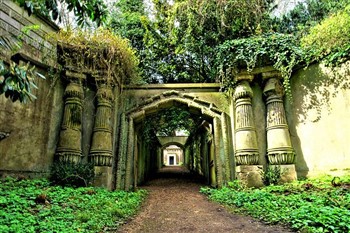
Includes private guided tour..
- Detailed Overview
- Other Information
- Pick-up Points
- Departure Dates
Explore the famous Highgate Cemetery, with a fascinating 90-minute guided tour of the private West Wing. You will see graves of many famous people in the West Wing, where many are laid to rest including George Michael, Jane Arden, The Rossetti family & Lucian Freud. See the Egyptian Avenue which is flanked by massive obelisks, and is lined with tombs. See the ancient cedar tree in the heart of the Circle of Lebanon. The tombs and Chapels are breath-taking and will truly blow you away. Hidden in the trees, you will find secret paths as you admire the historical graves, wrapped in ivy. You will then have free time to wander the East Wing, where there are the graves Karl Marx, Douglas Adams Jeremy Beadle and artist Patrick Caulfield.
You will have free time in Highgate to explore the area or enjoy a leisurely lunch.
Thursday 2nd May 2024
Thursday 12th September 2024
Adult - £50
Cock Hotel - 9.30am
Sixfields - 9.45am
Return coach travel from Northampton
Entry to Highgate Cemetery
Guided Tour of the cemetery
12.00 - Arrive at Highgate
TBC - Guided tour time slot
16.45 - Depart Highgate
19.00 - Return to Northampton
Please Note: All of our tours are subject to minimum numbers being met
Below is a list of pick-up points available on this tour.
It is not possible to display the map. This may be due to Google Maps not being supported in your browser.
Pick-up Point Times
To make a booking firstly select the correct number of passengers that will be travelling. This will perform an availability check to see that there is sufficient space on the tour. If the date you want is available select the Book Now button and you will be guided through the online booking process. If your date is unavailable you can use the Call Back facility to discuss further options.
There are currently no departures available on this tour.
The website timed out while searching for the departure dates. Please try again.
Keyword Search
Availability search.

Highgate Cemetery – Guided Tour of West Cemetery
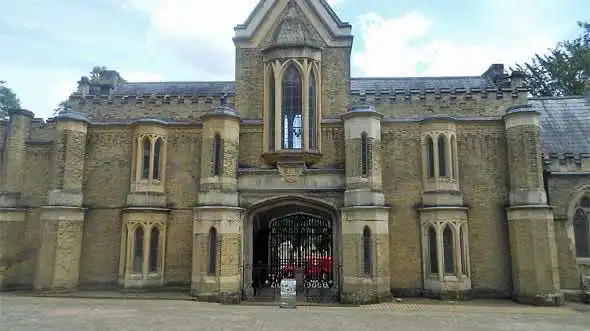
Good for kids? ★ ★ ★ Value for money? ★ ★ ★ Worth a visit? ★ ★ ★
“I am buying daffodils in a shop in Camden High Street. An oldish woman asks for some violets, but they aren’t quite fresh. ‘Never mind,’ she explains. ‘I only want to throw them down a grave.’” Alan Bennett, playwright (1985)
Craig ’s review… Highgate Cemetery is split into two and you can only enter the western half on a guided tour (I’m doing that later today ). But I thought I’d check out the eastern half first to see if it’s worth the money.
The East Cemetery
Everyone will tell you that it’s the lesser of the two but all of the plots on the first bend are monumental – some of the tombs wouldn’t look out of place in Westminster Abbey . One guy has surrounded himself by a choir of angels all weeping and wailing like he’s their long lost love. But they are stone women. And he is a bone man. Whatever loving he’s done in the past it is over now.
I’ve just noticed two ninety-year-olds buried in the same concrete casket but his name has worn out, whilst his missus lives on in bright white letters. The poor, downtrodden husband… “in affectionate remembrance of Maude”, it says, “and her loving husband” who shall remain nameless. Jesus Christ … I just got a scare as a fox burst out of the undergrowth and bounded over some stones about ten steps from where I’m standing. I had another little shiver five minutes ago when I looked out across the woods and saw the back of somebody’s head. I thought it might have been a punter in a moment of private prayer so I just stood there waiting for him to finish. But he didn’t finish. It turned out that I was staring at a statue.
I probably shouldn’t spend so much time in graveyards but I think they’re more beautiful than the parks. And the more they let it go, the more beautiful it gets. At first sight everything seems to be ruined – the trees are overgrown, the branches are snapped and cracked, and the gravestones are cracked and shattered too. Everybody gets buried twice in here: the first time in a coffin and then again in a knotted tangle of nettles, weeds and prickly black berries.
The gardeners have clearly given up in some places, and who can blame them? It’s not as if the dead will complain. In many ways they are the perfect customers. They fork out for a burial plot and then you don’t hear a peep out of them ever again. You’ve just got to remember to dig their hole deep enough so they can’t get out. That is what would worry me if I were a gravedigger. I’d be digging down another twenty-feet at least, just to make sure they can’t crawl out and ask for their money back.
The gardeners can’t get near some of the temples anyway because they’re wrapped around in thick thorns like chunky chains to keep the burglars out. You’d literally need a chainsaw to break in. Nature has even managed to crack some of the plaques and left them broke and busted. I’m looking at a tomb right now which even seems to be open! It’s a bit too dark to see clearly… but there appears to be some dirty planks of wood down there and a crinkled crisp packet that got washed in with the rain. But that’s how you get remembered, isn’t it? When I leave here today I will have totally forgotten the names of all of the rich people in their chained-up temples, but I will still have a soft spot for poor Lucy Edwards, buried in a broken box with a bag of cheesy Wotsits.
I’ve just come across one with a cold cup of tea on top. I suppose his mate must have sat down for five minutes and had a Thermos flask of tea to share with him. I really wanted to tip it all over the soil otherwise how is he supposed to drink it? But you can’t fiddle with things like that so I left it alone. He’s probably lying in his tomb shouting and swearing at his buddy for being so thoughtless.
This lady has a fair few knick-knacks on top of her box. Flowers and fir cones, candles and lanterns… maybe a lady who’s scared of the dark? Hence all the bright lights for nighttime. Nobody ever comes to light them, though – you only get so much love when you’re dead. They’ll place some candles on your grave but don’t expect them to catch the bus up to Highgate every night to light them. Once the sun goes down you’re on your own.
Karl Marx’s two graves
The most famous grave in the Eastern Cemetery is Karl Marx, but did you know that he actually has two tombs? The original one is worth seeking out with the map if you don’t mind traipsing into the middle (you will be given a map when you enter). If you manage to find it then congratulations – it’s not easy. It’s just a very faded slab of smashed stone nowadays, and much more in keeping with his working class sympathies.
Before I leave the Eastern Cemetery I just want to do something in case you decide to visit yourself. I want to find a lonely old grave that hasn’t received a visitor in years so we can both stand there and toast his health together. Are you up for that?
Okay… I have found the perfect grave. Grab a map from the main gate and follow the path towards Karl Marx, but take a right straight after the grave of Richard Smith (marked as ‘R Smith’ on the map). Keep looking towards the right as you walk down that overgrown path, about two tombs back from the front, and hopefully you will catch sight of a headstone with a handshake on top. I can’t even make out the name on it because it’s so faded and worn… is it William something? This guy is a nameless nobody and we’re probably the only visitors he’s had in a hundred years. But it seems like the perfect place for us to stop and shake hands through the pages of this book. Nice to meet you .
Guided tour of West Cemetery
Two hours later: I have just finished my guided tour of the Western Cemetery and it was easily the best cemetery I have ever been too. I think I’ve just discovered where I want to be buried. (I can’t wait to die now – that’s how great it is!)
There were about twenty people in my tour group which consisted mainly of old tourists in tailored shorts, and the guide was an elderly gent who was pretty much perfect for a tour like this – you don’t need comedy and Hollywood in a graveyard. He was slow talking and slow walking, which gave you plenty of time to enjoy the views.
Egyptian Avenue & Circle of Lebanon
The Western Cemetery is smaller than the eastern half and the biggest difference is its monumental buildings. The eastern half is mainly graves and tombstones, whereas the western half has got the Egyptian Avenue, entered through two giant obelisks. Then you come to the Circle of Lebanon which is a solid ring of stone doors buried in the side of a grassy hill, topped off by the spookiest tree in London. (If you’ve ever heard of the Barrowdowns in The Lord of the Rings then come here and re-live the scene.)
Inside the cemetery’s catacombs
After that he tempts you right inside the catacombs which is dank and black, save for a shaft of light shining through the skylight. All of the alcoves are stacked with rotting coffins sitting silent on the shelves. And add some spiders and flies and heat up the dusty air another ten degrees and that’s the catacombs.
So in conclusion then, and bearing in mind that Highgate isn’t exactly in the centre of town, would I recommend a visit? Well, the western half is easily the best cemetery I have ever been to, but I wouldn’t beat yourself up too much if you can’t get a tour ticket. I would be just as happy walking around the eastern bit. But then again I’m a morbid kind of bloke, who likes to spend his free time in a cemetery.
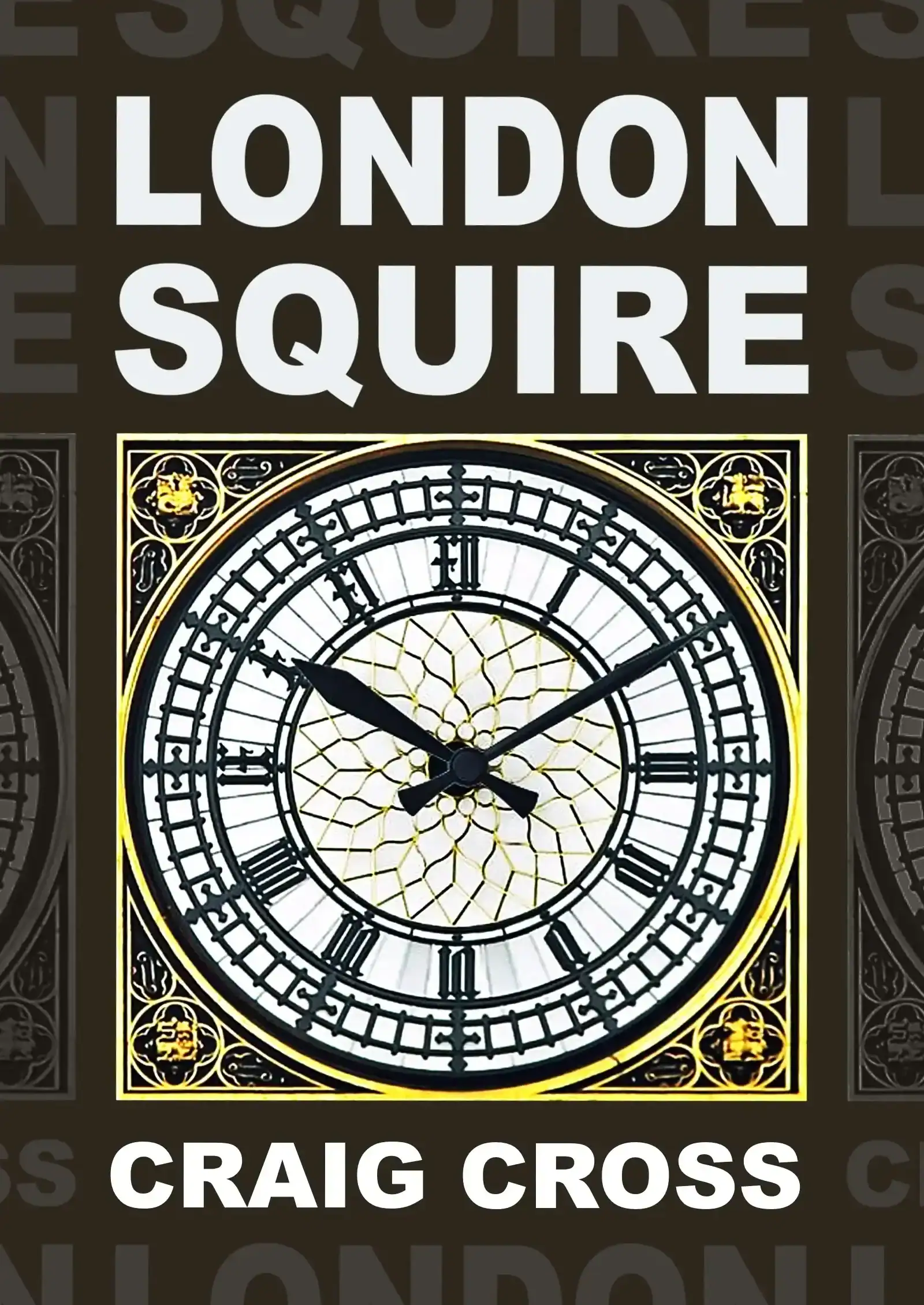
We also recommend… If you enjoy this then try Brompton Cemetery (catch a tube from Highgate to West Brompton )
Highgate Cemetery is ★ 3 in the Top 10 parks and gardens
Your comments and questions
Pete It would be nice if they let you walk around the West Cemetery on your own as well. Why don't they do that? There are only two ways to get into the West Cemetery... with a tour guide or an undertaker
Iain H My dad is buried on the west side so I have a pass but you still can't walk around without a guide but I do anyway. I was shocked to see Jean Simmons grave
Craig I guess it must be a health and safety thing. It's pretty overgrown around there (that's what makes it so beautiful, I think). But if you trip over in that undergrowth then they might not find you for weeks.
Mags Can you visit George Michael's grave? Where is it?
Craig Hi Mags. His grave is in the West Cemetery which is usually only accessible on a guided tour, but his grave is not part of the tour route. Apparently they're thinking of opening the West Cemetery up to unaccompanied people, but at the time of writing they're still thinking about it. But his family wanted to keep it safe from fans turning it into a shrine so his grave is unmarked - there's no name on the headstone. So unless you already know where it is there's no easy way of finding it.
Langdon A truly magical and mysterious place and we had a wonderful afternoon exploring the west half with our guide. The overgrown plants and trees just make it even more mysterious and I think it would lose all its beauty if they tidied it up. This is one garden that definitely doesn't need a gardener!
You must enable javascript to leave a comment
> Forum: London Landmarks, Attractions & Events
UK-based blog for and by travel-loving women

A Spirited Tour of Highgate Cemetery
What do a murdered Russian dissenter, the inventor of the electric motor, a past owner of the Observer, and the founder of Cruft’s dog show all have in common?
No, this isn’t the start of a terrible joke; Whilst all four led very different lives, they all share one commonality in death. They’re all buried alongside approximately 170,000 others in Highgate Cemetery.
A few weeks ago, we took a guided tour of Highgate Cemetery West. We have a lot of time for dark tourism (check out our blog post about it here ) but not everyone’s the same. Some may balk at the idea of walking amongst the dead, let alone making a day of it.
But leave your preconceptions at the tall, gothic gate, because Highgate Cemetery has so much to offer.
A guided tour of Highgate Cemetery West

We did a 12.30pm guided tour with approximately ten others, and they provide you with a free map to take with you.
Our tour guide, Julia, began by discussing some of the history of London’s burial practices. She explained how, in the 19th century, faced with a fast-growing population and overflowing parish churchyards (sometimes literally), London had no choice but to build new private cemeteries.
As part of this plan, the Magnificent Seven were established: seven large, new private cemeteries to house the capital’s dead. And yes, Highgate Cemetery was one of them, with the east side being added much later.
For those after the details, the tour took us onto Colonnade Path then Main Drive, through the Egyptian Avenue, around the Circle of Lebanon and into the Terrace Catacombs, then up Morgan Road and down onto Sayers Road. We then followed Faraday Path until we found ourselves back onto Colonnade Courtyard where we started. In essence, you go in a sort of loop, taking you past most of the ‘big hitters.’
Bringing the dead back to life (through story!)
The grave of James Selby, a coach driver, was the first we saw on the tour. He once won a £1000 bet by driving from London to Brighton and back in under eight hours. Accordingly, his grave features a coachman’s whip and horseshoes.
Lots of the graves in Highgate have symbols or sculptures representing the life of the person buried there. For example, the large monument to General Sir Loftus Otway, an accomplished cavalry commander, is adorned with a fence of cannons and (questionably shaped) cannon balls.
On just the other side of the path to Otway, is the grave of Alexander ‘Sasha’ Litvinenko, a brave former Russian spy who spoke out against Putin, the KGB and the FSB. Litvinenko publicly accused Putin of the murder of his friend, journalist Anna Politkovskaya, on Putin’s birthday in 2006. Just 24 days later, Litvinenko was poisoned by Polonium-210, one of the deadliest substances on earth, and after three weeks in hospital, he died.
I’m fascinated by the life of Sasha Litvinenko and his grave was one I especially wanted to visit, so I was grateful that on the tour you do get the chance to pause and pay your respects.
Highgate Cemetery’s first ‘resident’
However, if you’re visiting to see the more historical headstones, then the next stop on the tour, the grave of Elizabeth Jackson, might be of more interest to you.
Jackson died in 1839 of consumption, becoming the first burial in Highgate just six days after its consecration. At this point, you might be wondering why her grave wasn’t at the start of the tour. Well, people weren’t buried in chronological order, they were buried in whatever plot their families chose to buy.
Burial rights were mostly sold in perpetuity, and it’s likely that Elizabeth Jackson’s widower just bought the best plot for her that he could afford.
Not far up from Elizabeth Jackson’s grave is that of Charles Cruft, founder of the famous dog show. Our guide told us that according to his wife, Mr Cruft really preferred cats, despite his legacy.
Egyptian Avenue and the Circle of Lebanon
After Cruft, the tour takes you through Egyptian Avenue. This is some of the most stunning architecture you will see in Highgate Cemetery, as well as representing the Egyptomania obsession of the nineteenth century.
Pharaonic pillars and towering obelisks mark the entrance to the walkway, which with trees now towering over it has become somewhat of a tunnel, making the walk through it very dark. It was for that reason that many were reluctant to purchase burial rights on Egyptian Avenue: they didn’t want their burial sites to be dark and dingy.
The Victorians were morbid, but apparently not that morbid.
Coming out of Egyptian avenue takes you around the Circle of Lebanon, and to the next stop on the tour.
Marguerite Radclyffe Hall was a novelist and poet, whose book The Well of Loneliness about lesbian relationships was banned in 1929. We’re unsure what pronouns Radclyffe Hall would’ve used today, but as an adult Hall often went by the name John and wore men’s clothes (we absolutely encourage you to go and google images of Hall, they’re fantastic ). Hall is buried here, in the Batten family chamber, as a result of a relationship with singer Mabel Batten.
Venturing out of the Circle of Lebanon can only be done via stairs (damn you, Victorians, for your lack of wheelchair access! Let your tour guide know if you need assistance, ours was only too happy to give us extra time to climb the stairs) which take you onto the top of Circle.
Our guide told us about the ancient Lebanese Cedar tree which used to grow in the centre of the circle, giving it its name. The tree was estimated to predate the cemetery by at least a century but became diseased and had to be felled in 2019. Don’t despair though, a sapling has been planted in its place, and who’s to say how many hundreds of years this new tree will stand!
Accessibility notes For disabled visitors, the west side does have some steps and isn’t really wheelchair accessible, but there is occasional seating and you are allowed to bring a folding chair or stool with you. However, the east side is mostly tarmac, there are no steps and much more seating.
Characters and catacombs

From this vantage point on top of the circle, you’ll see that Charles Cruft is far from the only animal lover to reside in Highgate Cemetery.
A large sculpture of a lion sits atop the grave of George Wombwell, a ‘menagerist.’ Wombwell’s Travelling Menagerie started when he purchased two large boa snakes off of boats that arrived in London from South America, and he made a profit off of exhibiting them in local taverns.
During his menagerie career, Wombwell exhibited elephants, giraffes, lions, apes and all kinds of exotic animals the people of Victorian England had never seen before. Wombell passed away in 1850, when he was buried in a coffin gifted to him by Prince Albert, beneath a statue representing his most docile lion, Nero.
One excellent reason to do a guided tour of the west side is the access to the Terrace Catacombs, which can only be accessed on a guided tour. These catacombs aren’t particularly dingy or musty as one might expect, but it is quite dark (and a little creepy seeing the coffins themselves).
One particularly interesting resident of the catacombs is Robert Liston, a British surgeon famed for his ability to perform amputations in record time – for surgery without anaesthetic, speed was a blessing. There are many gruesome stories about Liston, including one operation that ended in a 300% mortality rate !
Next on the tour was the Beer Mausoleum. Julius Beer was a German-born financier who made his fortune on the London stock exchange, and later bought The Observer newspaper. He had two children, and only had the family mausoleum built after the tragic death of his eight-year-old daughter, Ada. A glimpse inside the mausoleum shows a sculpture of a young girl being protected by an angel.
Julius joined his young daughter in the Beer mausoleum just five years later.
The winner of the biggest funeral goes to…

Sayers Road is named after the most famous man buried along it, Thomas Sayers. Sayers was a bare-knuckle fighter whose career was a series of successes, only brought to an end by his match with the American champion John Heenan, in what could be called boxing’s first ever world championship.
Said fight was ended by the referee after hours of spectacle (including the crowd at one point invading the ring) but was ultimately declared a draw. Sayers would never fight again, as fans raised £3000 so that he could retire, as the public saw the devastating effects of the vicious fight.
The two men actually became friends, and it was reported that Heenan later visited Sayers in the final months of his life.
Sayers funeral was the biggest Highgate has ever seen, with a reported 100,000 attendees. On his grave is a statue of his beloved dog, Lion, who sat alone in a pony cart as part of Sayers’ funeral procession. Lion was a huge black mastiff and was referred to by many as the ‘chief mourner’ of Thomas Sayers.
Final destination(s)

The final headstone we saw on the tour was that of Michael Faraday, a chemist and physicist whose discoveries formed the basis behind the electric motor. He was instrumental in the study of electromagnetism and is now thought of as one of the most influential scientists in history.
In fact, Alfred Einstein credits Faraday with being the inspiration behind the theory of relativity.
The last stop on the tour was the Goldhammer sepulchre, Highgate’s only 21 st century mausoleum, completed in 2019 and built from Indiana limestone, just like the Empire State Building.
Its 1920s-inspired design features pomegranates on the tall, metal doors, and the whole thing looks pretty imposing. It’s actually quite jarring to see such a newly-built sepulchre, and is the first of its kind to be built in Highgate in over 90 years.
After the tour was finished and we were all firmly back in the land of the living, we sat for a nice cuppa in the west side courtyard and went for another short walk by ourselves.
George Michael’s grave is not included on the tour, as his family wish for privacy, and have only recently agreed for the tour guides to point out his resting place at all. We had a fan in our group, so we went to his grave so she could go and pay her respects. Photography of George Michael’s grave is prohibited following the wishes of his family, and he is interred under his birth name, Georgios Panayiotou.
What we thought

We had such an interesting time at the cemetery and could easily have spent much longer there. An adult tour ticket is £15, which includes the tour itself, plus entry to both the west and east sides of the cemetery, and exclusive entry to the Terrace Catacombs.
Julia, our fantastic tour guide, thanked us profusely for taking the tour and supporting the Friends of Highgate Cemetery. Highgate spent a number of years abandoned, and even now it relies on ticket proceeds for the upkeep. It is not publicly funded despite its incredible historical importance and its status as a nature reserve.
The guides are volunteers, but their incredible amount of knowledge and their friendly approach would have you thinking they were professionals through and through.
If you’re planning to visit you should know that photography is allowed in the cemetery, but the rules of basic common sense and compassion apply. The guides are friendly, but they will be stern if they need to be!
A visit to the cemetery doesn’t have to be a macabre and morbid affair, in fact it can be moving, educational and enjoyable. We visited a cemetery in Bristol back in 2019, which was a similar experience.
Ultimately the most important thing is to appreciate the guides, respect the site and keep alive the memories of the buried.
We learnt a lot about Victorian London and prominent figures often forgotten, all whilst supporting the preservation and upkeep of one of the world’s most important (and in our opinion, beautiful) cemeteries.
Why not save this for later?

You May Also Like

Dining at Hotel TerraVina

48 Hours in Ely

Afternoon tea at Buddha Bar, London
One comment.
A great day out, and thoroughly recommended!
Leave a Reply Cancel reply
This site uses Akismet to reduce spam. Learn how your comment data is processed .
Type and hit Enter to search
Latest news, the bt tower transformation: a journey from communications beacon to luxury hospitality haven, london’s hidden colosseum: a journey through time at the roman amphitheatre, green invaders: the flamboyant parakeets of london’s skies, discovering london’s culinary night owls: a guide to late-night dining, discovery of highgate cemetery.
Highgate Cemetery is one of the most famous cemeteries in London. One of the Magnificent Seven and one of the world’s finest examples of a garden cemetery, it is one of the most fascinating places in Highgate.
Stroll the winding paths and stand among the ash trees to pay your last respects to your favorite author. Or simply visit to learn more about the cemetery on a guided tour.
It may not be the oldest cemetery in London. Still, it offers a spectacular setting and is one of London’s most unusual – and interesting – day trips. Discover more with this insider guide.
A cemetery is always a somber place, but Highgate is also a solemn place. You’ll recognize parts of it if you’ve seen Francis Ford Coppola’s “Dracula” or the more recent Diane Keaton film “Hampstead” – starring Brendan Gleeson as a man who lives in a hut in the cemetery, which is also the nearby park Hampstead Heath. Writers George Eliot and Douglas Adams, ’60s and ’70s punk icon Malcolm McLaren and painter Patrick Caulfield are among the many buried in East Cemetery.
Created in 1839, the foliage-covered West Cemetery is undoubtedly the most atmospheric section and well worth a visit. Shady paths lead past gloomy catacombs, magnificent pharaonic tombs, and the graves of famous people such as poet Christina Rossetti, scientist Michael Faraday, and poisoned Russian dissident Alexander Litvinenko.
Why should you visit Highgate Cemetery?
Highgate Cemetery is the final resting place of many famous writers, musicians, philosophers, and wealthy people. In an eerie gothic setting, it has incredible architecture, mausoleums, and individual graves. In other words: Why wouldn’t you visit it?
Although both sides of the cemetery are now open to visitors with their own guided tours (in the past, you could only enter the Western Cemetery as part of a guided tour), there are still areas of the Western Cemetery that are not accessible and are best explored with a guide.
If you want to visit only one part of the cemetery (separate tickets are available for both), you should opt for the Western Cemetery, which contains the most impressive architectural elements of the Highgate Cemetery, including the Chapel, Colonnade, Egyptian Alley, Circle of Lebanon, Terraced Catacombs, and Julius Beer’s Mausoleum.
If you want to visit a specific tomb, contact the cemetery before making your reservation to arrange a customized tour.
Highgate Cemetery Tours
A guided tour of Highgate Cemetery is well worth the additional cost. Your guide will provide insight and knowledge about the history of this 19th-century cemetery.
You’ll need to purchase your ticket online in advance, as they are not sold at the cemetery.
Admission times help manage the number of visitors, but I recommend arriving 15 minutes early to avoid potential lines.
The West Cemetery Guided Tour tickets are £15 for adults and £8 for children. In addition to the Highgate West Cemetery tour, you can visit East Cemetery on the same day.
If your tour is in the last half of the day, I recommend visiting East Cemetery before your tour. The catacombs of Highgate Cemetery are only accessible during tours.
Are you or a family member deaf? On select weekends, you can book a Western Cemetery sign language tour. The British Sign Language interpreter provides a 70-minute interpretation in spoken English in addition to the guided tour.
The East Cemetery is more accessible to wheelchair users because the paths are mostly paved and have slight inclines. The West Cemetery is slightly less accessible due to steep paths and two flights of stairs, but it has a handicapped-accessible restroom.
Famous graves at Highgate Cemetery.
Of the famous graves in Highgate Cemetery, Karl Marx’s is probably the most famous. Learn more about these important figures and their gravesites below.
The eastern section of Highgate Cemetery is the final resting place of Karl Marx. Born in Trier, Germany, in 1818, Karl Marx studied law and philosophy to form his political philosophy of socialism, which has shaped the modern world.
You’ll notice that his tomb has a colossal bust. The carved head sits on a granite tombstone with the inscription “Workers of all countries unite.”
Charles was initially buried in his wife’s grave. The monument with his bust was placed in a more prominent location in 1956. This site is located in the East Cemetery and is not visited as part of guided tours, so you should seek it out on your own during your tour.
George Michael
The funeral of British singer and songwriter George Michael at Highgate Cemetery West resulted in numerous fans flocking to his grave. The tiny 30-seat chapel hosted a private service with family and close friends in March 2017.
George’s final resting place is next to his mother in the family’s private plot in West Cemetery. A gray stone cross adorns the site, and white flower blossoms surround it.
If you would like to visit George Michael’s grave, you must make a request, as it was not visited during the guided tour.
George Eliot
The literary work of author George Eliot is covered in many high schools. It will be no surprise to these students that the author was a woman who wrote under a male pseudonym.
At the time, female authors could publish. Still, Evans wanted to escape the stereotype that women only wrote about lighthearted or romantic subjects. And so her works, which include Middlemarch, Silas Marner, and Daniel Deronda, were published under a male pseudonym.
The pseudonym and her real name – Mary Ann Evans – are on her tombstone.
She rests next to her extramarital partner George Henry Lewes, from whom she took the pseudonym. Evans chose Eliot’s last name because it sounded pleasant and was easy to pronounce. How fitting.
Michael Faraday
Despite a simple tombstone shaped like a pointed arch, Michael Faraday is one of the most influential people buried in the Western Cemetery. His research on electromagnetism and electrochemistry formed scientific foundations that are still valid today.
Although he enjoyed little formal education, Michael Faraday left an important legacy worth celebrating.
In his honor, the unit for the amount of charge stored in a capacitor is called a “farad.”
Douglas Adams
If you’re a fan of the six books in the Hitchhiker’s Guide to the Galaxy series, you may want to visit the grave of author Douglas Adams. The author, who died in 2001, was an English writer, radio drama comedian, and musician.
Adams was fond of the band Pink Floyd and shared the title of his biography with the name of the song “Wish you were here.”
Fans worldwide celebrate the author’s life on a day known as “Towel Day,” a humorous reference to Douglas’ work.
Julius Beer
Julius Beer was a German-born English businessman who made his fortune on the London Stock Exchange. He owned The Observer newspaper from 1870 until he died in 1880.
Julius Beer’s mausoleum is one of the most spectacular in the Western Cemetery. The millionaire newspaper owner spent £5,000 to erect what was then the most impressive monument in the cemetery. The four walls consist of arches with intertwined glass windows.
Inside the structure is a sculpture of an angel comforting a child, representing his daughter Ada, who died at age 8. In addition to his daughter, Julius, his wife, brother, and son also find their final resting place in the Beer Mausoleum.
Malcolm McLaren
Malcolm McLaren’s tombstone reads, “Better a spectacular failure than a harmless success.” Malcolm was an English entrepreneur, artist, musician, and clothing designer.
He is best known for his work as a promoter and manager of the bands New York Dolls and Sex Pistols. His fans celebrate Malcolm’s contribution to the London music scene.
His final resting place is on the east side of Highgate Cemetery, where he died in 2010. On his tombstone is a bronze death mask under his initials.
Herbert Spencer
Ironically, the ashes of political theorist Herbert Spencer lie almost directly across from Karl Marx in the East Cemetery. His theory of Social Darwinism is the antithesis of Marx’s socialist theory.
This man’s final resting place is marked by a modest rectangular granite headstone.
Herbert Spencer believed that the principles of evolution apply to human societies and the development of the human species over time. The phrase “survival of the fittest” refers to him.
The story of the Highgate Cemetery vampire
Just how haunted is Highgate Cemetery? Not surprisingly, the 19th-century cemetery is one of the most haunted places in London.
In the 1970s, a story emerged in the media about a vampire roaming the place, causing a stir among believers in the supernatural.
The story begins with the discovery of several animals found dead and drained of blood near the cemetery.
The news spread throughout the country, leading to two men, Allan Farrant, and Sean Manchester, vying to catch the culprit.
Allan Farrant vowed to end the vampire’s life. So he set out on the full moon evening to drive a wooden stake through the vampire’s heart.
Ironically, police caught Farrant that evening because he was on the fenced property for an unauthorized purpose.
Experts on supernatural phenomena at the time criticized Farrant for using a wooden stake and claimed it was just something out of Dracula.
Manchester’s bids were no more successful. Instead, he claimed to have found a suspicious corpse in one of the vaults. Still, he left it amid garlic and incense instead of driving a stake through its heart when one of his companions advised him not to.
Practical tips for visiting Highgate Cemetery.
The cemetery can be muddy, and some paths are steep, so wear sensible footwear. Except for assistance dogs, no animals are allowed in the cemetery.
You are welcome to take photos during your visit, but not when a funeral is in progress or family members are visiting their loved ones.
How to get to Highgate Cemetery
Due to limited street parking and restrictions on surrounding streets during the week, reaching the cemetery on foot, by bicycle, or by public transportation is advisable.
By bike: there is a bike rack outside the gates of West Cemetery and another further down the hill if it is complete.
By subway: get off at the Archway subway station. To reach Highgate Cemetery, walk or take bus 143, 210, or 217 to Waterlow Park and walk through the park to the entrance.
Street: Swain’s Lane is a one-way street that is traveled from the south. Please note that there is no on-site parking, but there is a small amount of handicapped parking in front of the entrance.
Bus: Get off at the C2 or C11 bus stop before walking north along Swain’s Lane to the entrance. Alternatively, you can take bus 143, 210, or 217 and get off at Waterlow Park stop before walking through the park to the Highgate Cemetery entrance.
My conclusion & recommendation
The guides for both the East and West Cemeteries are fantastic. I took the tour of the West Cemetery, and Liz, the guide that day, was brilliant. She provided great information about the cemetery, how the graves were built, and where the stones came from, and she offered insightful details about the lives of the famous residents. It is both fascinating and morbid to read the final inscriptions on the various memorial stones, and you leave the cemetery with a deep respect for the truly lived lives.
Highgate Cemetery is a must-see, a welcome, inexpensive, and somewhat different outing from London’s brilliant museums and art galleries. It is incredibly moving.
Share Article
Meet Sascha, who fell in love with London many years ago and has made it his mission to share his passion for the city with the world. Sascha is a London Expert who has spent years exploring every corner of the city, from its famous landmarks to its hidden gems. He now uses his expertise to help travelers plan their perfect London vacations, offering tips and advice on everything from the best restaurants and hotels to the most interesting neighborhoods and cultural experiences.
Other Articles
Motel one tower hill review, shangri-la hotel at the shard london – the review, related posts, discover the hidden gems of london: alternative sights and experiences.

- X (Twitter)
Highgate Cemetery tour & London in the 19th century
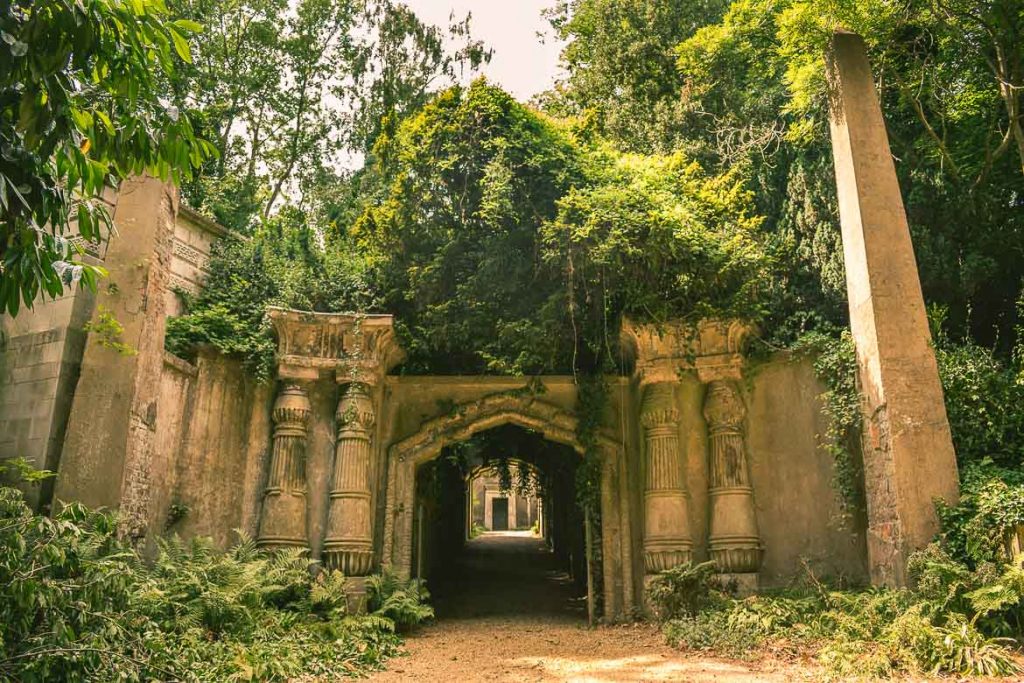
Last updated on May 8th, 2020 at 12:47 pm
Who can argue that London is an absolutely fascinating city? We are utterly in love with the UK capital and we never miss an opportunity to plan a trip there. During our first trip to London a few years back, we made sure we ticked most, if not all, of our bucket-list things to do there. So, on our second time in London, we decided to add somewhat quirkier, out of the ordinary experiences to our itinerary. This is why we joined a Highgate Cemetery tour and we’re very happy we did. It turns out that this was the best way to uncover many of the secrets of our beloved city’s dark past.
A little bit of history: London in the 19th century
In order to understand the significance of Highgate Cemetery, we need to place it within the context of the period in which it was constructed. The 19th century was utterly important to the city of London and Britain as a whole. It was then that London was both the largest city and the most important port in the world. During that period, London saw rapid changes as the city’s population grew from 1 million in 1801 to 6.2 million a century later. This period is also known as the Victorian Era. That said, the latter coincides with the time of Queen Victoria’s reign, which was from 1837 to 1901, rather than span the entire length of the 19th century.
Throughout the 19th century, London was gradually becoming a shining modern city. Railways, the underground and iconic monuments such as the Big Ben and the Tower Bridge were constructed. Victorian London was the ultimate super power of the time and the most important trading capital. Yet, while the city grew into a wealthy financial and political centre, 19th century London was also a city of poverty. Alongside the rich and powerful who flourished, millions who had come to the city to work lived in poverty in overcrowded and unsanitary slums.
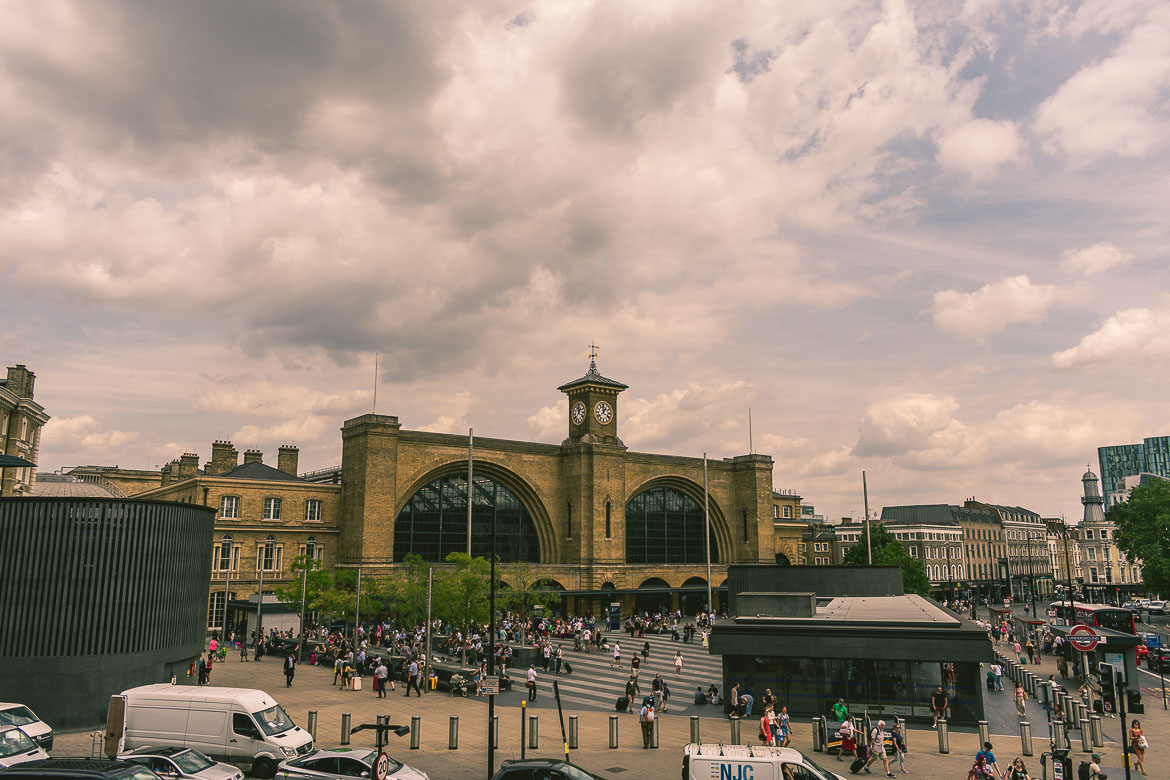
A look into Victorian London: 19th century architecture
The best way to understand life in Victorian London is by having a look at the architecture of the time. The splendour and power of 19th century London reflect on imposing constructions such as the King’s Cross Station and neighbouring St Pancras Station buildings or the beyond words beautiful Renaissance Hotel.

However, there is also a very dark side of London in the 19th century. A few metres away from those majestic buildings, reality wasn’t as glittering. Millions of souls lived under unbearable conditions in the slums surrounding the shining train stations. Epidemics were common so it’s no wonder that hospitals specializing in certain diseases were erected.

Frequent epidemics meant a rapid increase in the number of deaths, too. Therefore, although it was customary to bury the dead in small parish churchyards, the latter soon became way too overcrowded and posed a threat to public health. The need to construct modern cemeteries in the outskirts of central London was prominent. Inspired by the gorgeous Père Lachaise Cemetery in Paris, seven large private cemeteries were established in London during the 19th century. Many years later, in 1981, the architectural historian Hugh Meller called these The Magnificent Seven Cemeteries . This has remained their unofficial name to this day.

Highgate Cemetery tour
Highgate Cemetery opened its doors in 1839. It was the third of the Magnificent Seven Cemeteries to be built in London as a solution to the overcrowding in parish graveyards. It soon became a very popular place for burials. Highgate Cemetery comprises two sections, the East and the West. There are about 170,000 people buried in its grounds. Nowadays, Highgate Cemetery is still used for burials but these areas are not open to the public. Apart from its fascinating history, Highgate Cemetery is very much worth a visit for the notable people buried in its grounds, the superb architecture of its monuments and its exceptional natural scenery.
How to get to Highgate Cemetery
The best way to get to Highgate Cemetery is by public transport and, specifically, by tube. The closest station is Archway. From there, it is a pleasant, yet uphill, stroll to the Cemetery, the last part of which is through the marvellous Waterlow Park. For further information on how to get to Highgate Cemetery, click here .
West Cemetery
A visit to the West Cemetery is possible by guided tour only. The latter lasts 70′ and costs £12/adult. Entrance to the East Cemetery is included in the price as well. Joining the guided tour on a weekday is by reservation only. On the contrary, booking is not possible at weekends when tours run every half hour on a first come first served basis.
The West Cemetery abounds in architectural wonders set among tall trees and wildflowers in the constant company of birds and small animals. Our knowledgeable and absolutely fun to be with guide, Peter, recounted stories of the famous (but also the less famous) people who are buried there while we marvelled at masterpieces such as the Egyptian Avenue , the Circle of Lebanon , the Terrace Catacombs and the Mausoleum of Julius Beer . As we strolled along the totally covered by thick foliage alleys and marvelled at wonderful sculptures, the unique ambience of an authentic Victorian cemetery got us under its spell.

East Cemetery
Contrary to what happens at Highgate Cemetery West, it is not mandatory for visitors to join a guided tour in order to roam around the East Cemetery. As mentioned above, the £12 ticket grants access to both the East and the West Cemeteries. However, if you only feel like visiting the East section alone, a ticket costs £4/adult. This includes a map of the grounds as well.
By far the most famous resident of the East Cemetery is philosopher Karl Marx, the renowned Father of Socialism. His tomb has become a place of worship for socialists from all over the world, while many of them have gone so far as to be buried near him in Highgate Cemetery East. Other famous people buried there include the novelist George Eliot and the Sex Pistols manager Malcolm McLaren. The list, of course, is endless.


Why visit Highgate Cemetery
But why on earth would we want to visit a graveyard during our holidays? , you may ask yourselves. Well, it’s an absolutely enchanting place would be our simple and honest response. Our stroll around the grounds of this old cemetery taught us so much about London in the 19th century, the city’s most significant time period. We learnt a lot from our guide himself but, also, this tour motivated us to read more about this splendid but also dark period in the city’s history. Furthermore, Highgate Cemetery is home to gorgeous architecture set in the most serene natural surroundings. All in all, a Highgate Cemetery tour is a fantastic way to escape the hustle and bustle of the big city, while, at the same time, delve into the core of the events, instances and people that made London the great city we know and love today.
Planning a trip to the UK capital? Check out our favourite self-guided London walk here!
Like our article? Pin this image!
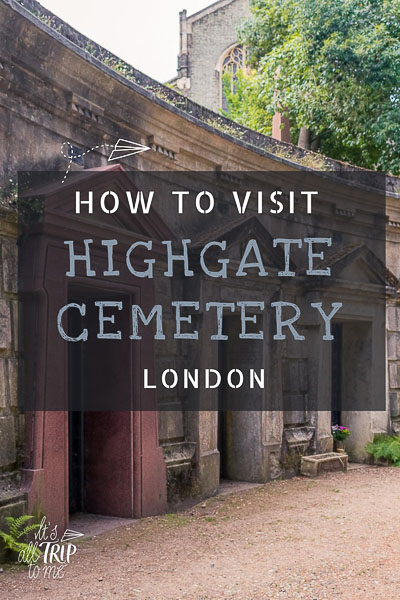
Related Posts
London in 5 days: the best itinerary for first-time visitors, best villages in the cotswolds: a complete guide, south bank walk: best of london on foot, 53 comments.
Pingback: Weird Things to Do in London from Pet Cemeteries to Stunning Street Art!
Hey good job on this one! I always enjoy walking tour aside from its relaxed slow-paced rhythm it is also informative and rich in culture-understanding opportunities.
Thank you Jonathan! We are very fond of walking tours ourselves 🙂
The walking tour sounds like such a great tour! I love all the photos, thanks so much for all the information. I am saving this post to refer back to before I visit. Thanks again.
Hey Nicole, thank you so much! It’s a great pleasure to know that we inspired you to take this tour 🙂
I was in London a few days back and I absolutely loved it. I have missed a couple of things mentioned in your post but this gives me a reason to return to London.
Hi Saniya, thanks! It’s OK to leave a few things out of your itinerary because this way you make sure there will be a next time 😉 We do it too!
I always love to visit places with history. Buildings holding historical background always appeal to me. Would love to visit Victorian London sometime in person.
Hi! Thanks for your comment. We also love learning history while travelling!
London architecture never fails to amaze. Theirs is one of the best in the world.
Hey Nina! I couldn’t agree with you more!
I live in London, and didn’t know any of these facts! The city is renowned for its incredible architecture, but I didn’t know the story about Victorian London. Highgate is somewhere I frequently visit, but I’ve never been to the cemetary!
Hi Lisa! The thing is we all tend to overlook our hometowns. But they do deserve our attention. I constantly try to find hidden gems and lesser-known beauties in my hometown Athens 🙂
I love the Victorian architecture of London, especially the many railway stations and related viaducts.
Hey David, I agree. They are really beautiful!
Love this! There are so many ways to explore London and I think you’ve gone a really fascinating direction with this. I’d love to do a tour like this the next time I’m in London 🙂
Thank you Erica! It really was a special side of London that we enjoyed immensely. Don’t miss it!
I love history and I love places with so much history in them. I am an absolute fan of London. And yes, so much to see. You can never finish it in one go. I loved the concept of a Victorian tour. Will try it next time I am there.
Hey Soumya, thanks for your comment. Yes, London keeps calling us all back 😉 As for the Victorian tour, go for it! It’s really special!
It’s been many years since I have been to London, but will certainly do this tour when I go again. I love tour companies that are dedicated to one particular time in history. What a great experienc.
Hi Alison! Thank you for your comment. It really is a special experience you shouldn’t miss 🙂
This post shows me that some of the most beautiful places in the world are places you’d never think to visit! Love this post and the photos are amazing!
Hey Nkem! Thank you for your kind words! You are so right; beauty is everywhere. All we have to do is look a little harder 🙂
London is my city but i havent lived there fore years. Love that you have included lesser visited but equally beautiful buildings like St Pancreas. Great blog on another side of my home city.
Thank you so much Nadine. We are in love with your home city!
Victorian London. London is so many things, that I didn’t think of seeing this part of it intentionally. Nice to see that you have collected all these on your blog.
Thank you Alexander! Although we seldom have as much time as we would like in the destinations we visit, we always try to include off the beaten path activities alongside the main sightseeing 🙂
The buildings and monuments mentioned in this post are incredible. I’m surprised to see an Egyptian avenue in an English cemetery!
Thank you so much! Imagine our suprise walking along an Egyptian avenue in London 😉
Oh man, I’d be ALL about the Victorian London walking tour. While I’m not one of those “I was born in the wrong era!” people, I’m so fascinated with the good and the bad of Victorian times. Plus, visiting big old cemeteries is also pretty awesome 🙂 thanks for sharing this!
Hey Meagan, thanks! I am sure you would absolutely love this tour!
These photos are beautiful. We have visited London before and hope to head back again at a slower pace so that we can have more days to do this!
Hey Suvarna, thank you! I wish you get to enjoy London and everything it has to offer soon!
I love a guided tour and I love a walking tour so this one must be right up my alley. I agree that most big cities need multiple visits to even begin to say you have been there!
Hey Alicia! We’ve been to London twice already and we can’t wait to go back for a chance to get to know it even better. We love guided tours, too. You get to learn a lot about a place in the most pleasant way possible.
As a Londoner myself I love reading posts like this! We love exploring our own city and there are always new (or old!) things to see. You give a fascinating historic context as well. Brilliant article.
Thank you Alex! Since you are a true Londoner, your words mean the world to us! 😀
What a cool and unusual tour! I love anything Victorian, and I have a little bit of an interest in the macabre, so the tour through the cemetery is right up my alley! Thanks so much for sharing so that we can find such interesting things to add to our itineraries 🙂
Hey Monique, thanks for your comment! I’m sure you would enjoy this tour immensely!
What a great read. This is a different side to London that we’ve never seen before.
Hi Rio, thank you for your comment. London has so many different faces that it feels as if you’re visiting many cities in one go.
Love your shots. They are amazing reflecting the beauty of London.
Hey Ee Sing, thank you so much! Katerina really did a great job capturing the feeling of Victorian London with her shots 🙂
London is so much fun to check out, we have only been twice but there is so much to see! Beautiful photos and a beautifully written post. Thank you so much for sharing.
Hi Kylee! Thank you so much for your kind words. We’ve also been to London twice but we can’t get enough of it!
Love it! I think themed tours are great, especially when you already know a city 🙂 You get a different view and get to know the city somewhat more deeply! I did a Harry Potter tour in London which was also immense fun!
Hey Dalibro! Thank you! Yes, we love themed tours too and we chose to take this Victorian London tour exactly because it was our second time in the city and we wanted to see and learn something beyond the main sightseeing we had done during our first visit. The Harry Potter tour sounds a lot of fun! We’ll check it out for next time 😉
Hey great post, you’ve really gone in deep 🙂
Thanks Louis!
You’ve made London sound absolutely magical! I’ve lived here for a while now, and there’s so much I still haven’t explored! Amazing post, thanks for the inspiration 🙂
Thank you so much for your lovely words! We absolutely love London and I guess that shows in my writing and in Katerina’s photos 🙂
I’ve only been to London once but reading I definitely have to go back sometime! The buildings in this blog look just beautiful!!
Hi Manon! It’s impossible to see and experience all of London’s beauties in one visit. That’s why we keep going back 🙂
Write A Comment Cancel Reply
Save my name, email, and website in this browser for the next time I comment.
This site uses Akismet to reduce spam. Learn how your comment data is processed .

- PHOTOGRAPHY PORTFOLIO
- WRITING PORTFOLIO
- CZECH REPUBLIC
- TRAVEL PHOTOGRAPHY
- TRAVEL RESPONSIBLY
- SAVE TIME TO TRAVEL
- SAVE MONEY TO TRAVEL
- BOOK FLIGHTS ONLINE
- Things to Do
- Restaurants
- Holiday Rentals
- Travel Stories
- Add a Place
- Travel Forum
- Travellers' Choice
- Help Centre
Excellent guided tour and self-guided... - Highgate Cemetery
- Europe
- United Kingdom (UK)
- England
- London
- London - Things to Do
- Highgate Cemetery
Excellent guided tour and self-guided tour
Very reasonable at £12 for entrance to both cemeteries. I also bought a guidebook for £4.50 which is a lovely item to keep. The photography is impressive in it and it is very readable. Prior to our trip we printed the map supplied with our booking. Very useful and clear. We travelled to Archway tube station and walked up Highgate Hill - it is a steep uphill walk but we managed OK. Eastern cemetery we were given a map listing where the most noteworthy graves were and we easily planned our own route. There was even a beautiful black silky haired cat who welcomed us twice during our tour! We got our lunch in the adjoining park cafe which was very tasty and gave us the energy for the Western Cemetery tour. We really enjoyed this - led by Tom in a party of around 10 people which was just right. We learnt a lot and Tom had a dry humour which we enjoyed. He even took us inside a locked area which we had not expected. We would have liked to have spent maybe 10 minutes to wander freely but we were kept together to a tight timescale which we could understand as the tours are continuous. Aside from that we declared our day a success and would highly recommend it as a full day out.
I visited here recently on a hot,sunny day. It was a bit of a trek up the long hill but there were ample benches, strategically placed in shade along the path through the park. The highlight for me was seeing the grave of Douglas Adams, and Malcolm Mclaren.
Wasn’t quite sure what to expect of a cemetery tour, but this was definitely worth the trip from the city. Got off at Archway and walked up the hill then across the park. Make sure you know the direction you need to head in or have a map / app with you, we didn’t see any signage. Had a quick look around the East cemetery and then the West by tour. Guide was interesting and setting atmospheric. Good anecdotes lit up the story telling. Vaults / catacombs were interesting - you can see the lead coffin linings!
As a local, I keep seeing confused looking tourists who have turned up after the cemetery has shut. Definitely worth going, but note the opening and closing times, and the need to buy a ticket, before you go.
Have just returned from a guided tour of Highgate Cemetery. Absolutely fascinating experience made all the more enjoyable by our informative guide Penny. My wife and I learned so much about the victorians and their way of life from this hour and a half tour - the tour is only supposed to last 70 minutes but guide Penny was easily able to fill the time with interesting snippets of information. The setting is beautiful; especially with the sun dappling through the trees' canopy overhead and the catacombs are eerily atmospheric. If you have the time go and see for yourself! We certainly shall return next spring.
Highgate Cemetery is on the "Magnificent Seven", i.e. one of seven large cemeteries around London planned and built in the mid 19th century. Highgate opened in 1839, a number of notable artists, writers, philosophers & politicians are buried here. There are 53,000 graves. The cemetery is divided into two areas: Éast and West. Both can be visited together, or separately - but the West Cemetery is only accessible by guided tour; the entry price is higher, but already includes the ticket for the East Cemetery. East Cemetery (UKP 4,- entry/adult), where Karl Marx is buried, can be visited without a guide. At the entrance you'll be given a map that points you towards the "notable" graves. The fee is modest, as you can spend 2-3 hours walking among the graves or simply strolling through the park-like shrubbery. Karl Marx is the "star", so gets the "Grade A Corpse Treatment", monument and an isolated spot included. Marx was originally put in a much more modest grave a couple of minutes away. Other important people include writer Douglas Adams (The Hitchhiker's Guide to the Galaxy), George Eliot, Alan Sillitoe, and Anthony Shaffer (Sleuth), actor Sir Ralph Richardson, biologist Herbert Spencer, or punk impresario Malcolm McLaren. But is is equally rewarding to just go "tombstone watching" - find attractive headstones and mausoleums whether the people laid there were famous or not. And there are many, although Highgate may not be as opulent and elegant as some cemeteries in France e.g. are. Or walk through the grounds quietly and just absorb the melancholic atmosphere as a means of relaxing from the constant noise and pushiness of central London. To get to Highgate by public transportation, the easiest way is to take the Underground to "Archway" station and then walk for about 15 minutes up the hill and through the scenic, adjacent Waterlow Park (0.7 miles).


Visit Highgate
Free printed copies of this map can be obtained from The Highgate Society, The HLSI, The Village Deli (all in South Grove),The Gatehouse Pub and Highgate Cemetery. Please note the location numbers on the information boards do not correspond with the green numbers on the map.
Places of interest in Highgate
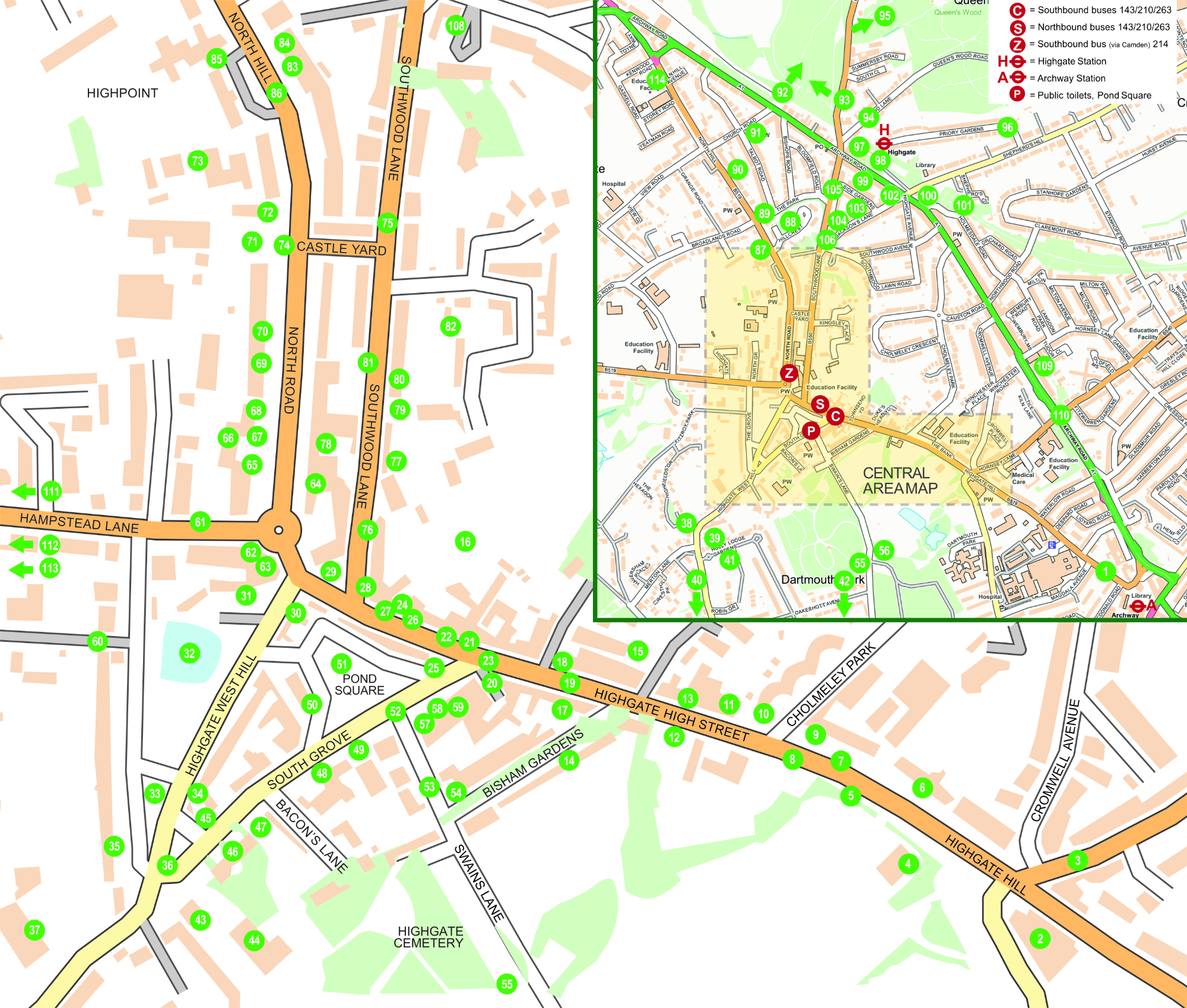
Highgate originated as the southeastern tollgate into the mediæval Bishop of London’s 1,000-acre Deer Park, from which its name probably derives. The Church owned the land from the 7th to the 19th century, when it was sold for development. The village started to grow in the 15th century; by the 17th century it was a fashionable place, with large mansions, and by the 18th century was a thriving village. The Archway Road was built in 1813 to bypass Highgate Hill. Highgate was the last stop on the droving road to London’s Smithfield meat market; more than 40 pubs and inns have come and gone over the years. The High Street retains traces of its ancient inn yards.
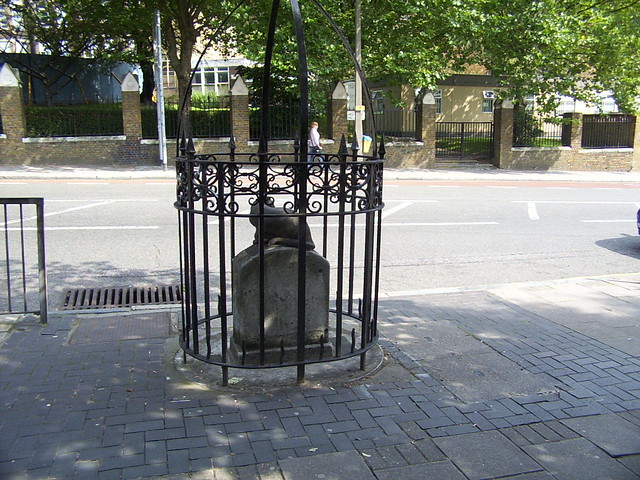
- A short distance up Highgate Hill from Archway Station is the Whittington Stone, recalling one of England’s most cherished legends: the spot where Dick Whittington and his cat, about to return to Gloucestershire in disillusionment, heard the Bow Bells telling him to “turn again” and become “thrice Lord Mayor of London”. The real Sir Richard Whittington (c.1354–1423) was a wealthy merchant and Mayor of London three times. In 1964 the stone cat was placed near the hospital that bears his master’s name. Show on Google Maps
- Joseph’s Retreat is the Order of Passionists’ HQ in England. They built a chapel here in 1858, on the site of the Black Dog Inn; this building, by Albert Vicars, was consecrated in 1885.
- Hornsey Lane, an ancient road, formerly Maiden Lane. Historic buildings at the Highgate end include the 17th century No. 20.
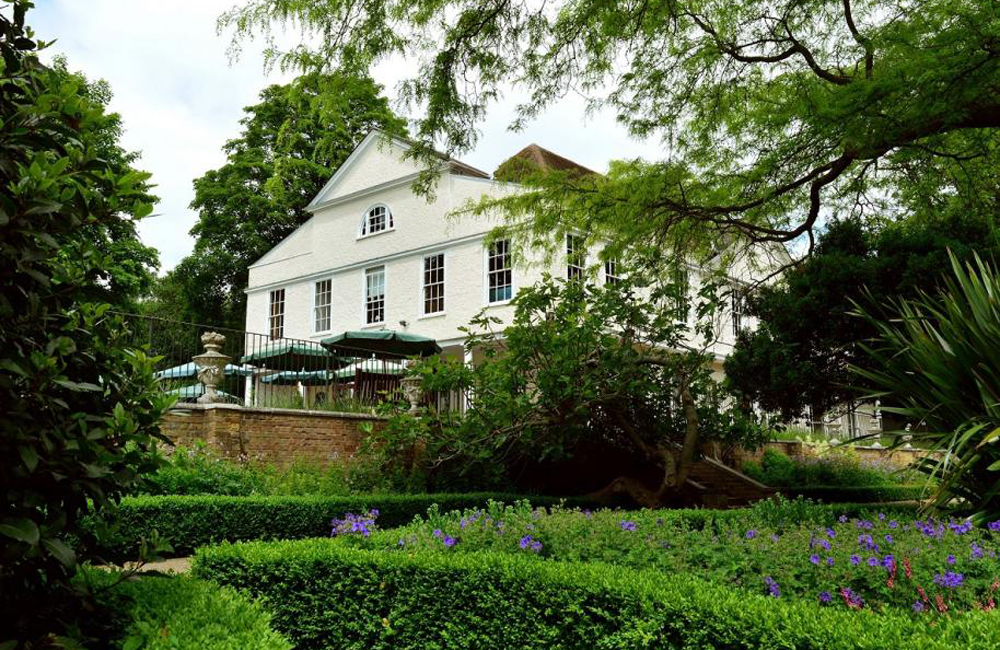
- Lauderdale House, built c.1580, probably for merchant Sir Richard Martin, Mayor of London; remodelled in 1645. During the 1660s it was owned by the Earl of Lauderdale (the ‘L’ of CABAL); visitors included Charles II and Samuel Pepys, but the claim that Nell Gwynn was installed there by Charles II is unsubstantiated. Its last owner was printing magnate Sir Sydney Waterlow, who gave it, with 29 acres of gardens, now Waterlow Park, to the public in 1889. It is now a thriving local cultural centre. The House features classical music, jazz and poetry along with children’s shows for all age groups. In the summer the lawn is used for a variety of entertainment including music, drama and comedy. The sundial is level with the top of the dome of St. Paul’s Cathedral.
- A wall plaque marks the site of the cottage said to have been poet Andrew Marvell’s (1621-78), demolished in 1867.
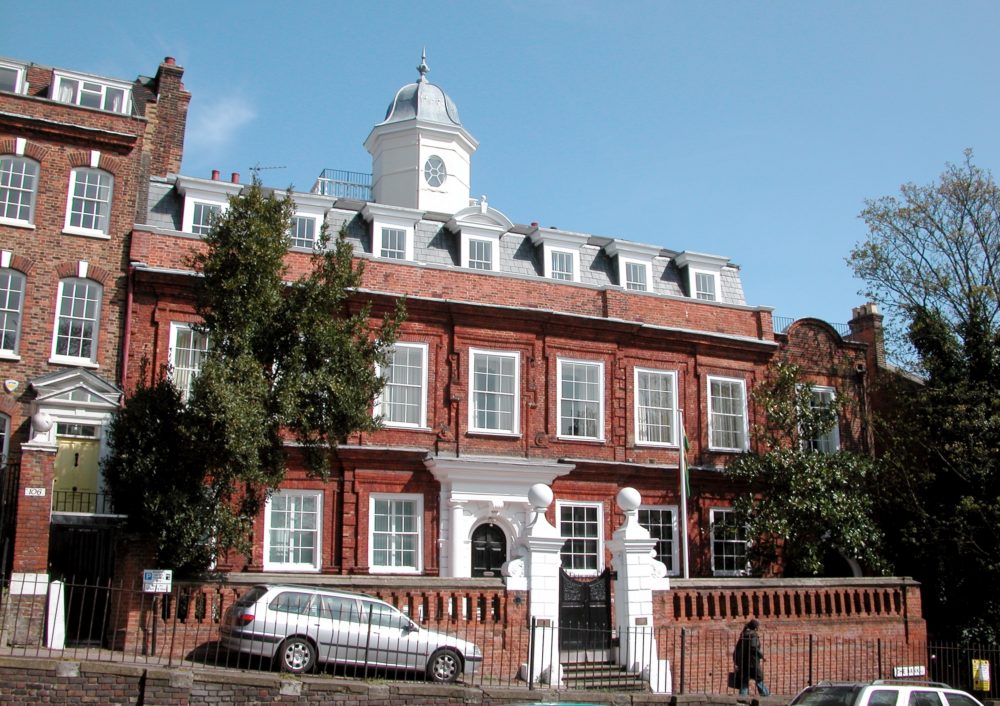
- Cromwell House, built 1637-8 for Richard Sprignell, one of London’s finest 17th century houses, Grade I Listed, with elaborate interiors. In 1675 it was purchased by Jewish merchant Alvaro da Costa, the first property in England to be owned by Jews after their re-admission in 1656. A school from 1830, it was damaged by fire in 1865, was a convalescent home 1869-1924 and is now the Ghana High Commission. It has no connection with Oliver Cromwell, the name dating to c.1833.
- The Bank is fronted by fine 17th and 18th century houses. The picturesque 19th century gate house for the original 1770s Cholmeley Lodge (demolished 1934), survives by the corner of Cholmeley Park.
- Highgate Hill was the site of Europe’s first cable-car. Built 1884 by Andrew Smith Hallidie, designer of the San Francisco Cable Car system, it was replaced in 1909, after several accidents, by a tram, and by a bus in 1939.
- Channing School for girls, founded 1885 by Matilda and Emily Sharp for the daughters of Unitarian Ministers; named after American Unitarian Minister William Ellery Channing (1780-1842).
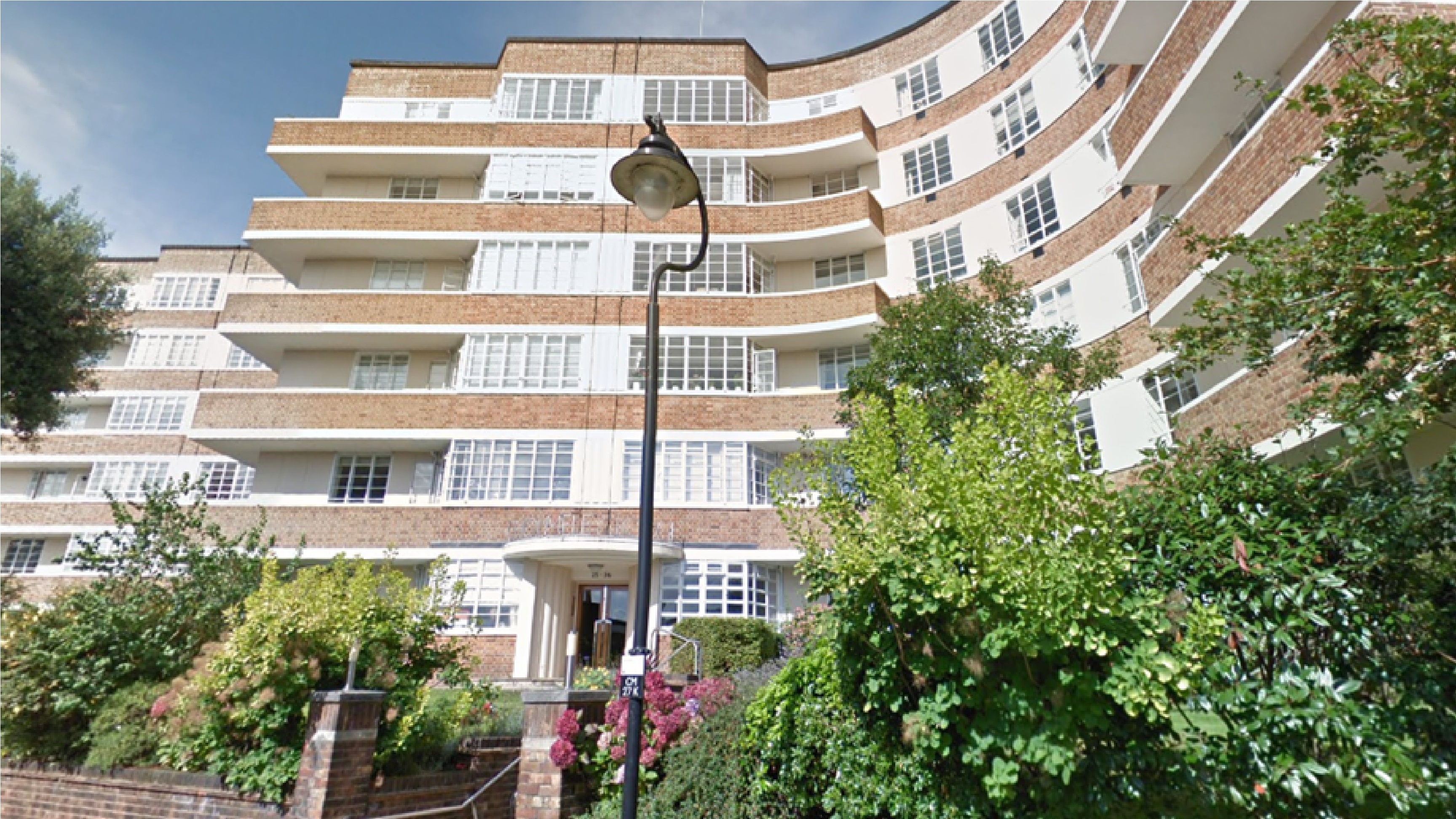
- Cholmeley Lodge, by architect Guy Morgan, a fine 1930s Art Deco block.
- Ivy House and Northgate House, 128 and 130 Highgate Hill, an important pair of 1660s houses.
- Waterlow Park was dedicated in 1889 by industrialist and philanthropist Sir Sydney Waterlow as “a garden for the gardenless”. His home, Fairseat, is now Channing Junior School. His statue, in the park, is the only one in London showing a person carrying an umbrella!
- The White House, 10 Highgate High Street, dates from 1703.
- Bisham Gardens, built c.1891 on the site of Bisham House, the home of Captain Peter Heywood, who was a young Midshipman on HMS Bounty during the famous 1789 mutiny.
- At the north end of Broadbent Yard is an extraordinary Folly by local builder Thomas Townshend (42 Highgate High Street 1826-51), probably from oddments from the demolition of 17th century mansion Ashurst House.
- The “Highgate Bowl”, behind the High Street, is an important survival of rural Highgate, fiercely defended against development by local people for five decades. It houses an arts and environmental centre.
- 17-23, Highgate High Street, a fine row of c. 1700 Grade II* houses.
- 42 Highgate High Street, probably by local builder Thomas Townsend, c.1830-40. Its entrance was originally the door of Ashurst House, the c.1675 mansion of Sir William Ashurst, Lord Mayor of London, demolished c.1830.
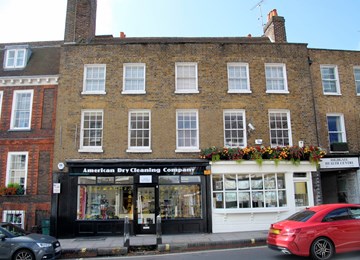
- 27 Highgate High Street – Prickett & Ellis, the world’s oldest Estate Agents, founded in 1767.
- The Angel Inn, built c.1500, rebuilt in 1928. Its stable yard is now a gated residential enclave.
- 58-60 Highgate High Street, an important 19th century shopfront with original steps. The weatherboarded front and sack chute was a corn chandler’s, a remarkable survival for London.
- The 19th century butcher’s shop canopy of 62 High Street is a copy, the original demolished by a bus some years ago.
- Though a busy traffic route, Highgate High Street retains its 18th-19th century village character and many narrow mediæval plots. The 1960s campaign to fight proposals to demolish the High Street and re-route the A1 through the village made national headlines and led to the foundation of the Highgate Society, which is still active in monitoring planning and other local issues.
- 64 Highgate High Street, Bailey & Saunders, has been a chemist’s since 1832. The current shopfront is an replica of the original, destroyed in the 1990s by a previous owner.
- Occupied by a quaint blacksmiths from the 1660s to c.1900, it is hoped that the redundant bus turnaround will soon become a landscaped pedestrian link between the High Street and Pond Square.
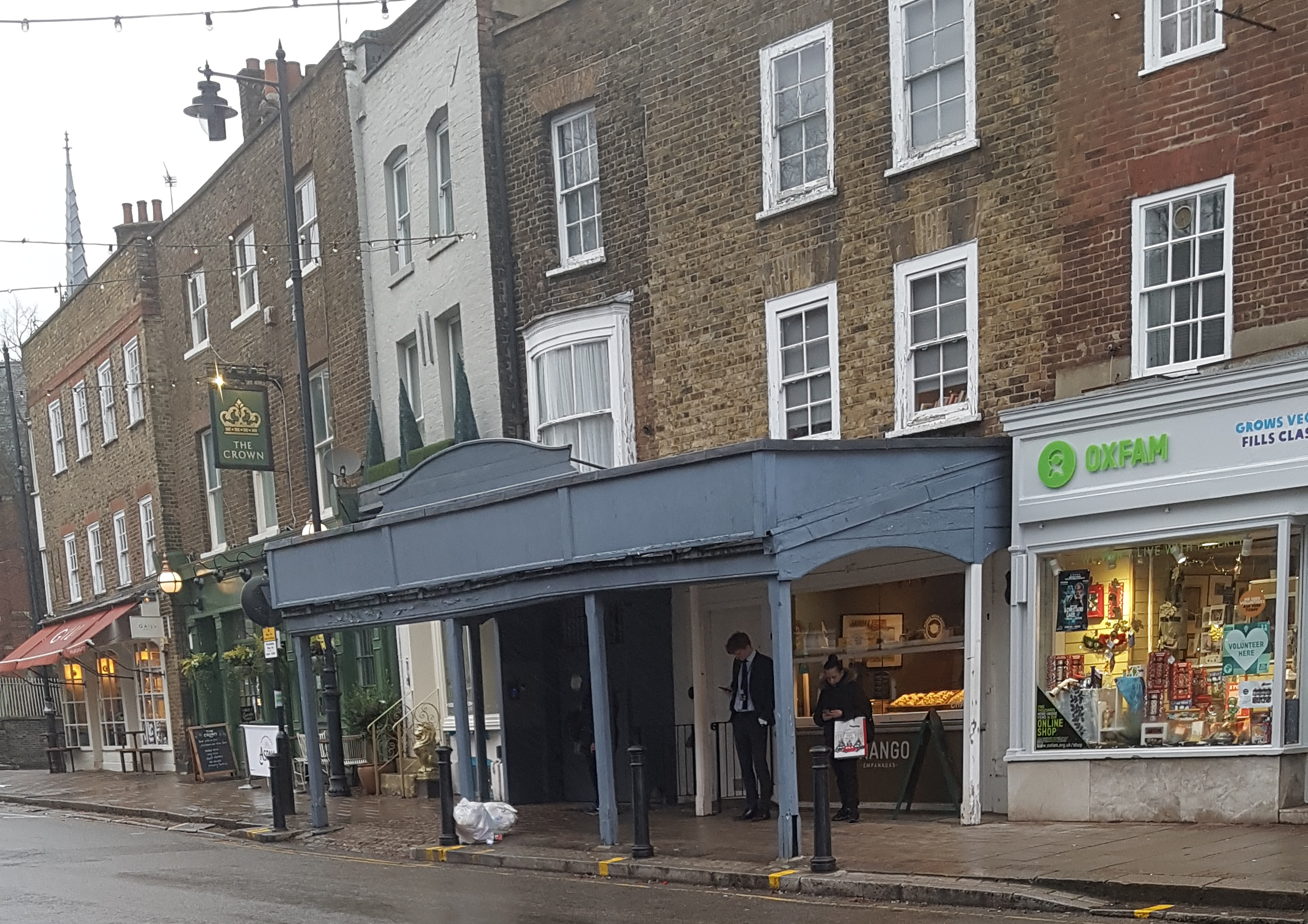
- The canopy of 82 Highgate High Street is a remarkable survival. A butchers and slaughterhouse from 1813 until the 1960s, it still retains some of the original butchers’ fittings.
- 88 Highgate High Street which has been the site of the Rose and Crown public house since c.1730.
- The former shopfront at 2 Southwood Lane is probably early 20th century
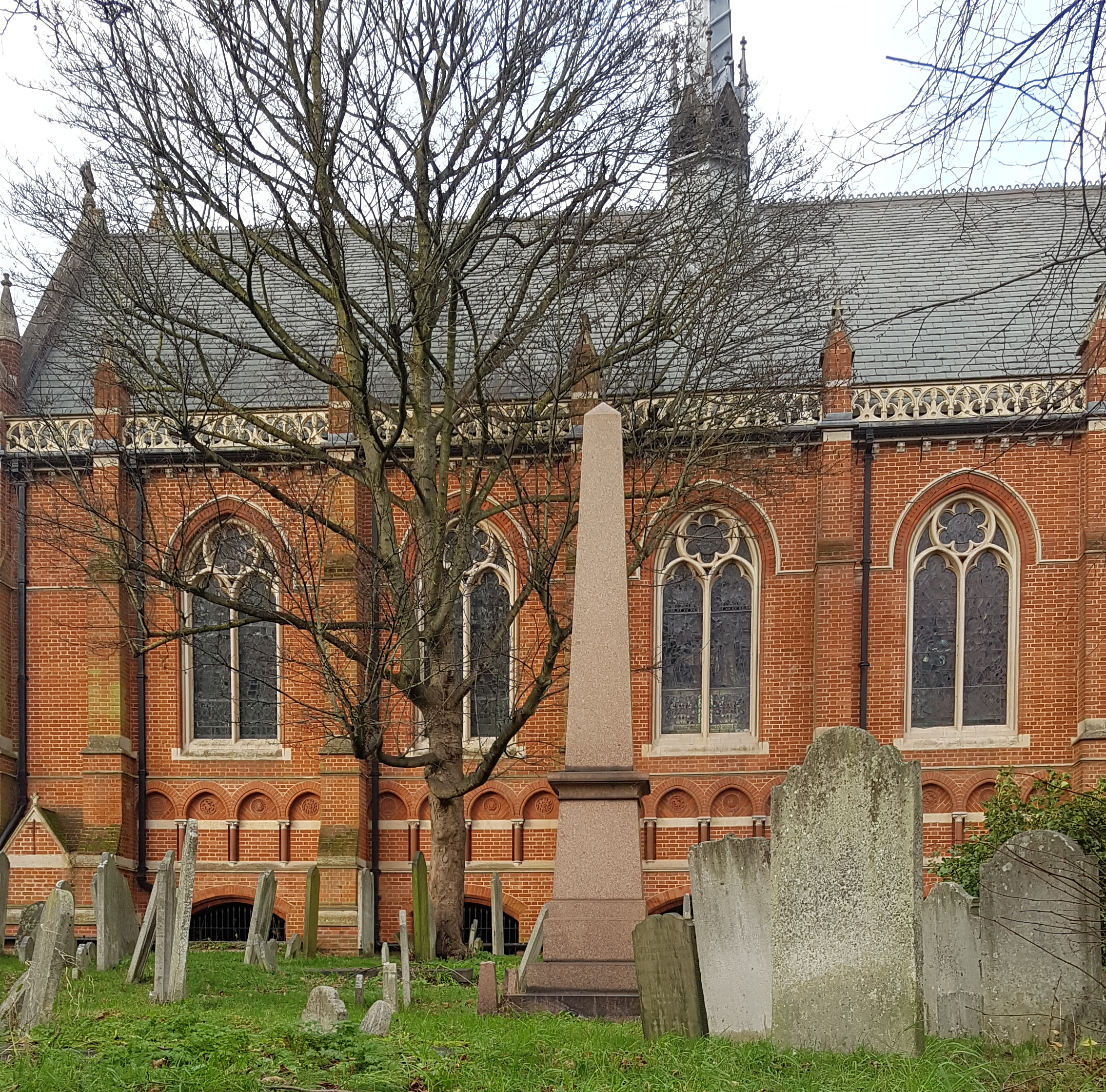
- The churchyard was a graveyard for the Tudor Highgate School chapel, a chapel-of-ease, the nearest churches being at St. Pancras and Hornsey; demolished 1830. It forms a rustic gateway to the village, opposite a modern development which replaced a unique 19th-century cattle byre.
- Until 1902, 49-50 West Hill was the Highgate District police station.
- Georgian Apothecary House, 47 Highgate West Hill, was the home of several generations of the Wetherells, a family of doctors.
- Highgate Reservoir, built 1854 to provide Highgate’s first water supply. The Listed pump house and railings date from its construction.
- This open grassed area is the last fragment of the once much larger Highgate Green.
- The Flask public house dates from at least 1716; named from the flasks of Spa water it sold. The artist William Hogarth (1697-1764) was a visitor.
- 1-6 The Grove, built c.1700 on the site of the 17th century mansion Dorchester House, is one of suburban London’s most important early 18th century developments. Poet Samuel Taylor Coleridge spent his last years, 1823-34, at No 3 with Dr. James Gillman’s family. Other residents included Leigh Hunt, J.B. Priestley and Yehudi Menuhin.
- The sign directing motorists to “The North” and “Highgate Village” is a restored pre-war sign
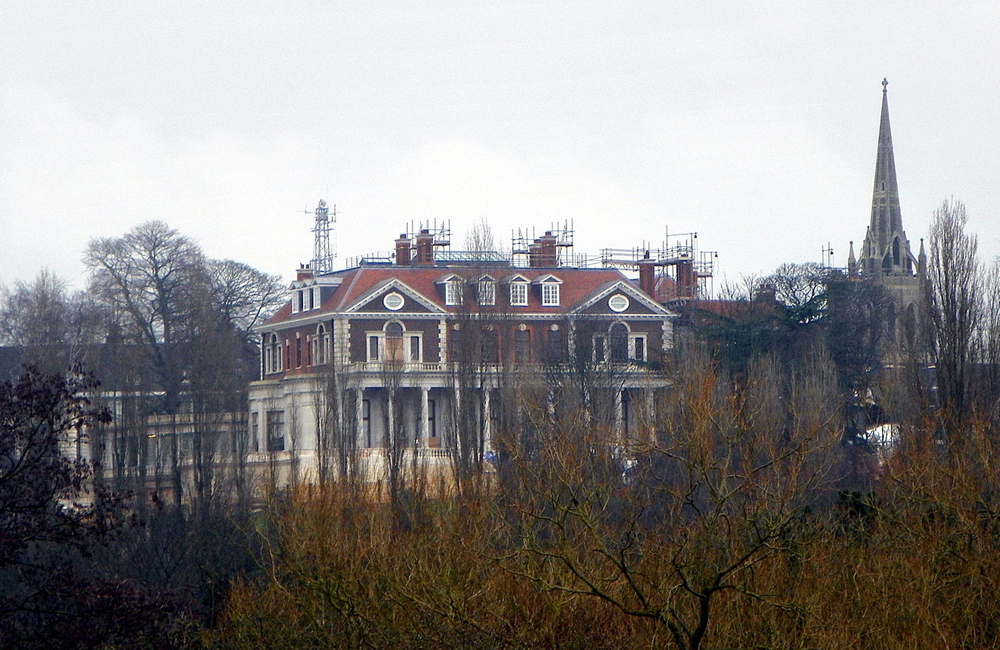
- The 18th century mansion Parkfield was replaced in 1917 by the vast Chateau-style Witanhurst for industrialist Sir Arthur Crosfield, who was instrumental in saving Kenwood House. The largest private house in London after Buckingham Palace, it has recently undergone substantial alteration. Much of the fine gardens were built on in the 1960s despite local opposition.
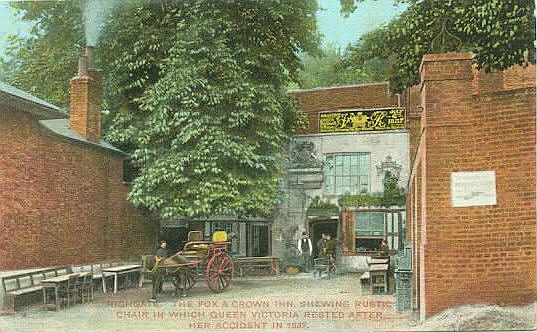
- An inscription on the 1898 building 39-40 Highgate West Hill states “Site of the Old Fox & Crown”, arguably the scene of Highgate’s greatest contribution to world history. In 1837, the young Queen Victoria was travelling down the hill when her horses bolted. The landlord, James Turner, managed to stop the carriage. Had Victoria been killed, there would have been no Victorian era! The inn was demolished in 1896; the royal coat of arms presented to Turner is now in the Highgate Literary and Scientific Institution.
- Holly Terrace, a fine c.1807 row of houses.
- 31 Highgate West Hill, a late Victorian house, was the childhood home of poet John Betjeman (1906-84).
- Holly Lodge Estate, on the site of the 19th century Holly Lodge, home of philanthropist Baroness Angela Burdett-Coutts (1814-1906), the wealthiest woman in England after Queen Victoria. The Estate was sold and developed in the 1920s. Robin Grove, immediately uphill, was originally the entrance.
- Holly Village comprises nine ornate Gothic-style cottages, built 1865 by Henry Darbyshire for Baroness Burdett-Coutts as homes for her retired estate workers; today they are desirable residences.
- The important late 16th-18th century Voel House. The early Victorian milestone in front, stating “IV Miles from St. Giles Pound”, should read “V”.
- St. Michael’s Church, by architect Lewis Vulliamy, built 1832 on the site of the 1693-4 Ashurst House. After an 1820s legal dispute, St. Michael’s replaced Highgate School old chapel (see 29) as the village church. The remains of poet Samuel Taylor Coleridge were exhumed from Highgate School chapel in 1961 and reinterred here.
- The workers’ cottages above the stables of The Flask public house, a rare survival, were sensitively restored c.2010.
- The Old Hall (now three houses), probably built 1691 and incorporating parts of the 16th-century Arundel House, owned by Thomas Howard, Earl of Arundel (1586-1646), great patron of the arts. Philosopher and statesman Francis Bacon, Baron Verulam, died here in 1626 from pneumonia contracted while experimenting with preserving food by freezing a chicken in snow. Local legend claims the area is still haunted by the ghost of – the chicken! His name is recalled in nearby Bacon’s Lane.
- The Lawns, 16 South Grove, an award-winning 2000 house by Eldridge Smerin. The gate piers of a Victorian house, occupied by scientific instrument maker Louis Casella, remain.
- Moreton House, 13 South Grove, built 1715, was damaged by fire and restored in the 1990s. Dickens is said to have modelled Steerforth’s home in David Copperfield on this property.
- The United Reform Church, Pond Square (1858).
- Rock House, a fine 1777 house with oriel windows.
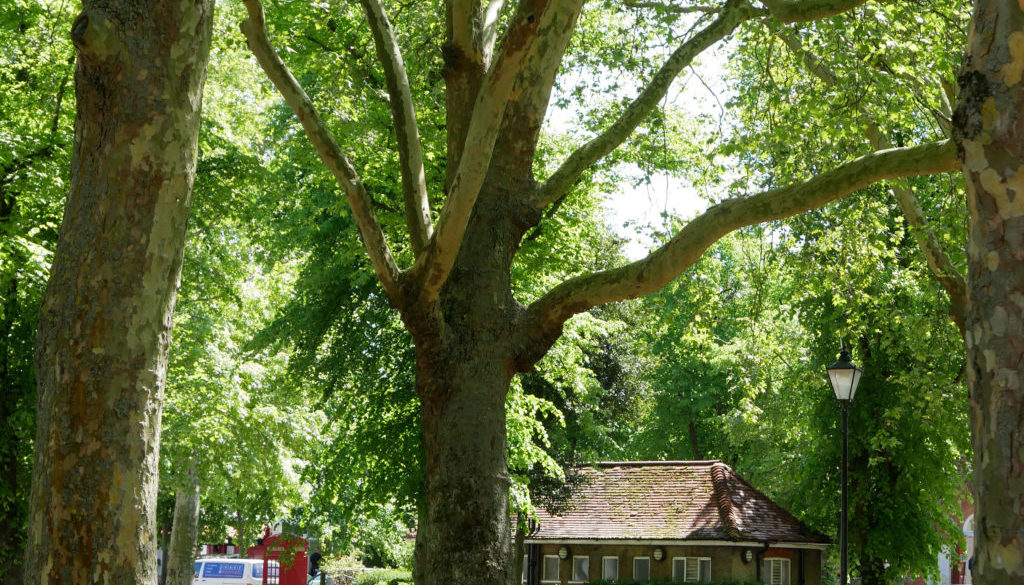
- Pond Square, a remnant of Highgate Green. Its two Ponds, created by mediæval gravel digging to surface the High Street. These were backfilled in 1864 as a health risk. Since 1881 it has been a public square and, with its magnificent plane trees, is regarded as the heart of Highgate village. Followers of the paranormal might be able to catch a glimpse of Sir Francis Bacon’s headless chicken!
- Swine Lane was renamed Swains Lane by over-sensitive Victorians.
- The Lych Gate at 107 Swains Lane, erected in memory of boys from the ‘Highgate Camp’ who died in the April 1918 Zeebrugge Raid during World War I.
- The Communications Mast, erected in 1939 as a television relay, played an important role in the Second World War, disrupting the direction-finding systems of enemy bombers.
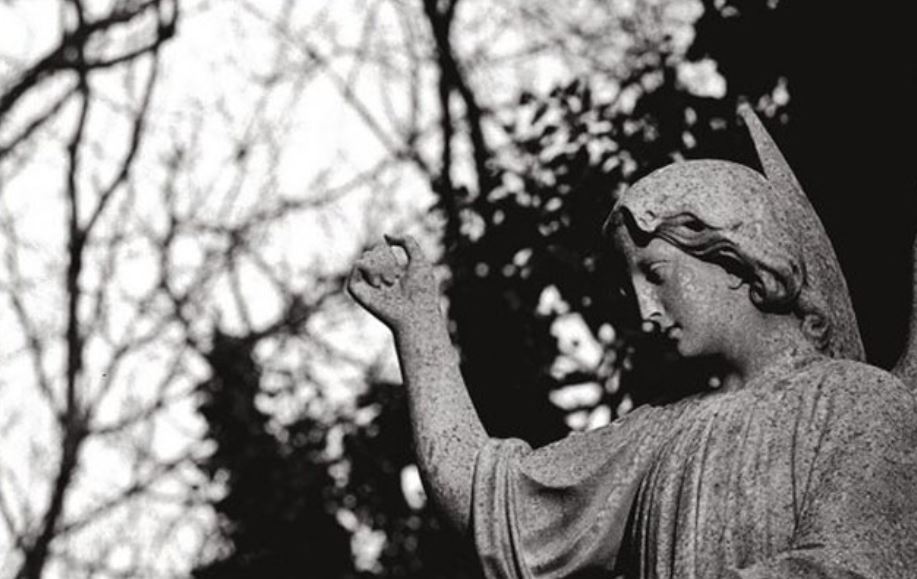
- Highgate Cemetery by architects Stephen Geary & Bunstead Bunning, built 1839 on the site of 17th century Ashurst House. It has over 52,000 graves, many of famous people. These occupants are brought to life by the very informative and entertaining guided tours through the West Cemetery which must be booked in advance. Visitors can stroll through the East side on their own visiting, amongst others, the grave of Karl Marx. Derelict by 1975, it was acquired in 1981 by the Friends of Highgate Cemetery and is now a working cemetery and a major tourist attraction.
- The Gothic building at the lower entrance to Waterlow Park in Swains Lane was the entrance Lodge to Sir Sydney Waterlow’s estate (see 12).
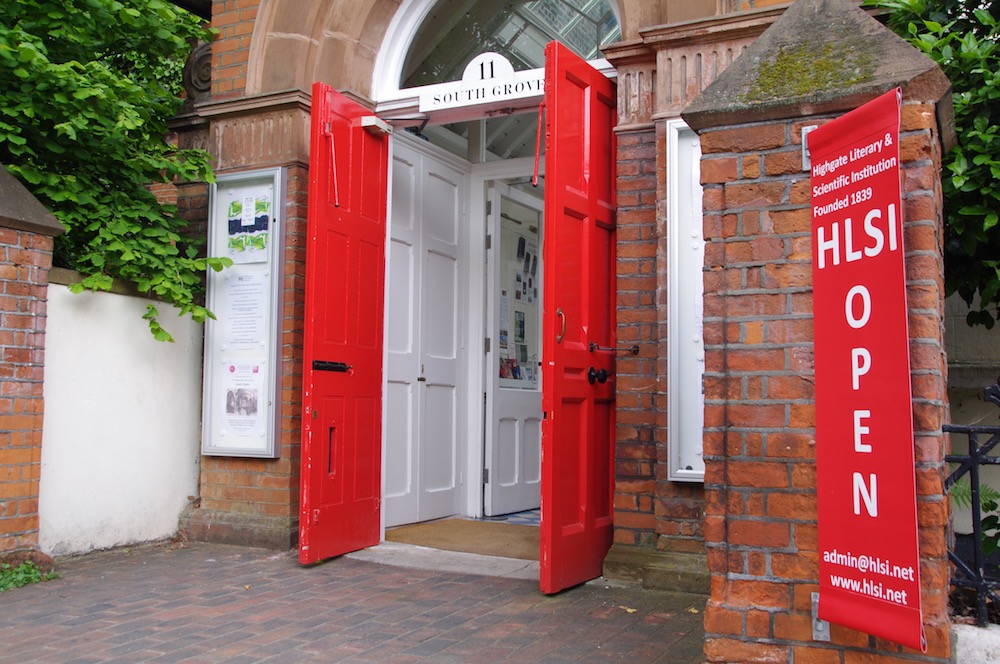
- The Highgate Literary and Scientific Institution, founded 1839. Originally one of many, to promote knowledge of the arts, sciences and literature to the working classes, it is now one of only four remaining.
- 10a South Grove, HQ of the Highgate Society, founded in 1966 and one of the country’s largest and most active Civic Amenity Societies. Open 10.30 to 12 on Saturday mornings.
- Church House, 10 South Grove, a fine 18th century building.
- Fitzroy Park, originally the carriage drive to the 1770 Fitzroy House (demolished 1828), now a rustic pedestrian route to Hampstead Heath. Notable buildings include No.6, built by engineer Ove Arup for himself, and The Elms, an 1838-40 mansion by George Basevi.
- Hampstead Lane is an old road, probably mediæval. Its route ran further south until the 1790s, when Lord Mansfield decided it was too close to Kenwood House, and moved it.
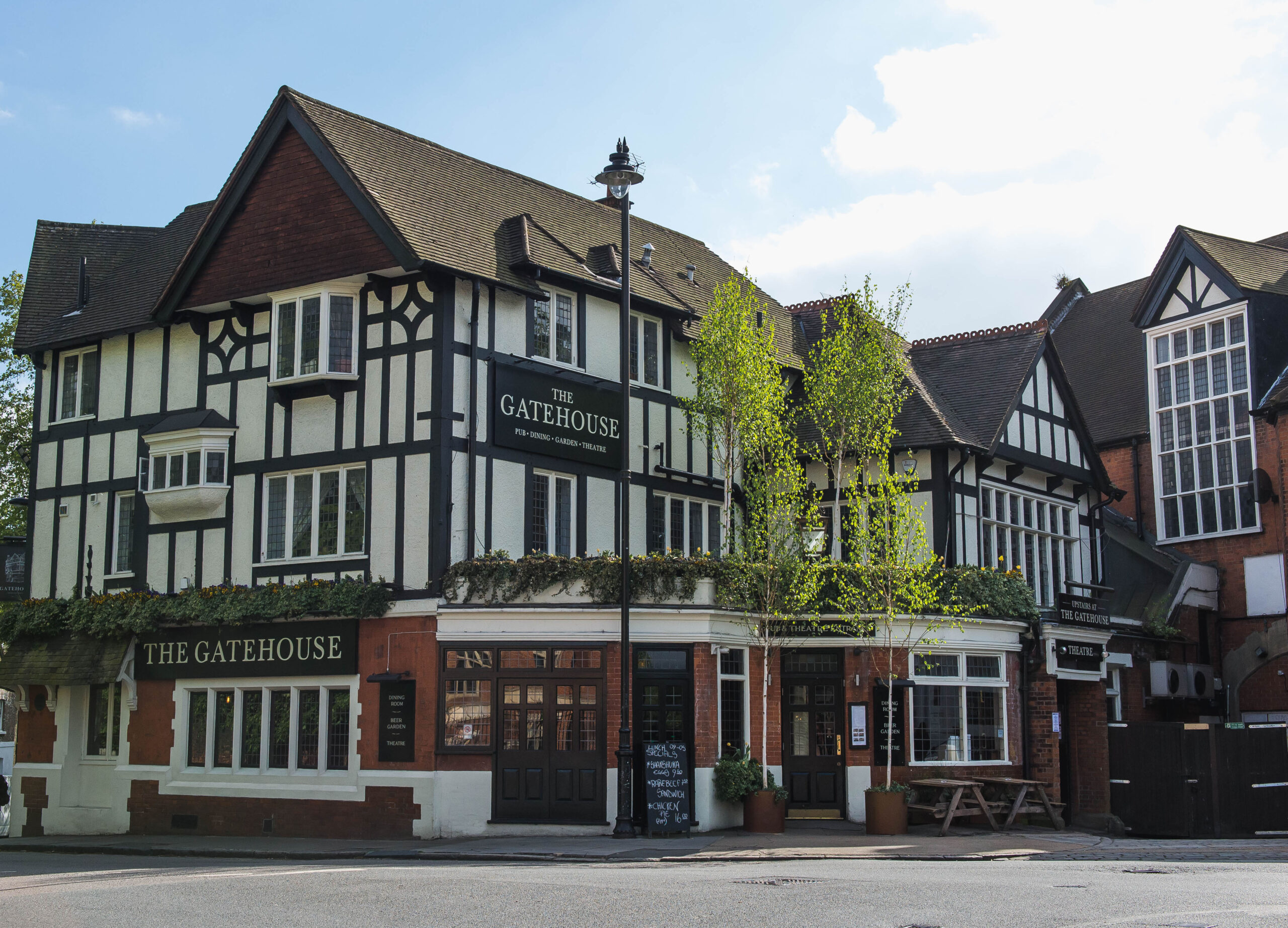
- “Upstairs at the Gatehouse”, a popular local theatre, next to the site of the original High Gate. Originally a Victorian Music Hall, it re-opened as a theatre in 1997. Situated at the highest point (446ft above sea level) of the inner London Boroughs this award winning theatre lives up to its description of ‘London’s Top Theatre’ in more ways than one! Show on Google Maps
- The Gatehouse: Originally one of three toll gates into the mediæval Bishops of London’s Hornsey Great Park. An inn since at least 1634. The tollgate was removed in 1876. The name Highgate, first recorded in 1354, probably originated as the “high toll-gate”. Two parish boundary markers are set into its wall; one reads “S[t] P[ancras] P[arish] 1791” and the other “Hornsey Parish 1859”. They recall a time when the boundary between London and Middlesex ran through the inn, and criminals from one administration being tried in the magistrate’s court above the pub could evade justice by crossing the room! The building was remodelled in its current mock-Tudor style in 1905.
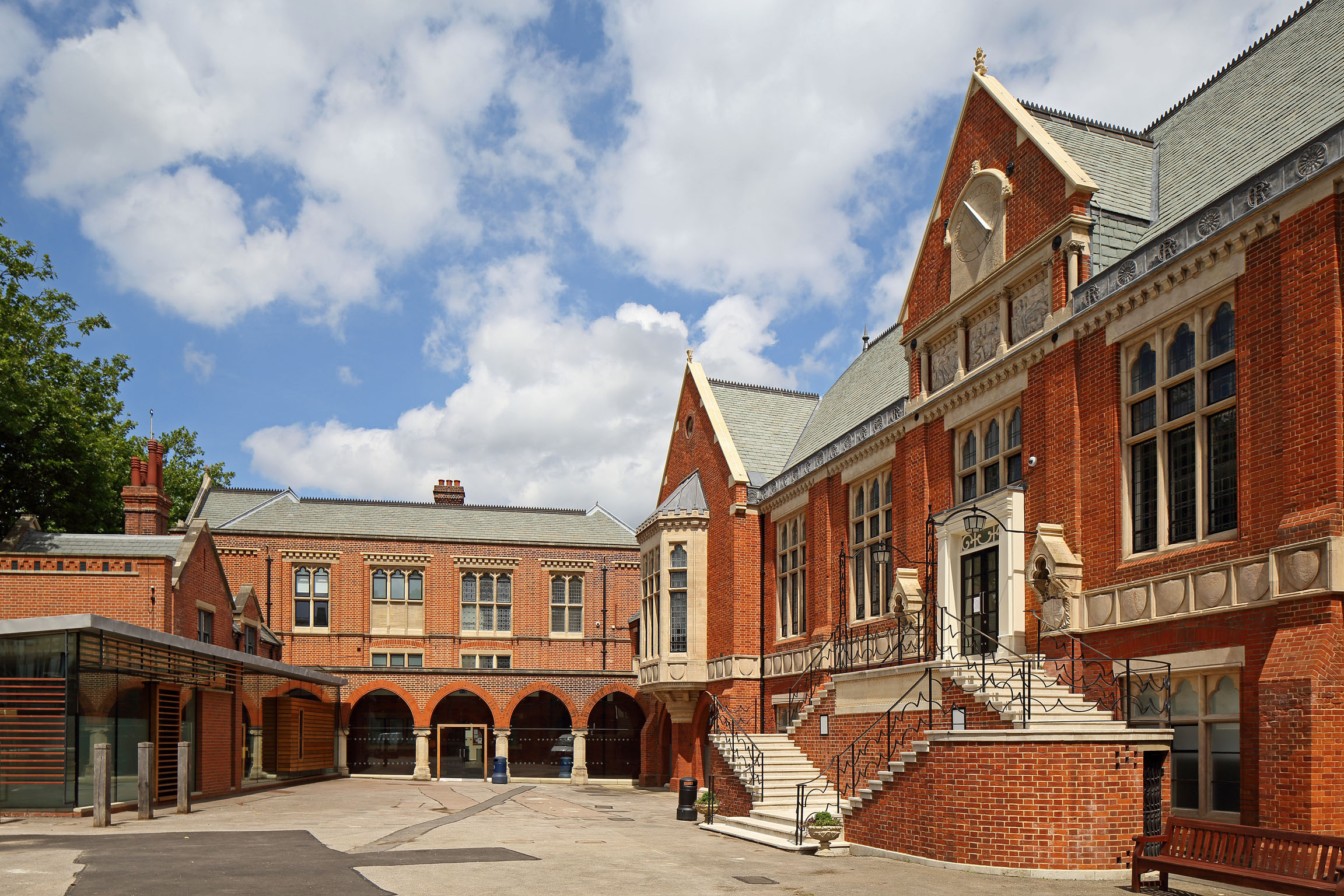
- Highgate School, founded 1565 by Chief Justice Sir Roger Cholmeley; alumni are called Old Cholmeleians. Two other founders were Bishops of London, who donated land from their Park. The block on the left of the main Quadrangle is by C.P.Leach (1898-99). The quaint gate and bell tower is probably the oldest part of the school. The 1867 Big School, now a library, and the Chapel, built 1865 on the site of a Tudor chapel demolished in 1833, are by Frederick Pepys Cockerell. In 1916 T.S. Eliot was a teacher and John Betjeman one of his pupils. Excavations on the site of the Charter Block in 2014 found remains of the kilns producing bricks for the original 1570s buildings. The wrought iron gates in North Road are a war memorial.
- The 1840 Halfway Cottage, formerly a stable, retains the hoist & upper door for grain sacks.
- The Red Lion and Sun was two pubs until 1890 – The Red Lion and the Sun; the building dates to 1928.
- 17 North Road, a fine early 18th century house with possible mediæval origins, was where E.Houseman wrote his celebrated poem “A Shropshire Lad”.
- The Sycamores, 19 North Road, a fine late 17th-early 18th century house, Listed Grade II*.
- The Bell and Horns pub from 1721 until 1925, its forecourt subsequently a petrol station. Note weatherboarded Medlar Cottage to the right.
- 45 North Road, “The Old Forge” was until 1926 the site of Hayhoe’s Forge, there by 1826. It was demolished in 1953 and rebuilt as a house.
- St. Michael’s Church of England Junior School, by architect Anthony Salvin, in Victorian Gothic style, opened in 1859.
- Fire Station Flats / Highgate Shul (Synagogue) The building at the front of 57 North Road recalls it’s former use as the Hornsey Urban District Fire Station (1894 – 1934). The building at the rear belongs to Highgate’s Jewish community who opened their refurbished Synagogue in September 2016.
- Northfield Hall, in the later 19th century the drill hall for the 3rd Middlesex Rifle Volunteer Corps.
- Castle Yard was once the yard of the Castle, an inn 1719-1872, the Highgate Working Men’s Club until 1880, the Castle Coffee and Dining Rooms until 1920, demolished in 1928. The name may derive from a Civil War-era fortification. The Victorian workers’ cottages, Nos. 1-11, were restored c.2005
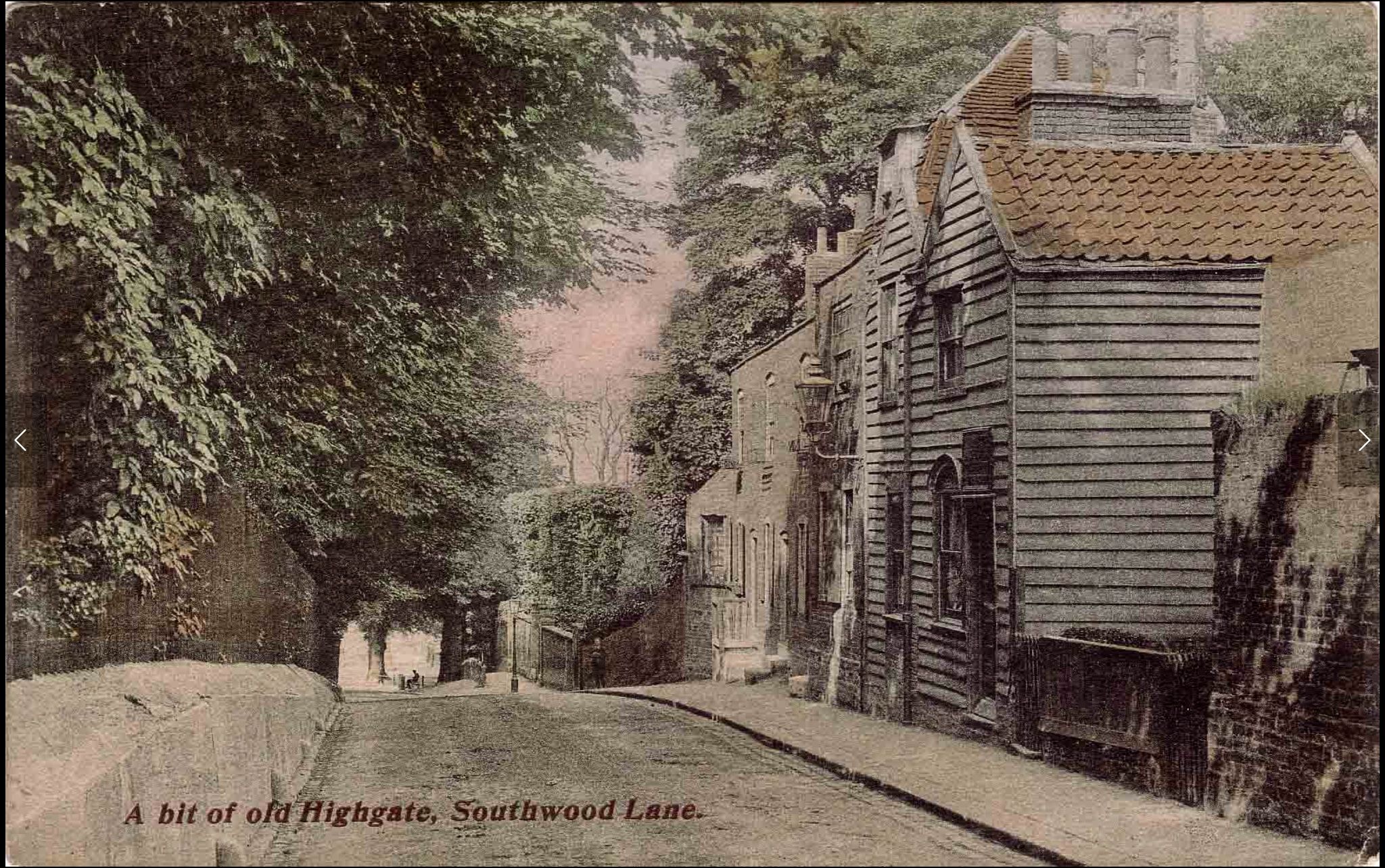
- Southwood Lane, marking the eastern boundary of the Bishops’ Park, has a wide range of architectural styles. The name recalls that it led to Sow Wood, renamed Queen’s Wood for Queen Victoria.
- 1-18 Southwood Lane, a fine row of mainly Georgian town houses.
- Georgian Dyne House, named for Dr. John Bradley Dyne, Headmaster of Highgate School 1838-1874, was replaced by its modernist namesake in 1967.
- The Highgate School small Quadrangle and 1928 Science Block.
- Originally a Baptist Tabernacle, built when nonconforming churches were forbidden within a 5-mile radius of Charing Cross. Now the Highgate School meeting hall and Museum, the latter open free of charge on Saturdays during term-time 10-1.
- “Avalon”, 22 Southwood Lane, childhood home of naturalist and African explorer Mary Kingsley (1862-1900). She died of typhoid fever while nursing Boer prisoners of war in South Africa and was buried at sea with full military honours. Her name is commemorated in Kingsley Place.
- The picturesque Almhouses, built by Sir John Wollaston in 1656, rebuilt in 1722 by Sir Edward Pauncefort. The two-storey structure in the middle was once a school for girls.
- Kingsley Place, a 1967 development on the gardens of The Limes and Southwood Lodge by Architects Co-Partnership.
- 92 North Road. A Blue Plaque records that Charles Dickens stayed here in 1832
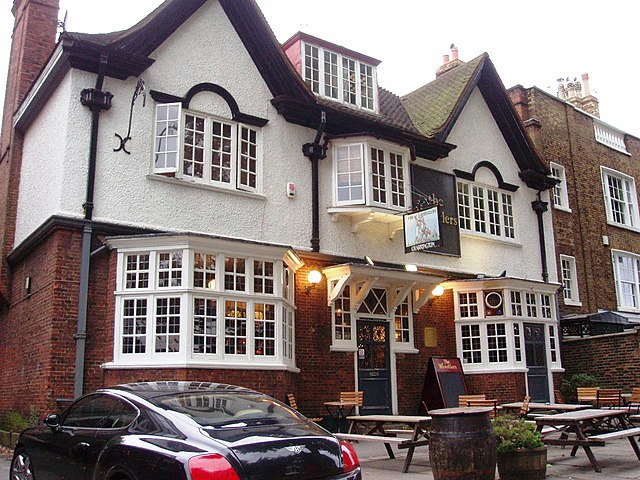
- The Wrestlers, 98 North Road, Highgate’s oldest Public House, traditionally founded in 1547. The present building dates to 1921. Highgate’s renowned, if bizarre, ceremony of “Swearing on the Horns”, established by 18th century publicans to promote trade and mentioned in a poem by Lord Byron, is still occasionally performed here. After swearing a series of harmless oaths, the initiate became a Freeman of Highgate and had the right to take the place of any pig seen resting in a ditch when travelling through the village. The pub keeps an old set of horns (actually deer antlers) for use in the ceremony; sadly, there are few opportunities nowadays to exercise a Freeman’s rights. In 1995 it was re-named The Slug and Lettuce; furious locals quickly got it changed back.
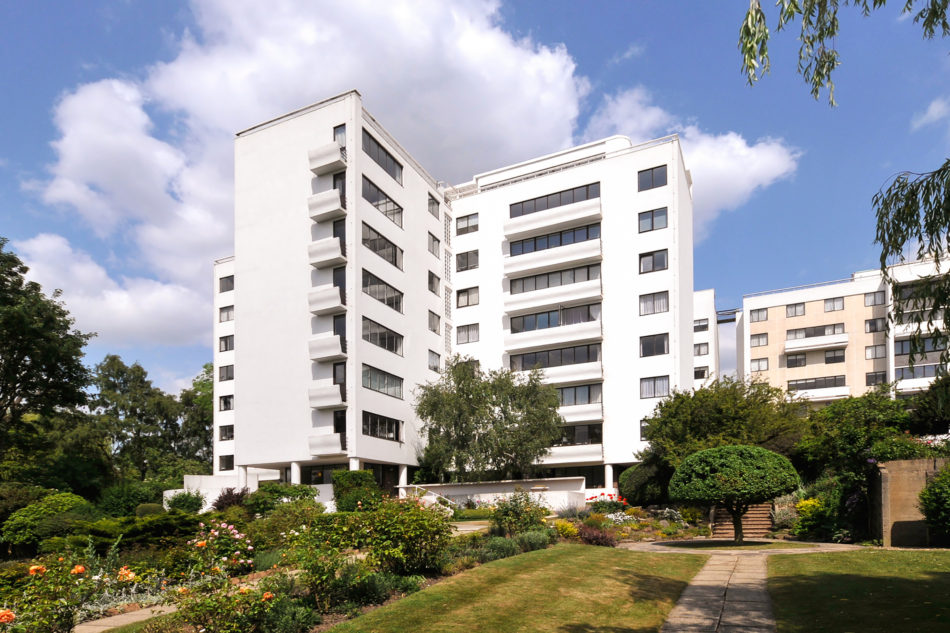
- Art Deco Highpoint, by Lubetkin and Tecton, an iconic example of 1930s British architecture. At the time it aroused fierce opposition from local people who formed the Highgate Preservation Society to oppose “unsightly and unwanted development”. Built on the site of the 18th century house The Cedars, a name recalled by surviving trees.
- North Hill has an impressive range of 17th to 20th century architecture. Get the Highgate Society’s free leaflet, “North Hill, Highgate: The Most Architecturally Diverse Street in Britain?”
- The Bull, a pub since 1765. Artist George Morland was a regular customer, running up debts which he paid off in paintings.
- In 1856 the 60-acre grounds of Park House became a London Diocesan Reformatory for “fallen women”; the poet Christina Rossetti was involved with it. The site is now the 1949 Hillcrest Estate by T.P.Bennett, the blocks named for British commanders in the Second World War.
- The small green at the junction of North Hill and Park House Passage was until c.1880 the local Cattle Pound. The large Lime Tree behind it sits on what may be a surviving fragment of the western pale of the mediæval Hornsey Little Park.
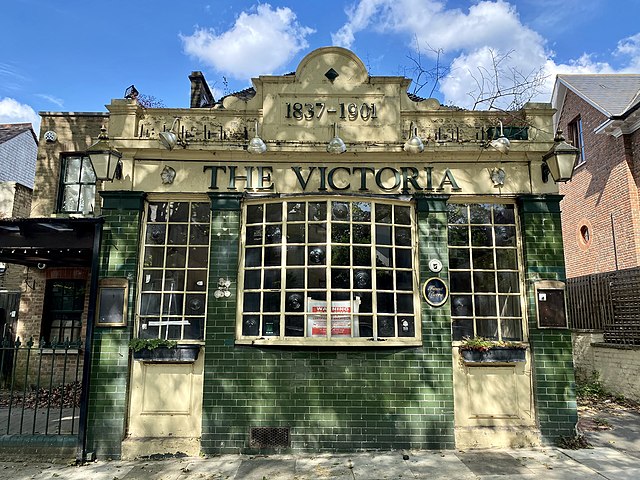
- The Victoria, a pub since at least 1861 and rebuilt in the early 20th century. It closed in 2015.
- All Saints Church, by A.W.Blomfield, built 1864, extended in 1874 and 1912.
- Highgate Wood, a nationally important ancient woodland, saved from redevelopment in 1887 by local politician Henry Reader Williams (commemorated on the Crouch End Clock Tower) and acquired by the City of London. Prehistoric and Roman remains have been found there, and it contains hundreds of ancient coppiced hornbeams.
- 10 Muswell Hill Road was the teenage home of comedian Peter Sellers, 1936-1940.
- Wood Lane has some fine early-mid 19th century buildings.
- Queens Wood, saved from development in the 1880s by Hornsey Council; now run by Haringey. Formerly called Churchyard Bottom Wood, though there is no church anywhere near; local tradition says that Plague victims were buried here, though no evidence has ever been found.
- Priory Gardens, built c.1910 in the grounds of The Priory; when the latter was built in 1832, a hoard of Roman coins was found.
- The Woodman pub, built for the then-new Archway Road in 1828. Rebuilt in 1905, it is a splendid example of the Arts and Crafts style.
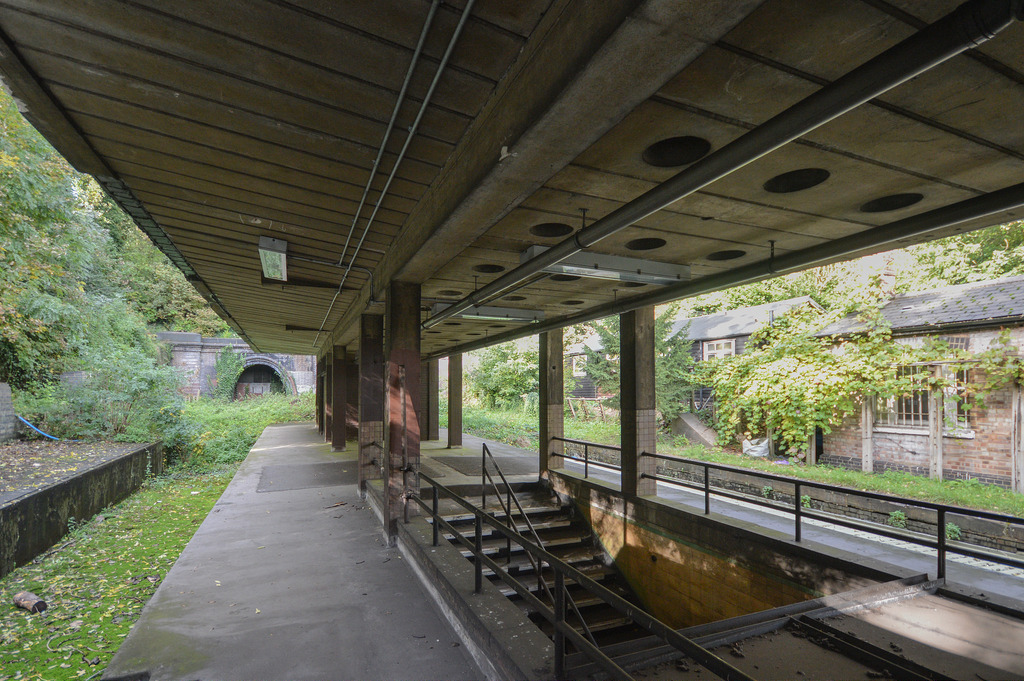
- Highgate Overground Station operated from 1867 until the line closed in 1954; the original station cottage survives. The Underground station opened in 1939. The area is now a Site of Metropolitan Importance for Nature Conservation.
- Grand Parade, between Jackson’s and Southwood Lanes, built c.1898-1905 by W.H.Boney in the Dutch Gabled style.
- When the Pond Square ponds were filled in, it was proposed to build model dwellings for the poor there. Building on a village open space was opposed, so Coleridge Buildings was built here instead in 1867, on the corner of Archway Road and Shepherds Hill. It was destroyed in 1944 by a V-Bomb, and replaced in 1950 by Goldsmith’s Court.
- The Parkland Walk, a pleasant rural and ecological amenity on the line of the former railway from Finsbury Park to Alexandra Palace (closed 1955)
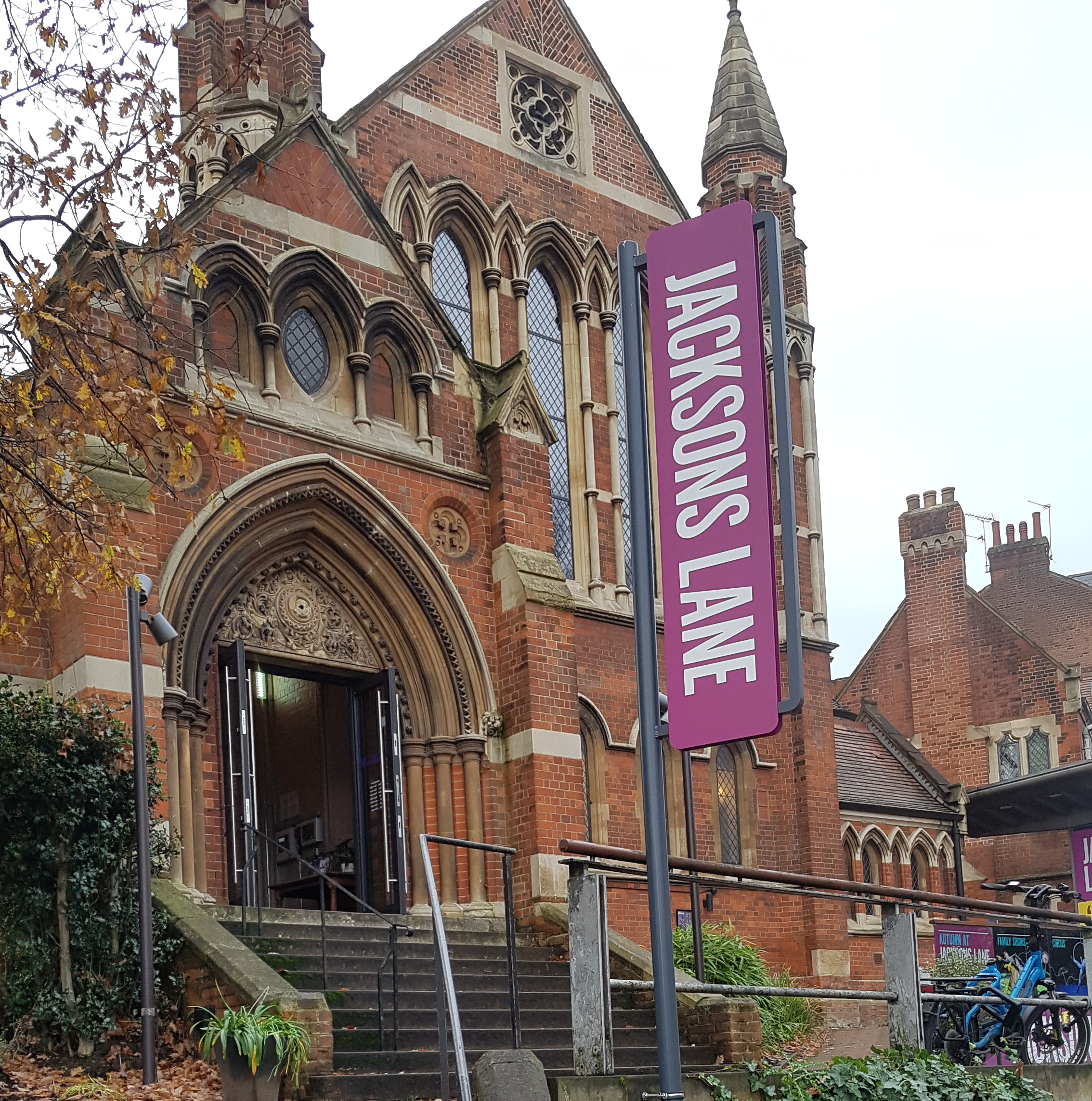
- The 1905 Wesleyan Methodist Church by W.H.Boney, saved from demolition by the Highgate Society, has since 1976 been the home of the Jackson’s Lane Community Centre, a popular local arts venue. In addition to music, drama and comedy, Jacksons Lane regularly features circus skills in its programme of education and events.
- The land bounded by Southwood and Jackson’s Lanes and Hillside Gardens was formerly Southwood, the 1738 mansion of General George Wade, who suppressed the Jacobite Rebellion at the Battle of Culloden Moor in 1745. Destroyed by fire in 1953, it is now a noted 1958 housing development by Andrews, Sherlock, Emerson & Keable; one of its rooms is reconstructed in the Geffrye Museum.
- Two bollards mark the former position of the local well.
- Wells Cottage opposite, named for its proximity to the well, is an important late Georgian house; note the early Sun Insurance Company firemark.
- The picturesque c.1800 Bank Point Cottage, at the apex of Southwood Lane and Jackson’s Lane.
- Hillside, an important 18th-century house. From c.1809 to 1815 it was the home of Colonel Joseph P. Jackson, for whom Jackson’s Lane was named, and later of Highgate historian, John Lloyd.
- The 1880 Southwood Court was demolished in 1965 to make way for Southwood Park, a large block by Douglas Stephens & Partners. Its former entrance, on Southwood Lane, bears the crest of John Grove Johnson, who lived there 1880-1908.
- The Arts and Crafts Church of St. Augustine of Canterbury, by J.D.Sedding and J. Harold Gibbons, 1885-1916.
- The Highgate Archway Company was formed in 1808 to build a by-pass to Highgate Hill, impassable in winter for horsedrawn vehicles. A tunnel beneath Hornsey Lane collapsed in 1813, and the plan changed to a cutting, with Hornsey Lane carried on a stone bridge by architect John Nash and engineer John Rennie. In 1900 it was replaced by Sir Alexander Binnie’s fine cast iron bridge; the date 1897 commemorates Victoria’s Jubilee, not its construction.
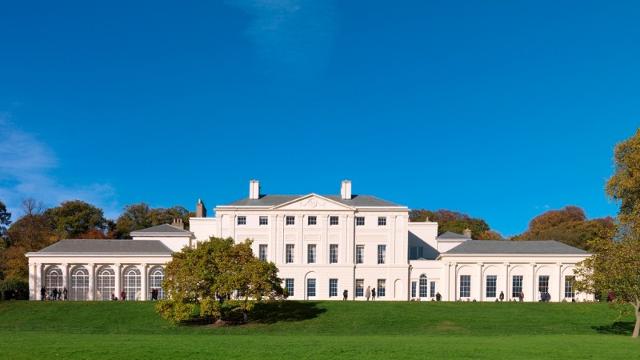
- Kenwood House, built 1764-79 by Robert Adam for the 1st Earl of Mansfield, whose decision, in the 1771 Somerset case, was an important step towards the abolition of slavery in the British Empire. Threatened with development in the 1920s, it was bought in 1925 by Edward Cecil Guinness, 1st Earl of Iveagh, and donated to the public. It is now managed by English Heritage. The magnificent house, priceless art collection and 74-acre estate are open free of charge; see their website for opening times.
- Athlone House, a fine 1870s mansion, was a cause celebre as local groups fought to prevent developers demolishing it. Their 18-year battle was crowned with success in 2015, and it has been repaired and restored by its current owners.
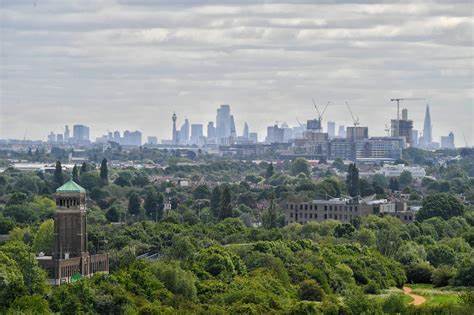
- Hampstead Heath, London’s best-loved open space. A relic of Middlesex countryside, its 320 hectares of fields, woods and ancient hedgerows are a haven for wildlife. There are cafes, playgrounds, events and sporting facilities. Outdoor Hampstead Summer Concerts feature music from a wide variety of genres including rock, pop, folk, jazz, classical and opera. Show on Google Maps
- The Gaskell estate (Gaskell, Kenwood, Storey and Yeatman Roads) is a well preserved example of early 20th century public housing by Hornsey Borough, 1902-13

How to Visit Highgate Cemetery London from Fantastic Beasts (2024)!
By: Author Sophie Pearce
Posted on Last updated: January 1, 2024
Categories ENGLAND , HARRY POTTER , LONDON
This post may contain affiliate links. Please see my disclosure policy for details.
Highgate Cemetery is one of the most famous cemeteries in London and is the final resting place of famous authors, musicians, poets, and philosophers.
This may sound strange but I have a list of favourite cemeteries around the globe. My top three are;
1. Greyfriars Kirkyard in Edinburgh, Scotland
2. Père Lachaise Cemetery in Paris, France
3. South Park Street Cemetery in Kolkata, India
But, the overgrown and atmospheric Victorian Highgate Cemetery garden has firmly jumped in third place now!
I don’t know what it is about historic cemeteries and their elaborate tombs and gravestones but I have a fascination with them. So, I really couldn’t resist a tour of Highgate Cemetery on my recent visit to London.
There are many famous people buried at Highgate like Karl Marx, Christina Rossetti, Elizabeth Siddal, George Eliot, and Douglas Adams.
Potterheads may also recognise this cemetery from Fantastic Beasts and the Crimes of Grindelwald where it is featured as Père Lachaise Cemetery in the movie.
Here is a complete guide on how to visit Highgate Cemetery London with ticket prices, opening times and the top things to do!
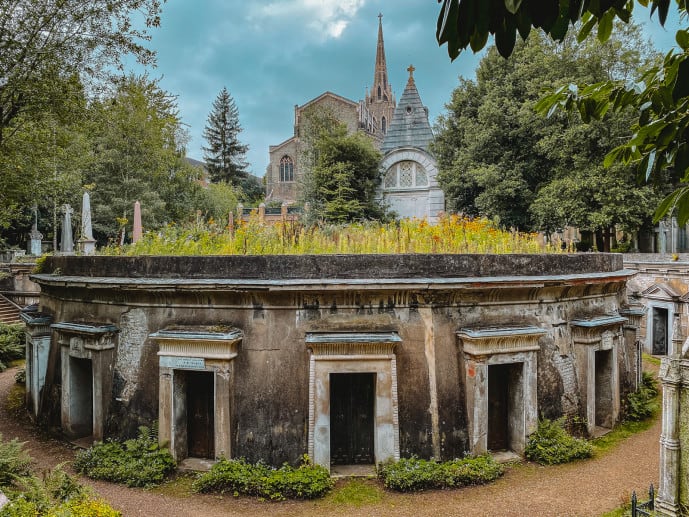
Why is Highgate Cemetery so famous?
Highgate is mostly famous because of those buried here. You’ll find big names through history like Karl Marx and George Eliot.
The graveyard was modelled on Père Lachaise Cemetery in Paris and the spectacular architecture of Egyptian Avenue and the Circle of Lebanon are breathtaking to behold.
In complete contrast, these burial tombs of the dead are brimming with life. You’ll find tranquility as you explore the graveyard amongst the overhanging trees, creeping vines, and flowers.
All of these things mixed together make Highgate Cemetery the most famous of the Magnificent Seven cemeteries in London!

Highgate Cemetery history
Highgate is part of the “Magnificent Seven” group of cemeteries in London and most were created as a reaction to the city’s overcrowded graveyards in the 19th century.
The growing population of London, high mortality rates, and low space for burials created a crisis! People were being buried in-between shops and taverns and even illegal burials took place.
Parliament allowed seven private graveyards to be created in London’s countryside to try to counter this. These were Kensal Green, West Norwood, Highgate, Abney Park, Brompton, Nunhead, and Tower Hamlets.
A company called The London Cemetery Company was created and £3,500 was paid to buy 17 acres of land in Highgate.
The cemetery was finished in 1839 and dedicated to St James by the Lord Bishop of London. The first burial was Elizabeth Jackson in 1839 who lived in Little Windmill Street Soho and she died at just 36 years old.

Highgate had an ideal location with fabulous views of London and many wealthy people wanted to invest. Julius Beer spent an enormous sum of £5,800 for a tomb for his daughter Ada.
Later, Highgate had two chapels, the Egyptian Avenue containing sixteen vaults and the Circle of Lebanon containing a further sixteen tombs.
By 1854, Highgate Cemetery was almost reaching capacity. So, in 1856, a ‘New Ground’ was created which is known as East Highgate today. Karl Marx was buried here in 1883.
During World War I and II, many of the people who worked in the cemetery were called to fight and people no longer wanted elaborate burials and expensive tombs.
It was eventually abandoned and declared bankrupt in the 1960s. In 1975, the Friends of Highgate Cemetery was formed and started to restore the graveyard.
Today, it’s Grade I listed by English Heritage and is open to the public to explore. Guided tours are run by volunteers.

The Highgate Cemetery Vampire
One of the most interesting stories associated with this cemetery is about the Highgate Vampire hysteria.
It caused a media sensation and is still talked about today. It’s even been mentioned in TV shows like Buffy the Vampire Slayer.
In the late 1960s, when Highgate was abandoned, there were reports of an apparition stalking the site.
Locals reported seeing a tall grey figure like a spirit with glaring red eyes. Then foxes started dying with their throats cut which further added to the fact that this could be the result of a vampire attack.
These rumours were partly caused by the horror movie company Hammer filming at Highgate which resulted in grave robberies and the desecration of tombs. There were even bodies stolen or found with stakes in their hearts!
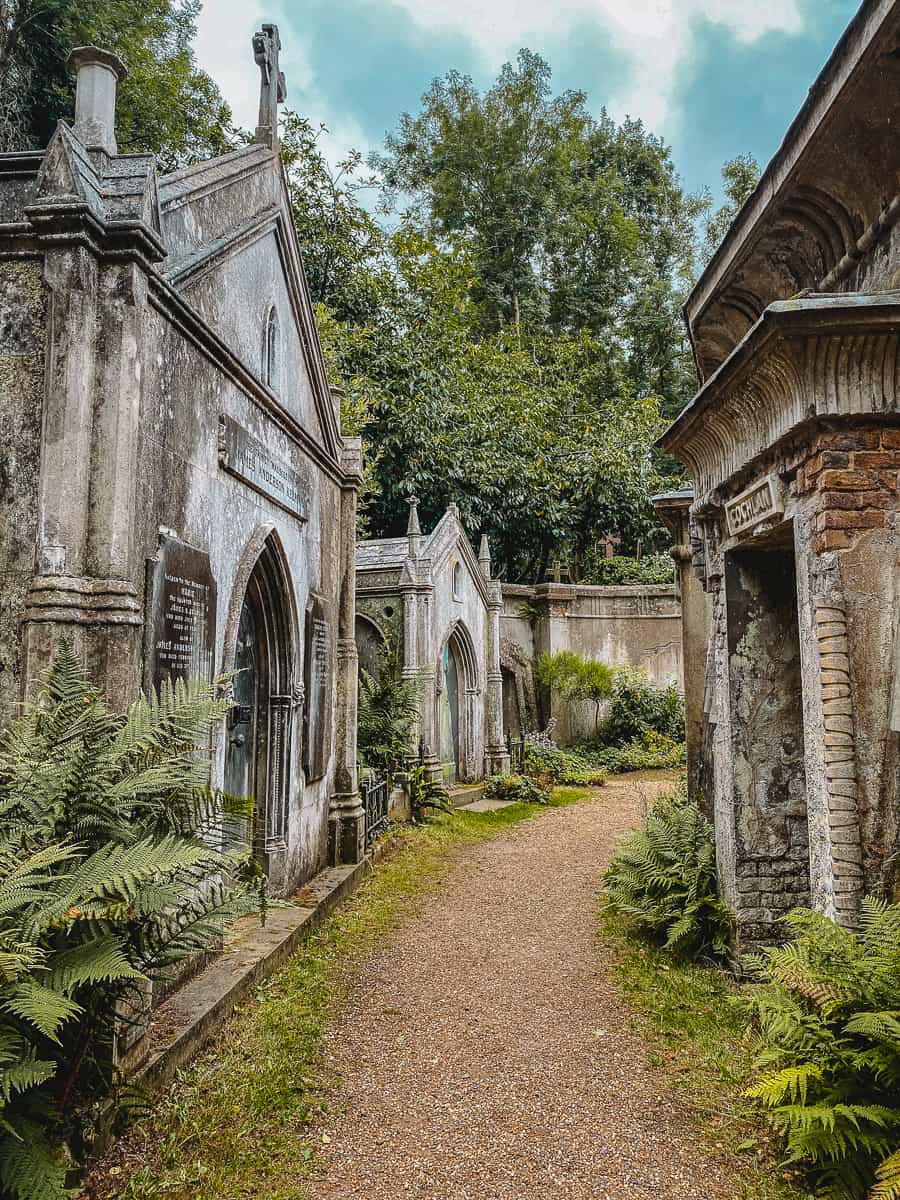
The Highgate Vampire sensation escalated and British Occultist David Farrant and priest Sean Manchester both claimed to have eyewitness accounts of the vampire at Highgate.
Friday 13th March 1970, Manchester wanted to perform an exorcism and Farrant wanted to hunt it down. These events were filmed on live television and a few hours later a mob descended on the gravesite overwhelming police security.
The two Vampire hunters became rivals, writing separate accounts about their experience with the Highgate Vampire. They threatened to fight each other in “magician duels”.
Farrant was eventually arrested and tried at the Old Bailey for damaging graves and interference with a corpse at Highgate. He was sentenced to five years but only served three.
The rivalry between Farrant and Manchester continued for decades and each was trying to outdo the other with the Highgate Vampire story. This was still the case until Farrant’s death at 73 in 2019.

Who is buried at Highgate Cemetery?
There are over 170,000 people buried at Highgate in 53,000 graves. This Victorian cemetery has some big names buried here which is why it is such a famous graveyard in London.
There are too many to list. But, here are some of the most famous people buried at Highgate Cemetery;
- George Eliot (1819-1880) – also known as Mary Ann Evans. Novelist, poet, and journalist.
- Christina Rossetti (1830-94) – poet and sister of Dante Gabriel Rossetti founder of the Pre-Raphaelite Brotherhood.
- Elizabeth Siddal (1829 – 1862)- a model for Sir John Everett Millais’ ‘Ophelia’, poet, artist, and wife of Dante Gabriel Rossetti.
- Karl Marx (1818 – 1883) – philosopher, socialist, and author of the Communist Manifesto .
- Bruce Richard Reynolds (1931-2013) – the mastermind of the 1963 Great Train Robbery.
- Douglas Adams (1952 – 2001) – Sci-Fi author of The Hitchhiker’s Guide to the Galaxy
- Malcolm McLaren (1946 – 2010) – artist, singer, and punk icon. Manager of the Sex Pistols.
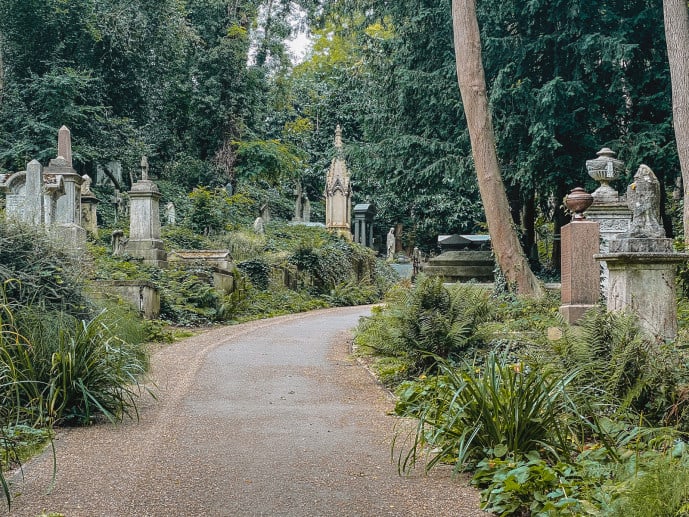
Highgate Cemetery Fantastic Beasts film location
Fans of Harry Potter and the Wizarding World may recognise Highgate Cemetery in Fantastic Beasts and the Crimes of Grindelwald.
Grindelwald summons his followers to the Lestrange Mausoleum in Cimetière du Père-Lachaise in Paris. But, this is actually Highgate Cemetery London.
The exterior of the Lestrange Mausoleum with the Wands into the Earth scenes were filmed around the Circle of Lebanon in West Highgate.
As well as Fantastic Beasts and the Crimes of Grindelwald, you may recognise this famous graveyard from Dorian Gray .
It’s a dark retelling of the Oscar Wilde classic novel about a man who appears eternally youthful but is afflicted by a dark curse. It stars Ben Barnes as Dorian and Colin Firth as Lord Henry Wotton.

How to visit Highgate Cemetery in London
Highgate Cemetery is located in Highgate, an affluent suburban area of North London on top of Highgate Hill.
This is at least a 30 – 45 minute journey on the tube from Central London so remember to factor that journey time into your visit when booking tickets.
The closest tube station to Highgate Cemetery is Archway on the Northern Line.
Then, you either need to get the bus or walk up Highgate Hill and through Waterlow Park to reach Swain’s Lane and the entrance of Highgate Cemetery.
There is no parking for cars and it is always encouraged to take public transport, cycle or walk to visit.
Highgate Cemetery address is Swain’s Lane, London, N6 6PJ. Click here for a Google Pin !
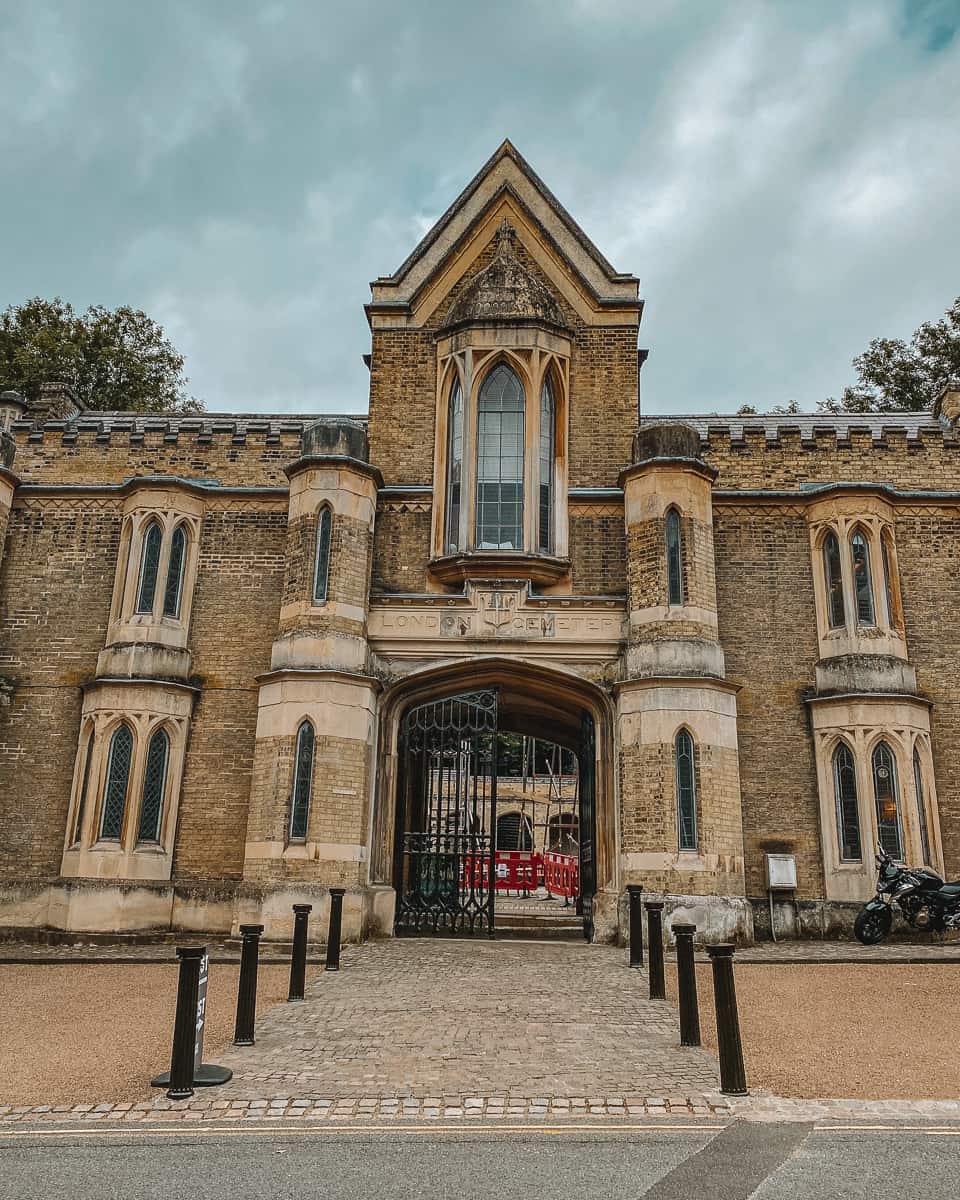
Do you have to pay to get into Highgate Cemetery?
Yes, entry to Highgate Cemetery is chargeable and all proceeds go to the Friends of Highgate Cemetery to help keep it open to the public.
Many people don’t realise but there are actually two sides to Highgate Cemetery;
- West Highgate – this is the oldest and more elaborate graveyard with Egyptian Avenue, Circle of Lebanon (Fantastic Beasts film location), and Catacombs. Entry is by timed ticket and you can take a guided tour or visit self-guided.
- East Highgate – this is where you’ll find Karl Marx and modern gravestones like the death mask of Malcolm McLaren. You can visit any time. You can explore self-guided or take a guided tour but there is still an entrance fee.
If you plan to visit both West Highgate and East Highgate, I would purchase a West Highgate ticket as East Highgate is included in the price;
West Highgate ticket prices are £10 per adult and £6 per child for a self-guided tour. Guided tours are £15 for an adult and £8 per child. You must book a guided tour to see the catacombs.
East Highgate ticket prices are £4.50 per adult and 50p per child for a self-guided tour. Guided tours are £9.50 for an adult and £2.50 for a child.
Click here to book your ticket to Highgate Cemetery!

Which is better east or west Highgate Cemetery?
Personally, I found West Highgate far more impressive than East Highgate. But, then I have more interest in Victorian history so I may be a little biased.
West Highgate is the place with the elaborate overgrown tombs, catacombs, and Julius Beer mausoleum. It’s a lot more atmospheric and had a lot more stories to tell.
Eastgate Cemetery was interesting with the huge Karl Marx memorial and there are some modern and eccentric gravestones. However, I’ll always be a history girl.
I have wanted to see the Circle of Lebanon for years and the fact that they filmed Fantastic Beasts and Dorian Gray here was a bonus. It felt surreal to visit these locations in ‘real life’.

Highgate Cemetery tours
Both Westgate and Eastgate cemetery are available to book for a self-guided visit and this is what I did. I found it very peaceful and a relaxing stroll.
But, there is the option to book a guided tour of either west or east Highgate Cemetery. It’s important to note that there is not a tour that covers both graveyards in one sitting.
The tours last for around 70 – 75 minutes and are run by volunteers. These are a great option if you’d prefer to hear the fascinating stories of the people buried here.
Note: If you wanted to see the Highgate Cemetery catacombs, you must book a guided tour of Westgate. You cannot visit self-guided.

Highgate Ceremony opening times
Highgate Cemetery is open every day and all year apart from Christmas Day and Boxing Day.
It’s open from 10 am – 5 pm with the last entry being at 4 pm. But, from November – February gates close at 4 pm with the last entry at 3 pm.
You must book a timed entry ticket to West Highgate or East Highgate for a self-guided visit. You can do this online via their website .
Remember, you only need to purchase one West Highgate ticket to see both graveyards as Eastgate is included.
You can arrive 15 minutes before or 30 minutes after your entry time. This was a lifesaver as I totally underestimated the long walk from Archway tube station up Highgate Hill!

Things to do in Highgate Cemetery
So, what is there to see and do at Highgate Cemetery to make it worth visiting? Well, you’d be surprised how much there is to see.
It’s a huge site with many tombs and graves on both the east and west sides. You could spend hours here wandering around and admiring the architecture.
Here are all the amazing things to do in Highgate Cemetery.

1. Explore the overgrown gravestones & tombs
You could get lost for hours in Highgate admiring all the tombs, angels, animals, statues, and memorials here.
A notable tomb to look out for has to be the Sleeping Angel of Mary Nichols which is very beautiful with all the overgrown vines.
Also, look out for a sleeping lion called Nero. It totally reminded me of Aslan from The Lion, The Witch, and the Wardrobe.
It’s a memorial to George Wombwell who was the owner of Wombwell’s Travelling Menagerie of exotic animals in Victorian Britain.
There’s also a piano for the classical pianist Harry Thornton and the painter Patrick Caulfield’s gravestone has the words ‘D-E-A-D’ cut out in it. Not something you see very often!
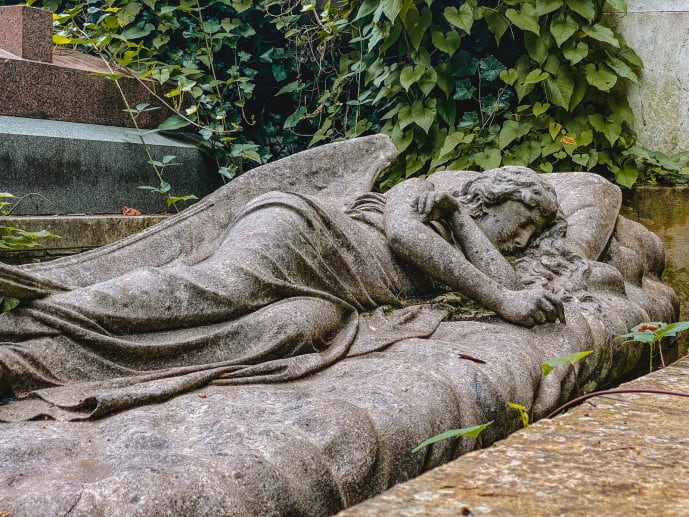
2. Visit Egyptian Avenue
When you first enter Highgate Cemetery you’ll eventually find a huge Egyptian gateway that is flanked by what remains of two tall obelisks.
This is the beginning of Egyptian Avenue which was inspired by the interest in ancient Egypt at the time with the discoveries of Napoleon.
You can walk through the gateway, and up a path lined with tombs on either side to the Circle of Lebanon. The top of the avenue is covered in tree vines and foliage making it very atmospheric.
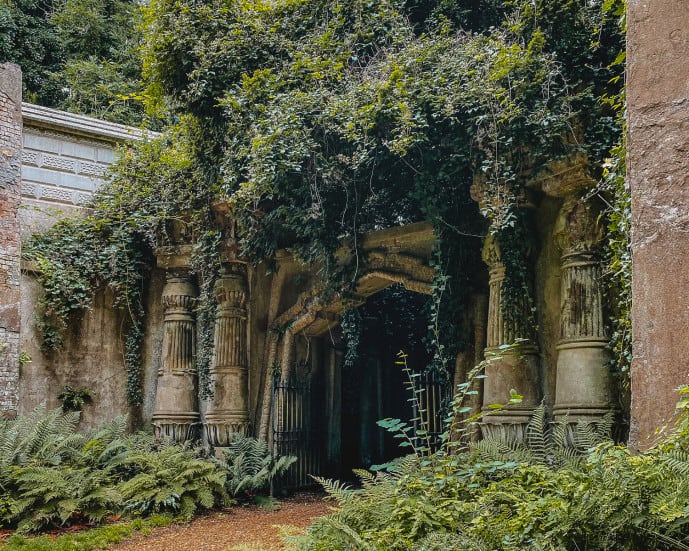
3. Walk around the Circle of Lebanon
The Circle of Lebanon is located at the very centre of West Highgate and is by far the most impressive sunken structure of the graveyard.
It is named after an ancient cedar tree from Lebanon which grew in the middle. It was part of the grounds of Ashurst House and was already 100 years old when the graveyard opened.
Unfortunately, this had to be removed due to decay in 2019. But, a new one has now replaced it.
In the Circle of Lebanon, you’ll find the entrances to many tombs and family vaults in Egyptian and classical design.
You can walk around below or get a great view of the circle from above near the Julius Beer tomb.

4. The Julius Beer Mausoleum
Julius Beer was a Victorian version of a millionaire. A rich businessman who was born in Germany but made his fortune in England with the London Stock Exchange. He also owned The Observer newspaper.
The Julius Beer Mausoleum is located in West Highgate above the Circle of Lebanon and it is the most expensive tomb in the whole graveyard costing £5,800 at the time.
It was a tribute made for his daughter Ada Beer who died in 1875 at the age of eight. It’s a huge tomb made of Portland Stone and has a bronze doorway.
A famous marble statue called ‘An Angel Raising up a Young Girl’ can be seen inside the tomb by Henry Hugh Armstead.
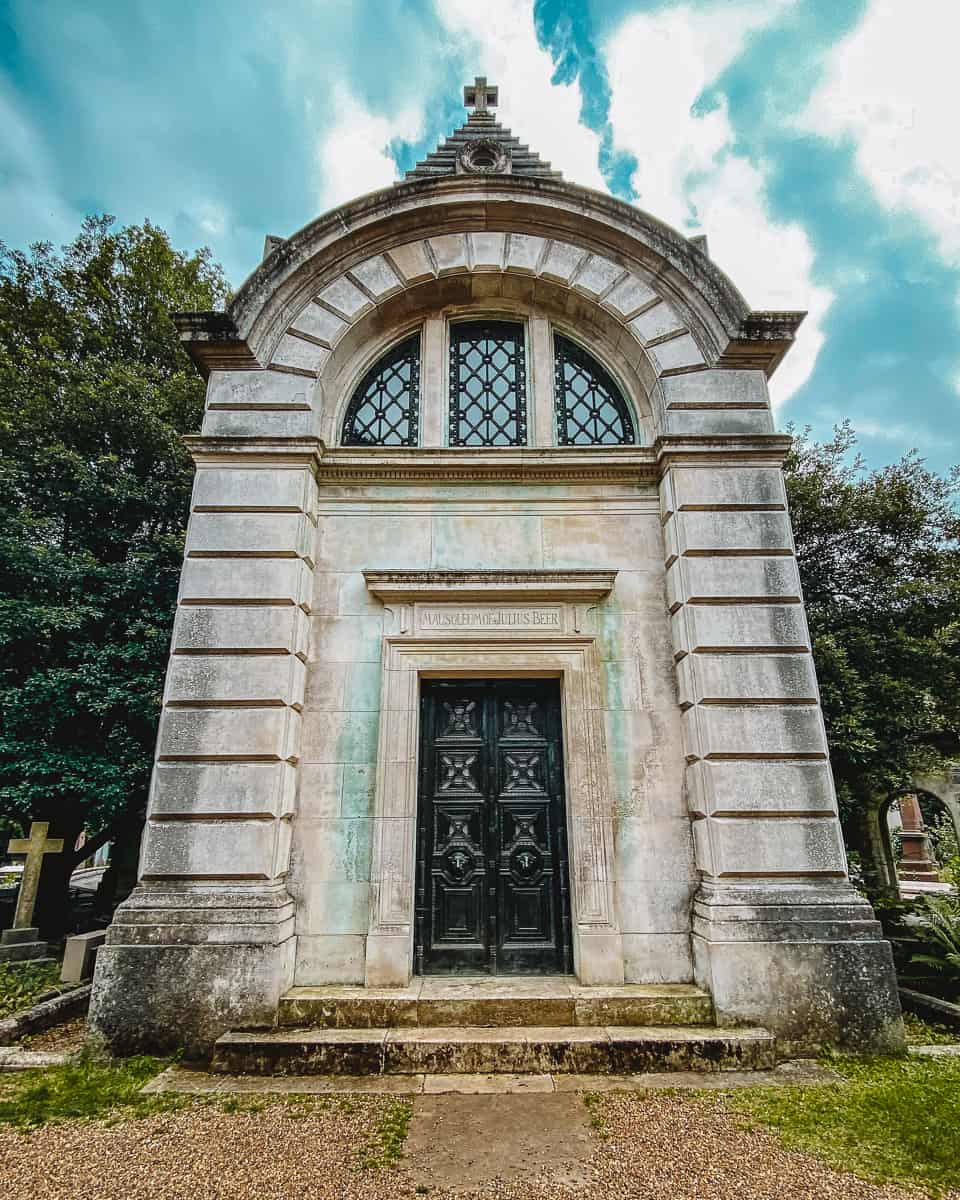
5. Find Fantastic Beast filming locations
You’ll find all of the Highgate Cemetery Fantastic Beasts filming locations in the Circle of Lebanon.
In the second movie, the Crimes of Grindelwald, Highgate Cemetery doubled up as Cimetière du Père-Lachaise in Paris with the Lestrange Mausoleum.
Of course, the interiors of the Lestrange Mausoleum where Gellert Grindelwald summons his followers were all filmed in a studio.
But, you can visit the entrance to the Lestrange tomb in the Circle of Lebanon which is where they filmed the Wands Into The Earth Scenes as well with Nicolas Flamel.
Click here to watch the Wands into the Earth scenes of Fantastic Beasts!
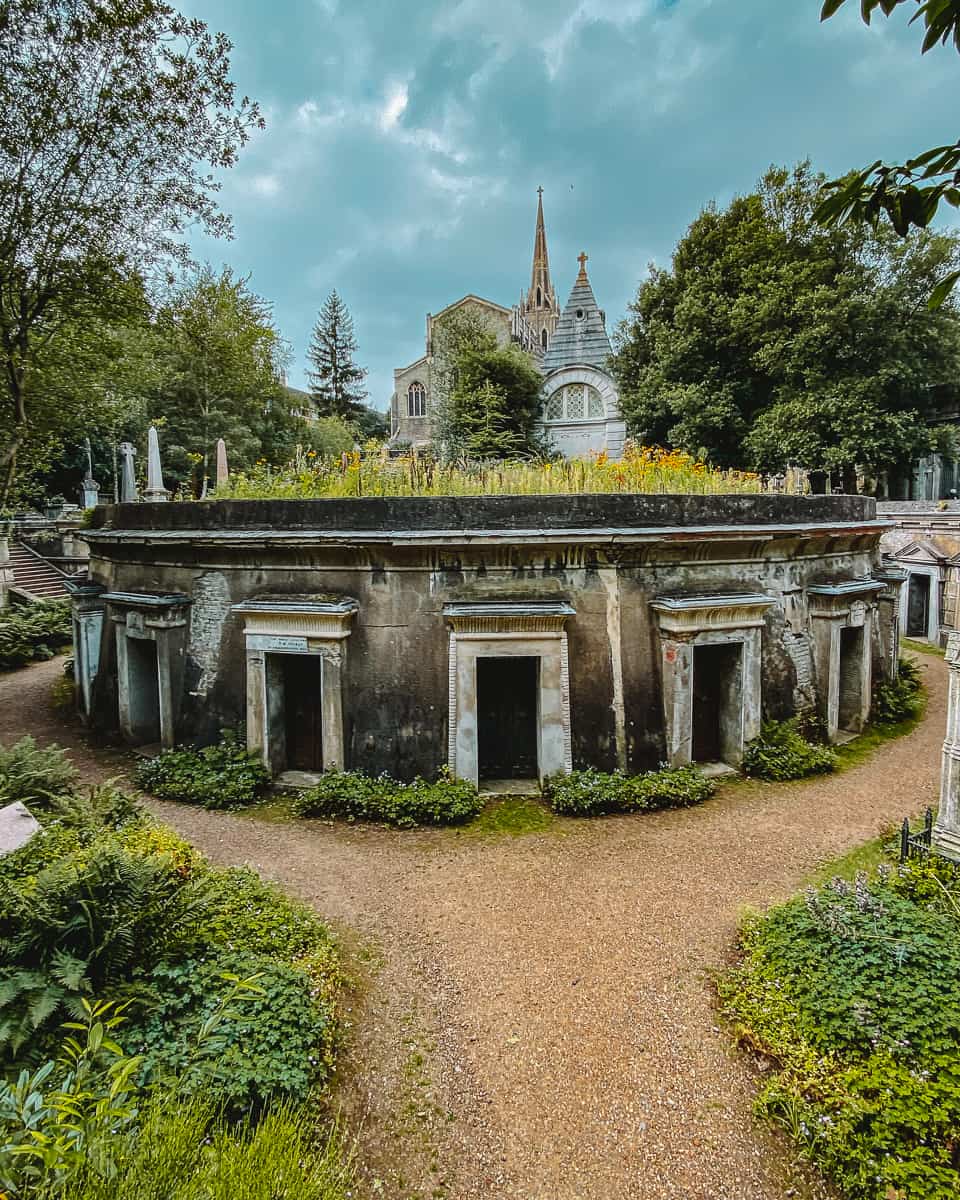
6. Highgate Cemetery catacombs
If you are taking a West Highgate guided tour, you’ll be lucky enough to visit the Highgate Catacombs or the terrace catacombs.
They were part of the original design in the 1830s and are one of the few catacombs in the UK that the public is allowed to visit.
You enter through a gateway and you’ll find plenty of graves interred in the walls here. Very eerie but worth seeing if you get the chance.
7. Visit the Highgate Rossetti graves
I’m a huge fan of the Pre-Raphaelite Brotherhood. I’m always seeking out their artwork and loved seeing Sir John Everett Millais’ ‘Ophelia’ in Tate Britain.
I was also a huge fan of the BBC period drama ‘Desperate Romantics’ starring Aidan Turner so I knew that I had to visit the Rossetti plot whilst I was here.
In the Highgate Rossetti plot, you will find the graves of Dante Gabriel Rossetti’s family including his sister Christina Rossetti who was a poet and author.
Also, his wife Elizabeth Siddal is buried here who was the model for Ophelia and muse for the Pre-Raphaelites. Beyond that, Lizzie was an incredibly talented artist and poet in her own right.
Elizabeth Siddal overdosed with laudanum and was buried with a notebook filled with Dante’s poems. It was a last act of love by Dante and he buried it in her red hair.
Seven years later her grave was secretly exhumed for this notebook in order to publish the poems and it appeared she hadn’t decomposed at all. It haunted Dante for the rest of his life.
Dante is not buried here, he’s buried in Birchington Grave near Margate under a huge Celtic cross made by his friend and contemporary Ford Madox Brown.
How to find the Highgate Rossetti graves: It is in West Highgate near the front of the cemetery. It’s not on the main footpath so you do have to veer off to find it. As soon as you walk up Colonnade Path make a sharp left at the first turning and continue down until you find a fence blocking off the path. Follow the small path to the left and the Rossetti plot is there.
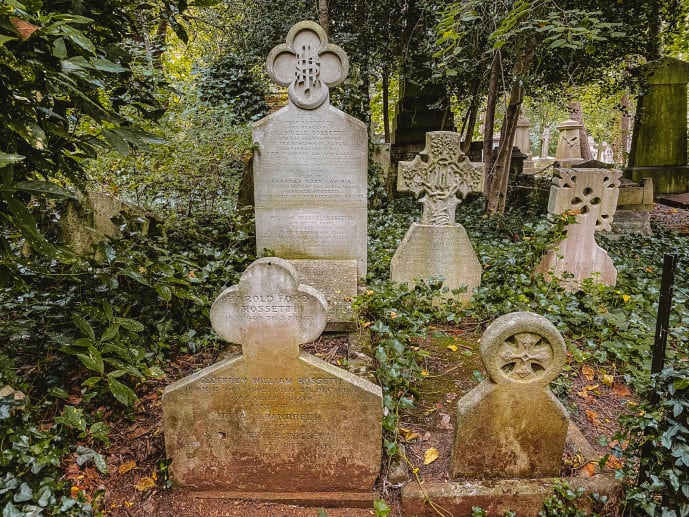
8. Find a dog called Lion with Tom Sayers
Similar to the famous tale of Greyfriars Bobby, you’ll find a loyal companion to Tom Sayers at Highgate who is a dog called Lion.
Thomas Sayers was a Victorian bare-knuckle boxer. It was a completely illegal practice in underground London but Sayers was a popular fighter as he could take down men much larger than he was.
He made so much money he was able to retire at 34 and Sayers could often be seen with a black mastiff called Lion.
Unfortunately, Sayers’ early retirement was short-lived and he died just 5 years later. When he died, over 10,000 people showed up at his burial to mourn him.
Lion was the “chief mourner’ at his funeral and later he was adopted by Sayers’ close friend who owned the Welsh Harp pub.
After Lion died, there was a public subscription and a statue of him was made by his master’s grave. Aww.

9. Visit the TWO Karl Marx graves
Karl Marx is known as the father of modern socialism and a humanist. He was a German-born philosopher and had many ideas on political philosophy.
He was the author of the Communist Manifesto and is buried at East Highgate. Today, his grave is the most visited of them all.
But, did you know that the huge memorial Tomb of Karl Marx isn’t actually where he was originally buried?
After his death, he was buried with his wife Jenny von Westphalen. It was in a cheap grave in a little unassuming corner plot as was his style when he was alive.
There’s a tiny flat gravestone about the size of a shoebox that you could easily miss if you aren’t looking. You can ask a staff member to help you locate it or use ‘ Find a Grave ’.
Their bodies were disinterred and reburied in the Tomb of Karl Marx in 1954. It causes a lot of controversies and the memorial has been subjected to vandalism. Now, there is 24-hour CCTV on the tomb.

10. Malcolm McLaren’s death mask
Malcolm McLaren is mostly known as the manager of the New York Dolls and the Sex Pistols with the controversial record “God Save the Queen”.
As an artist and singer himself, he is associated with the punk movement. He owned a boutique called SEX run by his former partner Vivienne Westwood in the 1970s.
He died of cancer in 2010 in a Swiss hospital and his grave can be found in East Highgate.
It says “Better a spectacular failure, than a benign success” and has a death mask of him set in bronze on the front.

Is a visit to Highgate Cemetery worth it?
100% YES! I think of all the “Magnificent Seven” cemeteries Highgate is the most impressive.
Now that they are offering self-guided tours of the graveyard, it makes it much easier to visit and there is so much to see and do here.
I couldn’t get over how tranquil and peaceful it was to wander about and it’s a great place to spend a relaxing afternoon in London. I’m already plotting how I can return this Halloween!

My top tips for visiting Highgate Cemetery
- Plan enough time – there is no direct tube to Highgate so it will be a long walk from Archway station or a bus. You’ll also need at least 1-2 hours for your tour.
- Bring water – there is no tearoom at Highgate Cemetery. There are some cafés and coffee vans nearby though.
- Wear sensible shoes – the ground at Highgate can get muddy and it’s often uneven due to the overgrowth.
- It’s very steep – the walk up to the Circle of Lebanon is very steep and there are stairs.
- Looking for a grave? – The Friends of Highgate provide a grave search service at a fee.
- Respect where you are – As much as it’s fun to explore, it’s still a graveyard so be mindful and respectful on your visit. Don’t run or touch/damage the gravestones.
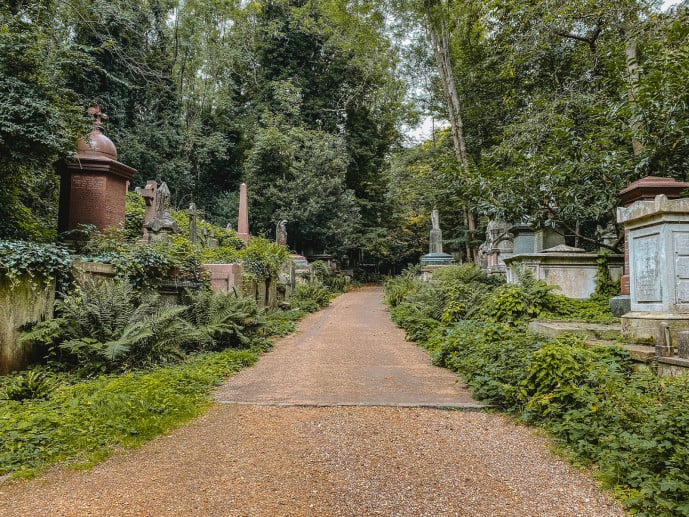
Highgate Cemetery FAQs
- How long do you need at Highgate Cemetery? I would plan at least 2 hours for your visit at Highgate Cemetery west and east. It’s a large site and you’ll need plenty of time to explore.
- How many people are buried at Highgate Cemetery? There are 170,000 people buried in 53,000 graves.
- What’s the oldest grave in Highgate Cemetery? The first burial was Elizabeth Jackson in 1839!
- Are there toilets at Highgate Cemetery? Yes, there are free toilets onsite near the entrance.
- Is Highgate dog friendly? No. Only assistance dogs are allowed inside.

Save time and book a tour

Book tours & tickets for London!
- Harry Potter guided walking tour
- Harry Potter Studio tour with transfer
- Tower of London & Crown Jewel tickets
- Thames River Cruise
Read more of my London articles
How to visit 221b Baker Street
How to visit Word on the Water – London’s Bookbarge
Why you must visit God’s Own Junkyard
How to visit The Hardy Tree
The hidden gem of St Dunstan in the East Church Garden
FREE things to do in the London Bridge District
Goodwin’s Court in London
How to find Diagon Alley at Cecil Court
A Harry Potter guide for Leadenhall Market
Magical cocktails at The Cauldron
Why you must visit the Harry Potter Photographic Exhibition
St Pancras Renaissance Hotel Staircase
London’s only Butterbeer Bar
How to visit Harry Potter’s 12 Grimmauld Place
Why you must visit the House of MinaLima
Dark Arts at Harry Potter Studios London
The secret Anne Boleyn symbols at Hampton Court Palace
Visiting Hogwarts in the Snow at Harry Potter Studios
How to visit the Hogwarts Divination Stairwell at St Paul’s Cathedral
Why you must visit Daunt Books Marylebone
A complete Mr. Fogg’s Tavern review
Celebrating Back to Hogwarts Day at King’s Cross Station
Magical London Harry Potter locations & experiences
Save How to visit Highgate Cemetery London from Fantastic Beasts for later!
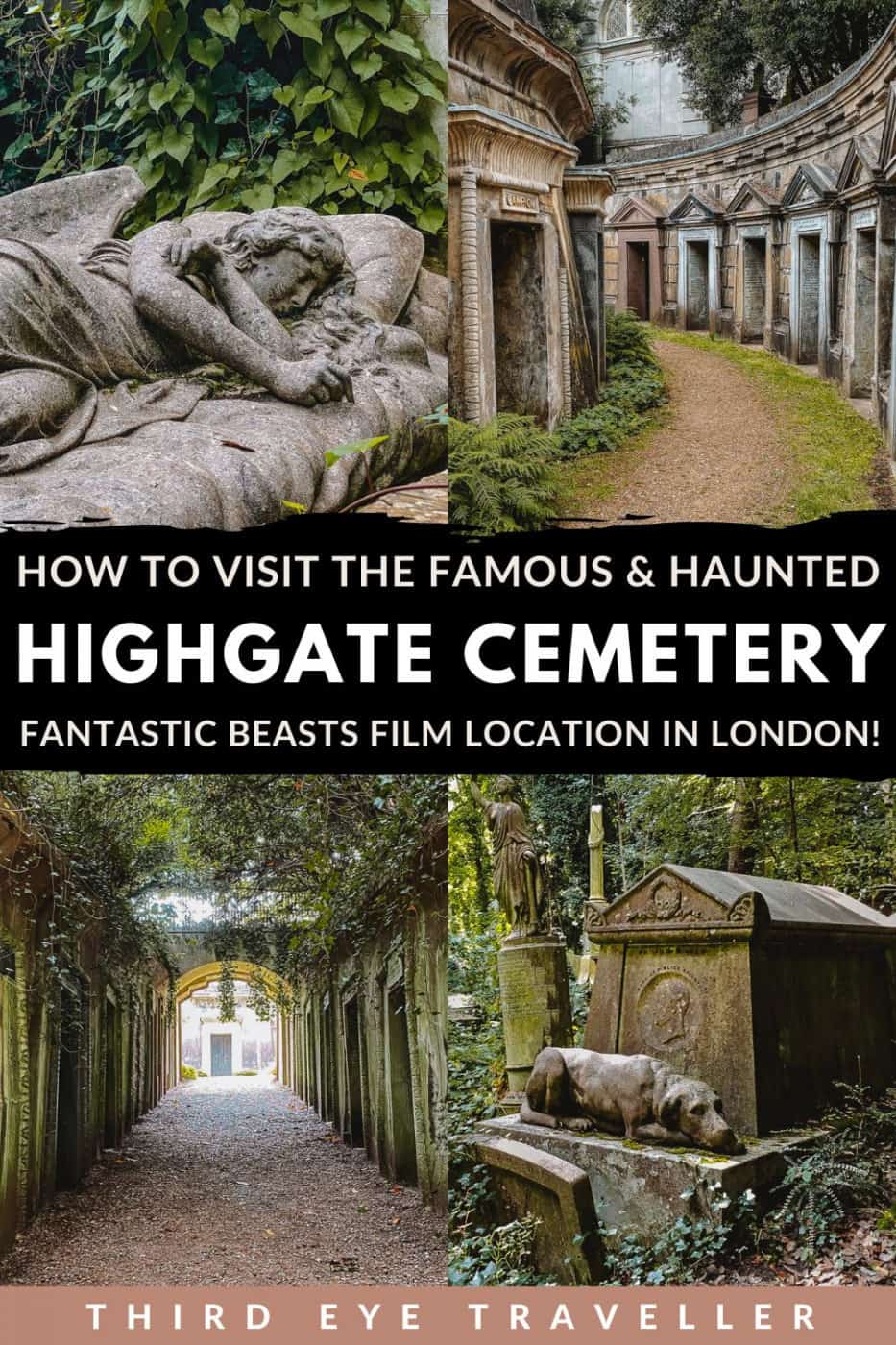
Allow us to make your visit here unforgettable
- Create Account
Signed in as:
- Full day London Tours
- Four Hour London Tours
- Highgate Cemetery Tour
- Hampstead & Heath Tour
- Layover/Airport Tours
- Photographers Dream Tour
- Black Cab Weddings
- Black Cab Floral bouquets
- Online Bookings
- The Spaniards Inn
- Taxi Weddings on Hitched
- Hampstead History
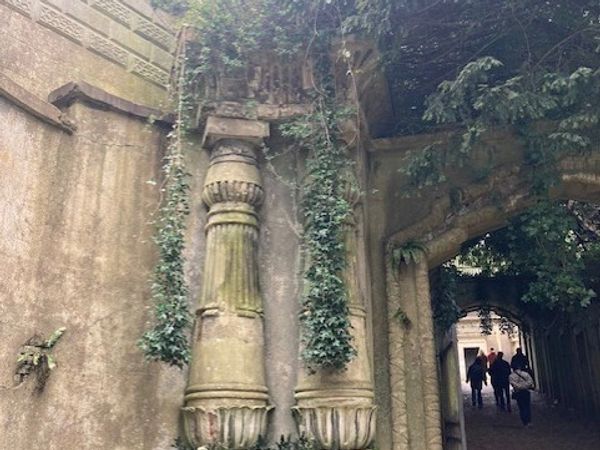
Highgate Cemetery - 4 Hour Tour
So why on earth should you visit a cemetery?
If your motivation is morbid curiosity about how the pioneering Highgate Cemetery was conceived to allay the fear of thwart Victorian grave robbers and body snatchers, then you are in luck. It was created because of the overcrowded church and graveyards in the city. Or perhaps you have a desire to see how the imposing Highgate Cemetery has been used as a filming location for the famed Hammer Film Productions horror films of the 1960s and 70’s through to modern period films such as ‘Fantastic Beasts ’and ‘Dorian Gray’? Or maybe you fancy a spot of celebrity grave spotting to enhance your daily nature walk? Highgate Cemetery delivers on all points.
The History of Highgate Cemetery is fascinating and prior to its opening in 1839, London's dead were buried in graveyards attached to individual churches. Lack of space, concern about public health and grave robberies inspired the idea of a private cemetery more akin to a public park and was enticing to those with the financial means in Victorian London.
Highgate Cemetery was the third such cemetery in a plan to provide seven (originally eight) large, modern cemeteries, now known as the "Magnificent Seven", around the outside of central London and were considered a great success.
Notable Residents include Radclyffe Hall, Charles Cruft (founder of Crufts dog show) famed scientist Michael Faraday and Alexander Litvinenko, the Russian dissident and defector murdered by poisoning in London, there are some very interesting back stories to some residents of Highgate cemetery.
Henry Gray, the anatomist, surgeon and author of Gray's Anatomy (considered the Doctors Bible, not the TV show) is interred in Highgate although his grave isn't visible to the public.
Charles Dickens’ wife Catherine is also buried here and although it isn't on the map, visitors are welcome to ask the guide to show her grave's whereabouts.
Elizabeth Siddal (with Christina Rossetti, the poet) have their resting places here along with Dante Gabriel Rossetti’s wife. The grave has connections with Dracula (inspiration for Lucy).
Some notable names from the arts include the Lord of the Rings actor Ian Holm (although not visible to the public), Douglas Adams, author of Hitchhiker’s Guide to the Galaxy and the beautiful and talented actress Jean Simmons's grave is here too. The Sex Pistols manager Malcolm McLaren with an interesting headstone is very near to the father of communism, Karl Marx. George Michael, also has his final resting place at Highgate Cemetery.
If you are a fan of Sherlock Holmes, why not visit the grave of Adam Worth. He was widely considered as the inspiration for Sir Arthur Conan Doyle's fictional criminal mastermind.
The cemetery is on 37 acres of woodland and grassland overgrown and gothic and is designated as Grade I on the Register of Historic Parks and Gardens. Aside from the historical significance of the cemetery itself and some of its residents, Highgate Cemetery is a peaceful and tranquil space to enjoy many of the species of flora and fauna that call the cemetery home.
There are two sides to the cemetery and both are filled with interesting features, monuments and famous residents.
The west side of the cemetery includes the iconic Egyptian Avenue, the Circle of Lebanon and the Terrace Catacombs (which are opened exclusively for guided tour participants).
Tickets can be purchased from https://highgatecemetery.org/visit#featurephoto382
Highgate Cemetery is open 10am to 5pm daily from March to October.
The Black Cab Tours will take you on a journey back in time to this fascinating and incredible place.
We will pick you up, bring you to Highgate cemetery, and take you to a lovely place to eat thereafter (optional). We will then bring you back to your drop off point.
Before booking the guided tour at the cemetery, please check our dates of availability. Feel free to call or email us with your dates.
Cab holds five people and price is per cab.
Highgate Cemetery
‘I need never have known existence’: Radclyffe Hall and LGBTQ+ visibility - The National Archives blog Gray's Anatomy - Wikipedia
Taste the Blood of Dracula, Christopher Lee, Hammer Films 1969 (baharna.com)
Adam Worth - Wikipedia
Jean Simmons - Wikipedia
Please note that any fees for venues, food and refreshments are payable to the vendors on the day!
Cancellation policy: Full refund if journey is cancelled 15 days before your trip. A 50% refund is available up to 8 days before your tour. No refund is available thereafter.
Copyright © 2024 The Black Cab Tours - All Rights Reserved.
Powered by GoDaddy
- Privacy Policy
This website uses cookies.
We use cookies to analyze website traffic and optimize your website experience. By accepting our use of cookies, your data will be aggregated with all other user data.

A Lady in London
And Traveling the World
Lady’s Guide to a Highgate Cemetery Tour
Today I want to share with you about a self-guided Highgate Cemetery tour in London. I don’t usually spend my free time in cemeteries. It’s not that I have anything in particular against gravestones or funerary urns. It’s just…well…it’s just that they creep me out a little bit. On Sunday, however, I made an exception.

Highgate, London
Braving the frigid London cold, my boyfriend and I took a post-lunch stroll across Hampstead Heath into Highgate .
As we wandered up the hill towards Highgate village, we came across the entrance to the local cemetery. Usually when this kind of thing happens, I keep walking.
Highgate Cemetery
But Highghate Cemetery is a rare exception. Like Paris’ Pere Lachaise or Prague ‘s Olsany, Highgate Cemetery is the place to be. Dead, that is.
And the English know it. In fact, they know it so well that they charge visitors a fee just to get in for a self-guided Highgate Cemetery tour—living visitors, that is. I’m sure they charge the dead a lot more than that.
And that doesn’t even grant one full access to the whole thing, just the East Cemetery. No, if you want to see the really famous tombs, you have to take a guided Highgate Cemetery tour of the West Cemetery.

Highgate Cemetery Tour
Having heard about Highgate Cemetery in the past and being slightly embarrassed about living so close without ever visiting, my boyfriend and I hopped into the queue for our chance to peruse the Victorian mausoleums of the rich and famous. And socialist.
That’s right, Highgate Cemetery is home to what is left of Karl Marx. His massive monolith of a tombstone—complete with a granite sculpture of his head that could kill any bourgeois capitalist in a hot revolutionary minute—was both impressive and unmissable.
It also made him look a bit like Santa Claus.

Further along on our self-guided Highgate Cemetery tour we came across rows of stones so old the writing had faded. Behind them lay stones that were set back in the woods among decaying foliage and thick tree branches.
The recent snow having melted away, the stones rose up out of inches-deep water that gave the place somewhat of a swampy feel.
Continuing our Highgate Cemetery tour, I started to notice a pattern among the headstones. It led me to believe that there must be a catalogue from which people can choose a marker for their grave.
The most popular stone from the fall 1946 season seemed to be a granite cross with cold gray lilies adorning the rock.
But not all the stones were so blase. A little further down the path we came across a unique marker in blueish marble. Its engraving was simple, yet effective.
It read: DEAD. It was nice to see that some English people retain their sense of humor even after death.

As we walked back towards the entrance on our Highgate Cemetery tour, we noticed an increasing number of stones with peoples’ greatest life accomplishments carved into them.
We learned of one dead man’s membership in several government commissions, another’s inclusion in an exclusive London members’ club, and yet another’s passion for ceramics.
It made me laugh a bit to think about whether it was the people within the graves that requested such things to be immortalized with their remains, or if it was their grieving relatives that wanted the world to know how accomplished they were.

My boyfriend promptly informed me that his headstone would read “He Let Jesus Take the Wheel”. I hope he’s not going to request to be buried in a church cemetery.
Our Highgate Cemetery tour came to an end with a rather bizarre stone that had a giant granite dog sculpture sitting atop it.
With no canine reference on the grave marker, I’m not sure if it was a ploy to scare off potential grave robbers or if possibly the dog was interred with its owner.
Or maybe it was just something the family did to help them spot their loved one’s grave in the sea of catalogue-bought lily-covered crosses. Either way, I liked the dog.

As we made our exit at the end of our Highgate Cemetery tour , I couldn’t help but feel a bit relieved to escape the rather gray world of death and be back in the more hopeful world of the living.
The cold persisted beyond the gates of the cemetery, but as we walked back through Hampstead Heath , the budding crocuses reminded us that spring was coming and new life would soon emerge from the necrotic ground of London.
Find this post helpful? Buy me a coffee!
New here? Join thousands of others and subscribe to the A Lady in London blog via email .
2 Comments on Lady’s Guide to a Highgate Cemetery Tour
Thank you for the tour of cemeteries. I have only been in those to mourn. One day it would feel special walking through one and remembering those who may or may not have been forgotten. The “Dead” one is very funny and earthy. Although I love cats and kittens, I really liked the dog on the grave. Thank you again.
You’re welcome!
Leave a Reply Cancel reply
Your email address will not be published. Required fields are marked *
This site uses Akismet to reduce spam. Learn how your comment data is processed .
© Copyright A Lady in London 2007 - 2024. Privacy Policy.
OPEN DAILY 10AM - 5PM march to october. CARD PAYMENTS ONLY.
Highgate Cemetery is open daily except Christmas Day and Boxing Day. We recommend first-time visitors take a guided tour. Please see the 'visit' page for all ticket options.
- Visit the Cemetery
- View events
- Plan a burial or memorial
Opening times
March to october.
Open daily from 10am to 5pm Last entry 4.30pm
November to February
Open daily from 10am to 4pm Last entry 3.30pm Closed Christmas Day and Boxing Day
How to get here
Please visit us by walking, cycling, or public transport.
Find out more on our Visit page.
Email [email protected]
To find out whether someone is buried here, go to Searches . We have an online search tool.
Telephone enquiries
Monday to Friday General enquiries 020 8340 1834 Burials, memorials, grave ownership 020 8347 2471 Filming or photography requests 020 8347 2472 Group visits 020 8347 2475 Volunteering 020 8347 2474
You can download a full set of our rules here .
- The Friends
© 2024 Friends of Highgate Cemetery Trust. Registered Charity No. 1058392. Company Limited by Guarantee. Registered in England No. 3157806. Registered office Swain’s Lane, London N6 6PJ
- Top of page
- Privacy notice
Website by MID
What to do in Moscow
Ballet at the bolshoy, cathedral of christ the saviour, drinking & nightlife, entertainment, house-museums, the museum of modern history, the new tretyakov gallery, novodevichiy convent, patriarch’s ponds, the pushkin museum of fine arts, sandunovsky baths, the tretyakov gallery.
Travel in Moscow is easier than you might think: the city’s general layout is a series of concentric circles and radial lines emanating from Red Square and the Kremlin, and the centre is compact enough to explore on foot. Moscow’s sights can also be mapped as strata of its history: the old Muscovy that Russians are eager to show; the now retro-chic Soviet-era sites such as VDNK and Lenin’s Mausoleum; and the exclusive restaurants and shopping malls that mark out the new Russia. A CityPass is a good bet if you plan on seeing several of the city's heavyweight attractions.
Despite its size, Moscow's concentric layout is easier to grasp than you'd imagine, and the city's famous metro ensures that almost everywhere of interest is within fifteen minutes' walk of a station. Red Square and the Kremlin are the historic nucleus of the city, a magnificent stage for political drama, signifying a great sweep of history that includes Ivan the Terrible, Peter the Great, Stalin and Gorbachev. Here you'll find Lenin's Mausoleum and St Basil's Cathedral, the famous GUM department store, and the Kremlin itself, whose splendid cathedrals and Armoury Museum head the list of attractions. Immediately east of Red Square lies the Kitay-gorod, traditionally the commercial district, and originally fortified like the Kremlin. Stretches of the ramparts remain behind the Metropol and Rossiya hotels, and the medieval churches of Zaryade and the shops along Nikolskaya ulitsa may tempt you further into the quarter, where you'll find the former headquarters of the Communist Party. Take a private Kremlin tour to skip the lines for the Kremlin grounds and cathedrals.
The Kremlin and Kitay-gorod are surrounded by two quarters defined by rings of boulevards built over the original ramparts of medieval times, when Moscow's residential areas were divided into the "White Town" or Beliy Gorod, and the humbler "Earth Town" or Zemlyanoy Gorod. Situated within the leafy Boulevard Ring that encloses the Beliy Gorod are such landmarks as the Bolshoy Theatre and the Lubyanka headquarters of the secret police – with its "KGB Museum" – while the Zemlyanoy Gorod that extends to the eight-lane Garden Ring is enlivened by the trendy old and new Arbat streets, with three Stalin skyscrapers dominating the Ring itself.
Beyond this historic core Moscow is too sprawling to explore on foot. Krasnaya Presnya, Fili and the southwest describes a swathe which includes the former Russian Parliament building (known as the White House); Tolstoy's house and the Novodeviche Convent and Cemetery; Victory Park, with its war memorials and Jewish museum; and Moscow State University in the Sparrow Hills – the largest of the Stalin skyscrapers.
Across the river from the Kremlin, Zamoskvorechye and the south are the site of the old and new Tretyakov Gallery's superlative collection of Russian art. Private guided tours are recommended for art enthusiasts. Here too you'll find Gorky Park, the Donskoy and Danilov monasteries that once stood guard against the Tartars, and the romantic ex-royal estates of Tsaritsyno and Kolomenskoe – the latter known for staging folklore festivals and historical pageants.
Taganka and Zayauze, east of the centre, likewise harbour fortified monasteries – the Andronikov, Novospasskiy and Simonov – and the erstwhile noble estates of Kuskovo and Kuzminki, but the main lure for tourists is the Izmaylovo art market. Inside the Izmaylovo Kremlin, a cultural centre, there are also a range of attractions, from the Bread Museum and the Vodka History Museum to the fascinating Museum of Russian Toys.
Moscow's Northern Suburbs cover a vast area with a sprinkling of sights. Foremost is the Memorial and Museum of Cosmonautics and VDNK. For anyone interested in the glory days of the space race, and its monumental landmarks and propaganda, a visit is a must, like on this guided tour . In the vicinity are the Ostankino Palace, Moscow's Botanical Gardens and TV Tower. West from here, the Museum of Soviet Arcade Machines will appeal to visitors with an interest in Soviet social history, too.
Outside Moscow there's scope for day-excursions to the Trinity Monastery of St Sergei, the Abramtsevo artists' colony, Tchaikovsky's house in Kiln, Lenin's estate at Gorki Leninskie, and the battlefield of Borodino, where the battle is re-enacted every September. You can also head out to the village of Aksakovo for a beautiful two-hour troika ride. Further afield, the historic towns of Vladimir and Suzdal are graced by splendid cathedrals and monasteries attesting that they were the seat of a principality when Moscow was merely an encampment. Suzdal is one of the loveliest towns in Russia, and definitely merits an overnight stay. It's also possible to visit the Aviation Museum at Monino air base, en route to Vladimir, if you take the trouble to get permission ahead of time.
This article includes affiliate links; all recommendations are editorially independent.
Top image: Komsomolskaya metro station © Gubin Yury/Shutterstock
While Moscow's Bolshoy Ballet (also spelt "Bolshoi") is going through uncertain times, plagued by infighting and rivalries (not least the recent acid attack on Artistic Director Sergei Filin), few would deny themselves the chance to see this legendary company. During the season, evening performances start at 7pm, and Saturday and Sunday matinees at noon; there are no shows on Monday.
You can see what’s on currently and for a few months ahead on the Bolshoy’s website – although the English version sometimes lags behind the Russian one. The ballet company is usually abroad over summer and sometimes also in the autumn, leaving the junior corps de ballet to entertain visitors – although star dancers are certain to be in Moscow for the opening of the new season in September. For more on Russian ballet visit www.for-ballet-lovers-only.com . For those not interested in ballet but more in the historical aspect of the Bolshoy theatre, take a guided historic tour of the grounds.
If you're more interest in Folk Dances, visit the Kostroma Folk Dance show , the most authentic one in Moscow.
Built as a symbol of gratitude to divinity for having aided the Russians’ defeat of Napoleon in 1812, the Cathedral of Christ the Saviour (daily 10am–6pm), opposite the Pushkin Museum of Fine Arts at Volkhonka ul. 15, was demolished in 1931 in favour of a monument to socialism. The project was soon abandoned and years later, under Krushev’s rule, the site was turned into the world’s largest public swimming pool. In 1994 the Cathedral was rebuilt and is now a symbol of Moscow’s (and Russia’s) post-Communist religious revival.
Moscow isn’t a city that goes to bed early. Many venues act as a café by day, restaurant in the early evening, and both bar and club at night. This can cover anything from an arthouse café with a spot of live music to a dance warehouse, or a fancy nightclub with a restaurant and casino. Most cater to a certain crowd, whether it’s creative professionals, students, shell-suited "flatheads" or designer-draped models. While formal dress codes are rare, face control (feys kontrol) is widespread. Russians distinguish between “democratic” face control (aimed at keeping out hooligans and bandits), and the kind that favours the rich (never mind how they behave). It’s unwise to rile club security staff, however rude they might be.
There are scores of trendy bars and clubs on Krasny Oktyabr, a former chocolate factory building located across the river from Kropotkinskaya and now home to some of Moscow’s hippest nightlife.
Learn how to walk, talk, drink and party like a Russian on a small group with Russian spirits.
Moscow's gastronomic scene has improved enormously over the last five years, with hundreds of new cafés and restaurants offering all kinds of cuisine and surroundings, aimed at anyone with a disposable income – from mega-rich New Russians and expense-account expatriates to fashion-conscious wealthy teenagers.
For cheap eats head to a canteen, where you can compile a tray of dishes smorgasbord-style. Take advantage of the great-value business lunches offered by cafés and restaurants during the week between noon and 4pm.
For well over a century, Moscow has been one of the world’s great centres of classical music, opera and ballet, most famously represented by the Bolshoy Theatre but also by its orchestras and choirs. Theatre can be tricky for non-Russian speakers though circus and puppetry surpass the language barrier. Moscow’s film industry and annual international film festival dwarf St Petersburg’s, but at other times most cinemas screen Hollywood blockbusters.
All this can be surprisingly good value, provided you ask for the cheapest ticket available ( samiy deshoviy bilyet ).
Gorky Park on ul. Krymskiy Val 9 (R100; Park Kultury) is a large park occupying an area of over 700 acres along the river. In the winter the frozen-over paths become one of the city’s largest ice rinks, while in the summer Muscovites stroll the area savouring an ice cream.
Admirers of Bulgakov, Chekhov, Gorky and Tolstoy will find their former homes preserved as museums. Anton Chekhov lived at Sadovaya-Kudrinskaya ul. 6, in what is now the Chekhov House-Museum (Tues, Thurs & Sat 11am–6pm, Wed & Fri 2–8pm; R100, student R60; Barrikadnaya), containing humble personal effects, while the Gorky House-Museum (Wed–Sun 11am–6pm, closed last Thurs of the month; free; Arbatskaya) on the corner of Povarskaya ulitsa and ulitsa Spiridonovka is worth seeing purely for its raspberry-pink Art Nouveau decor. Leo Tolstoy admirers should head to the wonderfully preserved Tolstoy Memorial Estate on ul. Lva Tolstogo 21 (Tues, Wed & Fri 10am–6pm, Thurs 1–9pm, Sat & Sun 11am–6pm; R200, student R60; Park Kultury) where the Tolstoy family lived after moving to Moscow from their country estate in 1881, and where the novelist wrote War and Peace . The Bulgakov Museum at Bolshaya Sadovaya ul. 10 (Sun–Thurs 1–11pm, Fri & Sat until 1am; free; t 495/970-0619; Mayakovskaya), is the house where the novelist lived from 1921 to 1924. There are nightly tours (1–6am; R550; phone a week in advance for tour in English).
The Museum of Modern History at Tverskaya ul. 21 (Tues, Wed, Fri 10am–6pm, Thurs & Sat 11am–7pm, Sun 10am–5pm, closed last Fri of the month; R100; Tverskaya) brings the Communist past alive with striking displays of Soviet propaganda posters, photographs and state gifts, although there’s a frustrating lack of English translation.
Opposite the entrance to Gorky Park at Krymskiy Val 10, the New Tretyakov Gallery (Tues–Sun 10am–7.30pm; R360, student R220; Park Kultury) takes a breakneck gallop through twentieth-century Russian art, from the avant-garde of the 1910–1920s to contemporary artists. Full and illuminating commentary in English is a bonus.
A cluster of shining domes above a fortified rampart belongs to the lovely Novodevichiy Convent (daily 10am–5pm; closed Tues & last Mon of month; R150; Sportivnaya), founded by Ivan the Terrible in 1524. At its heart stands the white Cathedral of the Virgin of Smolensk. In its cemetery lie numerous famous writers, musicians and artists, including Gogol, Chekhov, Stanislavsky, Bulgakov and Shostakovich.
One of Moscow’s most exclusive neighbourhoods, Patriarch’s Ponds is a pleasant spot (there’s actually just one pond) for a summer stroll or an ice-skate on its frozen waters in the depths of winter. The area is also known for being the location of the opening scene of Mikhail Bulgakov’s magical realist novel The Master and Margarita .
Founded in 1898 in honour of the famous Russian poet, the Pushkin Museum of Fine Arts at Volkhonka ul. 12 (Tues–Sun 10am–7pm; R150–300, separate fee for Impressionist wing; Kropotkinskaya) holds a hefty collection of European paintings , from Italian High Renaissance works to Rembrandt, and an outstanding display of Impressionist works.
Get the city grit out of your skin at the exquisitely elaborate Sandunovsky baths (Neglinnaya ul. 14 bldg 3–7 w www.sanduny.ru ; Teatralnaya), patronized by Muscovites since 1896. Join Russian businessmen and socialites in the banya , a wooden hut heated with a furnace, where you are invited to sweat out impurities, get beaten energetically with birch twigs, and finally plunge into ice-cold water. Men’s and women’s baths are separate, with the women’s section more like a modern spa. A three-hour session costs R1000. Daily 8am–10pm.
Founded in 1892 by the financier Pavel Tretyakov, the Tretyakov Gallery at Lavrushinskiy per. 10 (Tues–Sun 10am–7.30pm; R360, student R220; Tretyakovskaya) displays an outstanding collection of pre-Revolutionary Russian art. Russian icons are magnificently displayed, and the exhibition continues through to the late nineteenth century, with the politically charged canvases of the iconic realist Ilya Repin and the Impressionist portraits of Valentin Serov, including The Girl with Peaches , one of the gallery’s masterpieces.
To see Soviet triumphalism at its most prolific, visit the Exhibition of Economic Achievements, or VDNKh (Prospekt Mira; VDNK/Prospekt Mira), with its statue upon statue of ordinary workers in heroic poses. Adding to the scene is the permanent trade-fair-cum-shopping-centre housed in the grandiose Stalinist architecture of the All-Union Agricultural Exhibition of 1939, and the People’s Friendship Fountain, flanked by Soviet maidens, each symbolizing a Soviet republic. One of the most hubristic Soviet monuments ever built is the Space Obelisk , which bears witness to Soviet designs on the stratosphere. Unveiled in 1964 – three years after Gagarin orbited the earth – it’s a sculpture of a rocket blasting nearly 100m into the sky on a plume of energy clad in shining titanium. Moscow’s giant Ferris wheel, small amusement park and numerous food vendors help to create a fairground-like atmosphere. For a fantastic view over the VDNK, take the lift to the 25th floor of Hotel Cosmos across Prospekt Mira.
Discover more places in Russia
- The Kremlin
The Rough Guides to Russia and related travel guides
In-depth, easy-to-use travel guides filled with expert advice.

Find even more inspiration here

Planning your own trip? Prepare for your trip
Use Rough Guides' trusted partners for great rates
written by Rough Guides Editors
updated 26.04.2021
Ready to travel and discover Russia?
Get support from our local experts for stress-free planning & worry-free travels.
- Where to stay
- Travel advice
Novodevichy Convent and cemetery in Moscow: tickets, cemetery map
- August 26, 2023
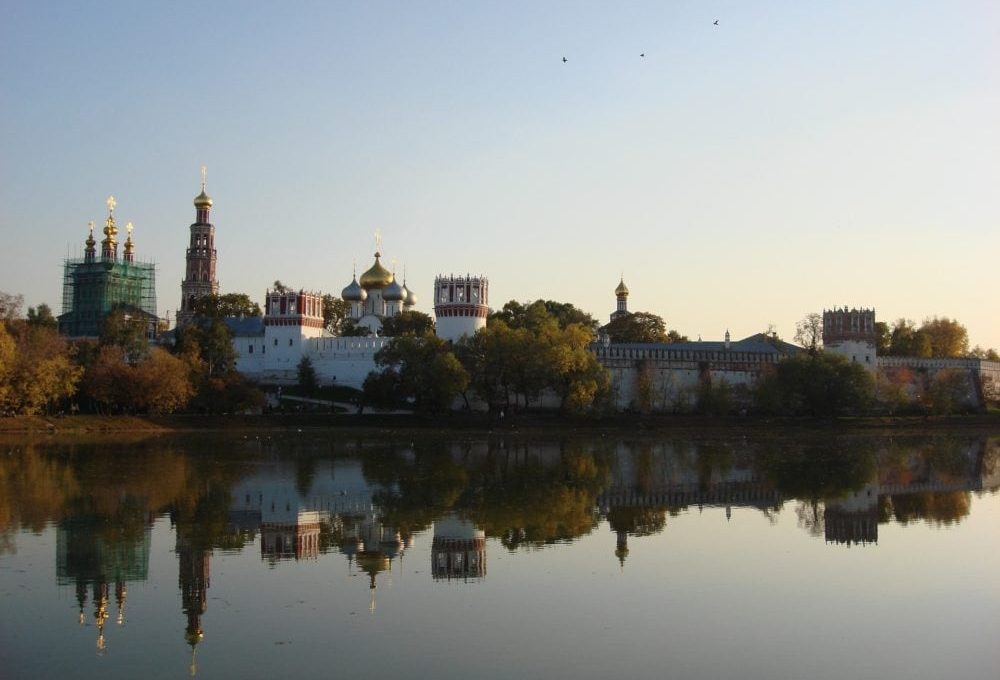
Novodevichy Convent and cemetery in Moscow is one the places to visit in Russia, if you wish:
- first, to see “one of the brightest examples of Russian architecture”, listed as a UNESCO World Heritage Site ,
- then take a break from your hectic journey in the Russian capital;
- and finally discover the faces of famous Russian men and women.
In order to prepare for the visit to this place, I suggest that you see the history of Novodevichy together, then discover the information and practical elements that will be useful to you once there. Novodevichy Convent is one of the most interesting things to do in Moscow .
Good to know ! The Novodevichy Convent is under renovation until the end of October 2022. Work is progressing little by little, but most of the exterior is done in early 2020.
Why should you visit the Novodevichy convent and cemetery?
The convent has gone through different eras in the history of Russia. Therefore, its architecture, interiors and cemetery will not leave you indifferent.
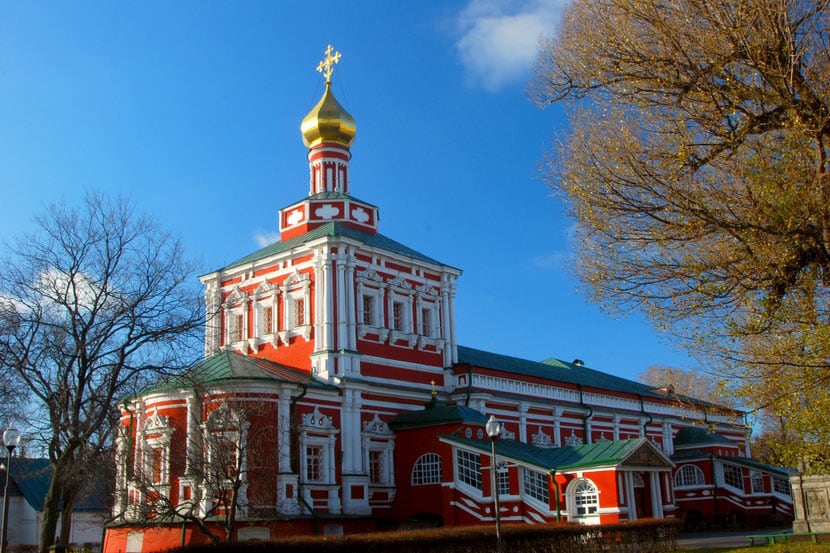
The history of Novodevichy Convent
When and why.
The convent was built in 1524 by the Vassili III ukaz, to celebrate the conquest of Smolensk and his return to Moscow.
In which purpose?
Surrounded by walls and thus built like a fortress, the Novodevichy convent had the function of defending the city of Moscow in the event of an invasion. Several neighboring villages were then dependent on the convent. For centuries, its walls welcomed women and girls (dievouchki: girls in Russian) from the Russian aristocracy and even members of the dynasty, who, for the most part, were sent here rather by force than by the will. A donation accompanied entry to the convent. The Novodevichy Convent was considered at that time to be one of the richest and the most prestigious monastery in Russia.
Why this name?
Before the convent was built, during the Mongol invasion, it was here that we looked like all the beautiful young girls ( dievouchki : young women in Russian) from Moscow in order to send them as “offerings” to the Golden Horde .
During the USSR
Under the USSR, religious buildings took on new functions (Karl Marx: “Religion is the opium of the people.”). The Novodievichi Convent could not escape it. The place has been transformed into the Women’s Liberation Museum.
The calm, architecture and richness of the interiors
The architecture of the whole blends perfectly with nature. The white walls of the convent are reflected in the water. The convent park is huge. The place is calm and relaxing. This is a real breath of fresh air after the Moscow center! Behind the walls, there is an exceptional architectural ensemble, as well as the magnificent icons and frescoes.
Novodevichy Cemetery
The convent is also known for its cemetery. Here we find famous personalities from Russia. Many compare it to Père-Lachaise in Paris and even find that the cemetery is worth the detour than the monastery. For my part, I find that the cemetery of the Alexandre Nevsky convent in Saint Petersburg is also interesting.
Everyone has their preferences, but in any case, the cemetery adds an additional attraction for visiting Novodevichy. Later in this article you will find more information about the cemetery.
Novodevichy Convent and Cemetery: Practical Information
Here is some practical information to know before you get there.
How to get there?
The convent is quite far from downtown Moscow: 1 hour and 15 minutes on foot from the Moscow Kremlin. The best way is to take public transport. Several options are available to you:
- Bus M3. The route of this bus is very practical to go to the Novodevichy Convent and cemetery. In addition, it is always more pleasant to stay on the surface and not get on the metro (even if it is very beautiful). From Teatralnaya ploschad (just opposite the Bolshoi theater) to the convent, it will take 25 minutes; 30 – if you come from Kitaï Gorod. The route is pretty nice and the bus stop is right next to the entrance! The only risk is traffic jams (office hours to avoid: before 9 a.m., after 5 p.m.).
- Sportivnaya (line 1, red) is the nearest metro station (fyi: post about metro stations: Most beautiful metro stations in Moscow ). It will take less than 20 minutes from Kitai Gorod, which is on the same line, and 10 minutes on foot from Sportivnaya station at the entrance to the convent. The path on foot is therefore not unpleasant: fairly quiet, among mostly residential buildings.
- Find out more about transport in this blog post: Public transport (metro, bus) in Moscow .
Walking around. The former Tolstoy house is more or less in the same area, a few stops from M3 before Novodevichy (stop: Ulitsa Lva Tolsotogo). The interior and furniture of this house, transformed into a museum, are original. There are some guided tours in English to Novodevichy Convent and cemetery that could be interesting.
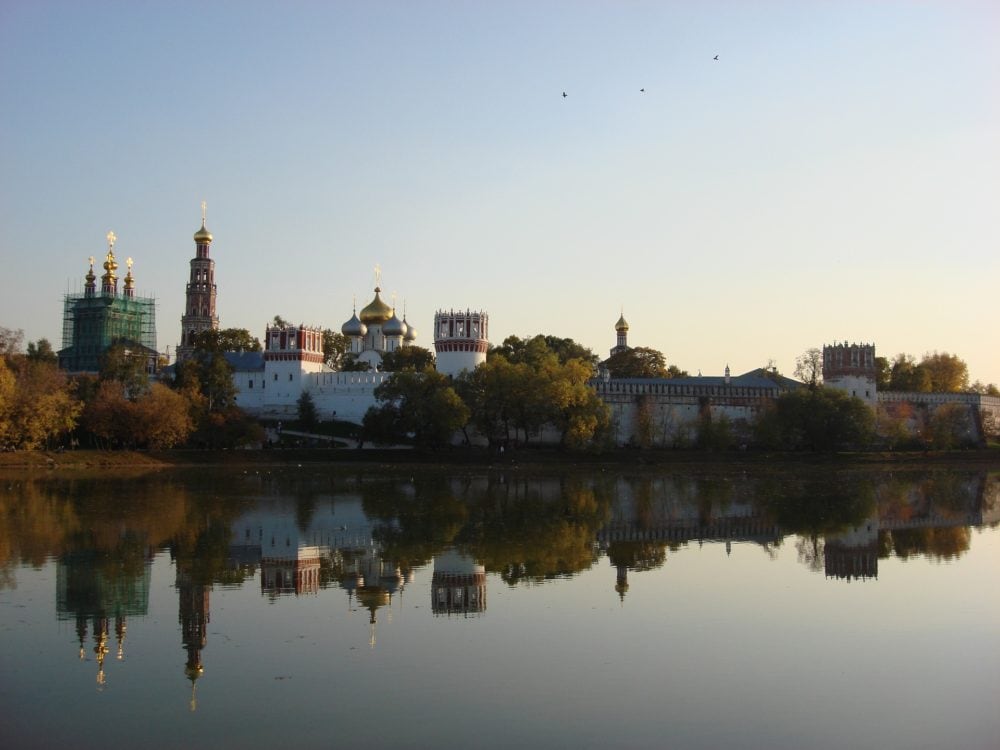
Where are the entrances to the convent and the cemetery?
There is an entrance for the convent and another for the cemetery. Normally, you can also access the cemetery from the territory of the convent, but the last time we went there this access was closed (because of renovation). To get to the cemetery, it’s best to go through the main entrance to the cemetery.
What are the opening hours of the Novodevichy Convent and cemetery?
- Access to the monastery is daily from 7 a.m. to 7 p.m. (depending on the end of the liturgies), except in exceptional cases.
- Entrance to the monastery museum is daily from 9 a.m. to 5 p.m., except Tuesday and the first Monday of the month.
- Access to the cemetery. From May to September: 9 a.m. – 7 p.m. October to April: 9 a.m. to 5 p.m. Every day of the week.
Good to know! Liturgies are daily. Usually in the morning – at 7.40 a.m. and in the evening – at 5.00 p.m. Sundays and days of major celebrations – at 6:20 am and 8:40 am. In order to be able to attend the morning liturgies, I know of no other solution than being orthodox practitioners. On the other hand, for the evening ones – I think it’s possible, discreetly, of course. Smolensk Cathedral, the main cathedral, is closed from early October to mid-May.
As the monastery’s official website is in Russian, here is the link to TripAdvisor .
How to buy entry tickets?
Access to the Novodevichy Convent Cemetery is normally free. But since July 2019, the cemetery has paid entry only for foreign tourists (300 RUB / person). It is not cool, but it is working like that for the moment.
Access to the convent area is free, but it costs 300 RUB for exhibitions and a visit to Smolensk Cathedral, 100 RUB – for taking photos and 200 RUB – for videos. If you are a student (proof required): 100 RUB.
Novodevichy convent and cemetery: what to see?
I will describe below what you can discover during your walk in the Novodevichy Convent. However, unfortunately, the official site of the Novodevichy ensemble is in Russian only.
The Novodevichy Convent
Here is the map of the Novodevichy Convent and cemetery fro m the official website in Russian, to give you an idea of the whole.
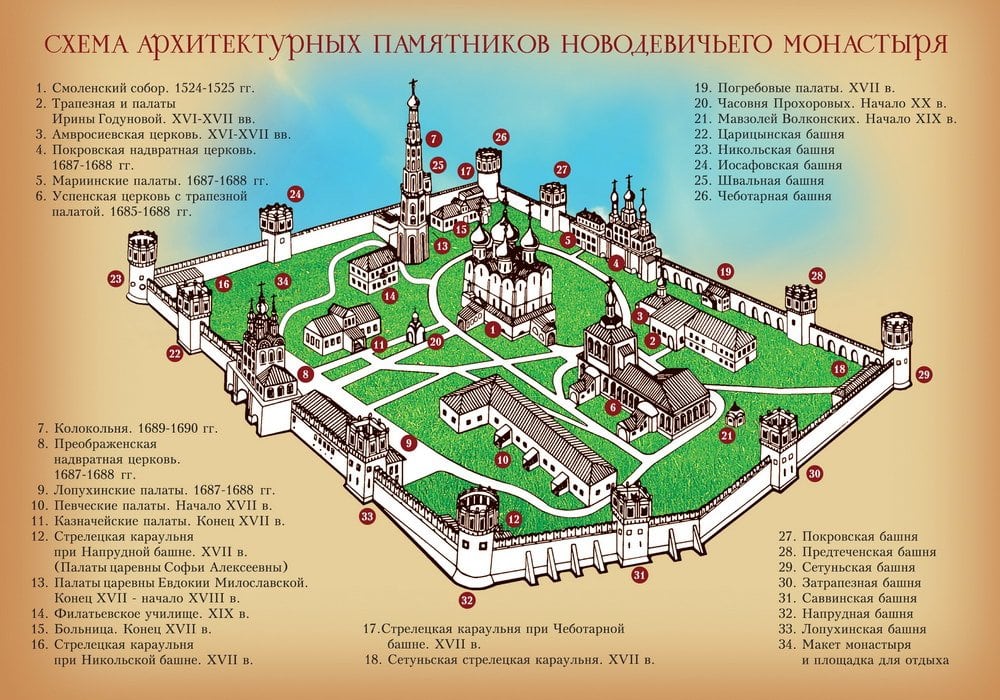
Novodevichy cemetery: what to see and Novodevichy cemetery map
As noted above, many famous Russian figures rest in this cemetery. Very different personalities, moreover, who perhaps would never have appreciated this proximity. Nevertheless, this is one of the reasons why I find the visit to the cemetery interesting. Always from my point of view: I do not think it is a good idea to come to see the tombs (they remain fairly sober overall).
Buried personalities in Novodevichy cemetery
Here are some names of the personalities buried in Novodevichy:
- Mikhail Bulgakov, author of the famous novel Master and Margarita
- Nicolas Gogol, writer
- Anton Chekhov, author of numerous literary works, some of which are staged even today, such as La Mouette
- Sergei Prokofiev, Russian composer, pianist and conductor
- Sergei Eisenstein, Russian filmmaker from the Soviet period
- Nikita Khrushchev
- Boris Yeltsin, first president of the Russian Federation right after the collapse of the USSR

Other Moscow travel tips:
- Bolshoi Theatre: how to buy tickets?
- Red Square: all you need to know
- Where to stay in Moscow?
- Things to do in Moscow in winter
Leave a Reply Cancel reply
Your email address will not be published. Required fields are marked *
Save my name, email, and website in this browser for the next time I comment.
Moscow transport: metro, bus & taxi in Moscow | How does it work?
Things to do in moscow: how to visit moscow | unmissable, cool & unusual, you may also like.

Moscow transport: metro, bus & taxi in Moscow | How does it work?
- August 15, 2023
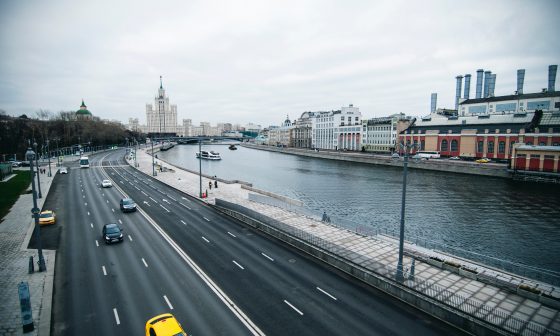
Weekend in Moscow | What to do in Moscow for a long weekend?
- June 22, 2023
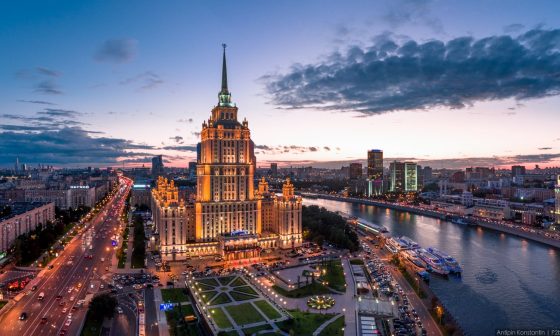
Things to do in Moscow: how to visit Moscow | Unmissable, cool & unusual
- September 2, 2023
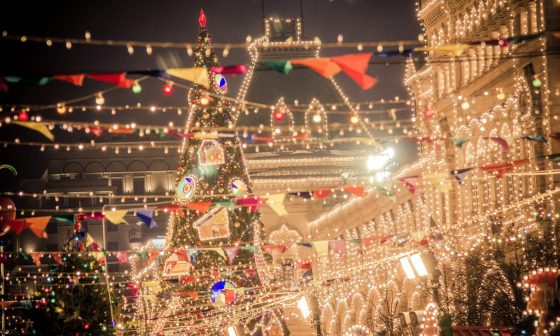
Christmas and New Year in Moscow: best markets and decorations to see
- September 18, 2023
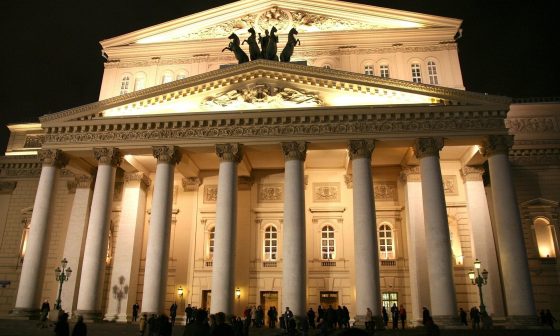
Bolshoi Theatre Moscow: how to buy tickets for Bolshoi theatre ballet?
- July 28, 2023
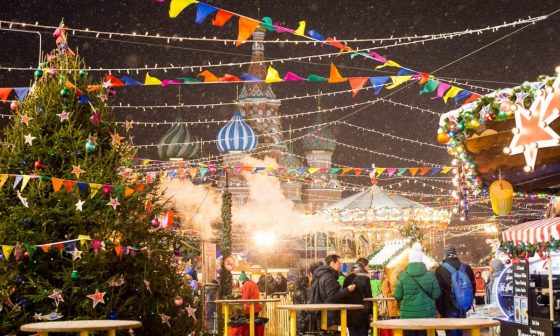
Moscow in winter | What to do in Moscow in winter? How to dress?
- October 1, 2023

Moscow’s best free city tour

I love Moscow – this charming metropolis, its people, its history and its unique cityscape. I would like to share my passion for this city with you. It is my job to show you the most exciting corners of this fascinating metropolis. That’s why, as a travel specialist and your private tour guide Moscow in Russia, I organize a guided free city tour Moscow – so that everyone, regardless of their budget, would be able to enjoy the insider’s view of Moscow.
You get to see what only Moscow residents know and what other tourist guides keep from you. I am a licensed travel specialist in Russia and would like you to enjoy all facets of the capital of the largest country in the world, without demanding any money from you. I’ll show you the city on my free Moscow walking tour for 1.5-hours on foot.
Everything you need to know:
- My tours take place daily by arrangement, I am the only English-speaking licensed tourist guide Moscow, who offers a free city tour.
- My 1.5-hour free tours Moscow do not cost you a cent, I also offer other great paid tours as well.
- I am an experienced local, I make the tours informative, but at the same time relaxed and not off the plane.

Free Tours Moscow – Daily
My free tours Moscow city starts on Slavonic Square (Kitay-Gorod Metro Station), passes the world-famous St. Basil’s Cathedral, which was built by Ivan the Terrible on the south side of Red Square in the 16th century and where the tsars were once crowned. Then it goes across the Red Square at the Lenin Mausoleum, the luxury department store GUM and with a view of the Kremlin towards the historical museum. Of course, you will also learn more about the stories that once happened behind the thick walls of the Kremlin – from the Tsars and Napoleon to Stalin. Then we continue through the idyllic Alexander Garden.

An advance booking is required!
Practical information:
Time: by arrangement, daily Duration: 1.5 hours Price: Free Language: English
«First acquaintance with Moscow» – a 2.5-hour city tour in the center of Moscow
This Moscow city tour starts on the Theater Square, past Lubyanka Square and the KGB-building, then through Kitay Gorod district and Varvarka Street, past the world-famous St. Basil’s Cathedral. Then it goes across Zarjadje Park, over Red Square at the Lenin Mausoleum, the GUM-department store and towards the Historical Museum. We walk through the Alexander Garden.
Time: by arrangement, daily Duration: 2.5 hours Price: 17 $ Students and children: 6 $ Language: English
A 3.5-hour car/bus tour of Moscow.
This is the best tour of Moscow city as all the important sights are visited. I am your Moscow city guide who will walk you through the city explaining the charming history of the city. This tour begins with picking you up from the hotel. 3 breaks are offered for photographing.
First, we will visit the most famous riverside streets and bridges in the center of the city with the most beautiful views of the Kremlin and the Moskva River (e.g. the Kremlin embankment and the Great Stone Bridge).
The first photo break is made at the Cathedral of Christ the Savior. We then pass by the district with numerous museums, Prechistinka Street and the district with numerous medical areas.
We again stop at the Novodevichy Convent, which is a UNESCO World Heritage Site on the other bank of the Moskva River to click pictures.
Then we visit “Sparrow Hills” where you can enjoy a bird’s eye view of the city of Moscow from the observation deck. Then there are the skyscrapers of Moscow-City, the Kutuzov avenue, the New Arbat, Tverskaya Street, the world-famous Bolshoi Theater, the KGB building and Varvarka Street. Here there are ample spots to click pictures.
We then drive past the Kremlin again and finally reach Red Square. We take a short tour of Red Square and say goodbye in the Alexander Garden.
Time: by arrangement, daily Duration: 3.5 hours Price for a group: 170-200 $ (depending on the number of travelers) Language: English
Metro tour – daily
Palaces for ordinary people – that was what Stalin promised to the people when the construction of the Moscow Metro began between the World Wars. The communist dictator hadn’t promised too much. No other underground system in the world can boast such spectacular architecture – chandeliers, decorations, stucco, paintings on the walls – each station is individually designed. No wonder that Moscow residents love their metro. I will guide you through the bustle of one of the busiest subways in the world and show you the most beautiful stations Moscow city has.
Time: by arrangement, daily Duration: 2 hours Price: 21 $ Students and children: 17 $ Language: English Included in the price: Metro tickets / the guided tour
Tour of Communist Moscow – every day
After the Communist October Revolution in 1918, Moscow became the capital of the Soviet Empire and was the center of socialist orbit for more than 70 years. This left its mark on Moscow, even if the USSR disintegrated more than a quarter of a century ago. The city streets are full of remnants of the communist regime and the Cold War. This is a walking tour where I will show you the most exciting places in Soviet Moscow: from the notorious KGB headquarters, also known as Lubyanka to the Karl Marx Monument to small hidden remains from the time of hammer and sickle. You will also learn about Stalin’s Great Terror political campaign and the system of the GULAG and how the USSR, the communist Russian republic, became modern Russia.
Time: by arrangement, daily Duration: 2 hours Price: 21 $ Students and children: 17 $ Language: English Included in the price: the guided tour
Alternative Moscow Tour – daily
Explore the unseen Moscow with your Moscow private guide and discover a range of sights during this alternative walking tour. Away from the main tourist spots (in the central district of Kitay-Gorod), just a short walk from Red Square and St. Basil’s Cathedral, you suddenly find yourself in one of the trendiest districts of Moscow. This place not only has trendy cafes and green squares, but here you can see the most beautiful spray works (according to Albrecht Dürer), hangout-places of the youth and hipsters, as well as learn what Moscow looked like in the 19th century. Here you will also learn exciting and even bloody stories about famous gangsters, eccentric business people and legends like the wandering preacher Rasputin, who is known in Russia either as the “holy devil” or the mad monk. To learn a little more about Moscow’s culture, this is the tour for you. On my alternative tour, you will get to know Moscow away from the tourist hotspots. This tour is of 2 hours duration and you will experience the following on the tour:
- St. John’s Hill, a quiet oasis right in the center, where time has stopped as it did in pre-Communist times
- Khokhlovka Art Center, where Russian hipsters and street artists hang out
- Samoskvorechye District where you can see beautiful streets and hear stories from old Moscow
Time: by arrangement, daily Duration: 2 hours Price: 21 $ Students and children: 17 $ Language: English Included in the price: the guided tour / tram ticket
Kremlin tour – daily (closed on Thursday)
With its 20 towers and high walls, the Kremlin rises imposingly over Red Square. This world-famous fortress with its area of 28 hectares is home to over 800 years of Russian history. Described as the eighth wonder of the world, this historic fortress complex is the principal symbol of Russia that sits on the banks of the Moscow River. Today the Kremlin still harbors numerous secrets and has palaces and cathedrals, surrounded by Kremlin Wall. The current wall was constructed between the 15 th and 16 th centuries, but the original wall was made of wood around the year 1147. The Kremlin Wall became an important symbol of Moscow’s importance in the Russian Empire. This top tourist destination attracts millions of people every year and there are various sights to see. With my Kremlin tour, you will see the oldest square in the city in the heart of the Kremlin, the once largest cannon in the world and the scene of numerous dramas – from Ivan the Terrible and Napoleon to Stalin. You cannot miss this unique experience.
An advance booking and prepayment for tickets are required.
Time: by arrangement, daily (closed on Thursday) Duration: 2 hours Price on request Students and children: on request Language: English Included in the price: Kremlin tickets / the guided tour
Moscow pub crawl – Friday / Saturday
Experience the real nightlife of Moscow with my Moscow Pub Crawl and enjoy 4 pubs/bars plus 4 welcome shot drinks. Move from one bar to another and get to know travelers from around the world as well as the locals. Play fun adventure games and contests in addition to getting perks in the bars. Between the bars, move from one place to another on foot. The routes are organized as such that you will walk no more than 10 minutes between the bars. Visit the most exciting events, parties, concerts, and dance in the bars. Moscow Pub Crawl is a tour that you will never forget.
This tour runs every Friday and Saturday evening at 8 PM and you need to bring along your passport or an ID card, comfortable shoes, and wear smart casual clothes.
An advance booking and a small prepayment are required!
Time: by arrangement, daily Duration: 4 hours Price on request Language: English Included in the price: the guided tour, 4 shot drinks
1.5-hour boat trip on the Moskva River.
Taking a boat tour in Moscow on the Moskva River is a very pleasant experience. It allows you to know the city from a totally different perspective and admire the beautiful bridges. In this 1.5-hour river trip, you will sail past many beautiful sites in Moscow, so you can take the best photos to commemorate this day. The ship makes several stops on the way. The trip starts from the Ustinskiy Bridge near Sarjadje Park and ends at the Kiev train station.
On this Boat Trip, you can see sights such as: the former Imperial Education House, Sarjadje Park, the “flowing”, “floating” bridge, the most beautiful view of the Kremlin, the Great Stone Bridge, the legendary House on the Quay, the Christ the Savior Cathedral , the monument to Peter the Great on the ship, the central sports arena Luzhniki, the Sparrow Hills, 240 meters high Lomonosov University, the numerous architecturally spectacular skyscrapers of Moscow-City, the Novodevichy Convent, the building of the Ministry of Foreign Affairs etc.
Time: by arrangement, daily Duration: 1.5 hours Price on request Language: English
A military tour – riding on tanks in Stupino (Moscow region)
Russian Military is one of the largest military forces in the world formed in 1992. With my Military Tour experience what it likes to be in the Russian military, shooting guns, ride the Tank T-34 and various models of German tanks from the Second World War, as well as armored personnel carriers and vehicles. You will also shoot from the AK-47 and another combat weapon.
The tour will begin with your private tour guide Moscow in a Soviet army van accompanied with some tasty snacks and tea for a tasty start. Upon arriving, you will have to put on the army safety clothing and climb the Russian armored vehicles. The tour will take you on the noisy, smoky tank, driving through mud roads. All participants will get the chance to drive the tank which is coordinated by the Russian military.
Time: by arrangement, daily Price on request Language: English
Alexander Popov
Welcome to Russia! My name is Alexander, I was born in Moscow and I'm a passionate tour guide. I want to share my passion for Russia and my hometown with you. On my website you will find useful information to make your individual trip to Russia as interesting as possible.
Gorky Park and Sparrow Hills: Green Lungs, place to relax and meet
The travel voucher for the russia visa, you will also like, everything you need to know about russia: included..., traveling in russia – how safe it is..., choosing the best guide for a free and..., how do i exchange money in moscow, eating out in moscow, the best time to travel to russia, how do i get from moscow airports to..., the best taxi services in moscow, moscow’s top 13 – the main attractions of..., with sim card purchase in russia: use whatsapp,..., leave a comment cancel reply.
Save my name, email, and website in this browser for the next time I comment.
@2019-2020 - Moscow Voyager. Alexander Popov
We use cookies to provide you with a better experience. By continuing to use our site you accept our cookie policy. Accept Read More
You are using an outdated browser. Please upgrade your browser .
Moscow Travel Guide
- Guide to Russia
- Russian Destination Guide
Why travel to Moscow
Contrasts: 12th century monasteries and some of the tallest skyscrapers in Europe can be found side-by-side in this complex and captivating city. The diversity of this mega-city is astounding. Only a few steps away from the solemn red facade of the Kremlin and the sounds of righteous church bells, a buzzing night scene and alternative-fashion boutiques can be found.
Culture: In Moscow only the best goes. Be it a theatre, restaurant or gallery, the standards are certain to be world-class. The Bolshoi ballet company is reputed to be even better than the Mariinsky’s and “MMOMA” (Moscow’s museum of modern art) exhibits works of art as profound as any that could be found in the famed MOMA.
Convenience: Unlike the rest of Russia, it’s easy enough to get by with just English in Moscow and, driving excepted, it is surprisingly safe: the murder rate is lower than in some of America’s major cities.
Top Sights in Moscow

St. Basil’s
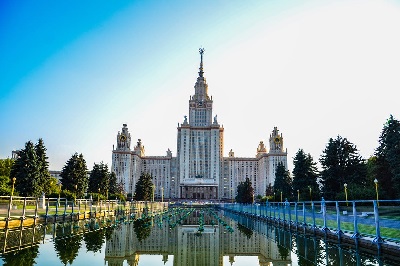
Novodevichy Convent
MORE SIGHTS
- Moscow Fact File
- History of Moscow Russia
- Arriving in Moscow
- Getting Around
- Moscow Museums
- Nightlife in Moscow
- Moscow Restaurants
- Moscow Entertainment
- Activities in Moscow
- Outside Moscow
FEATURED MOSCOW TOURS
See tours which enjoy highest popularity with our customers
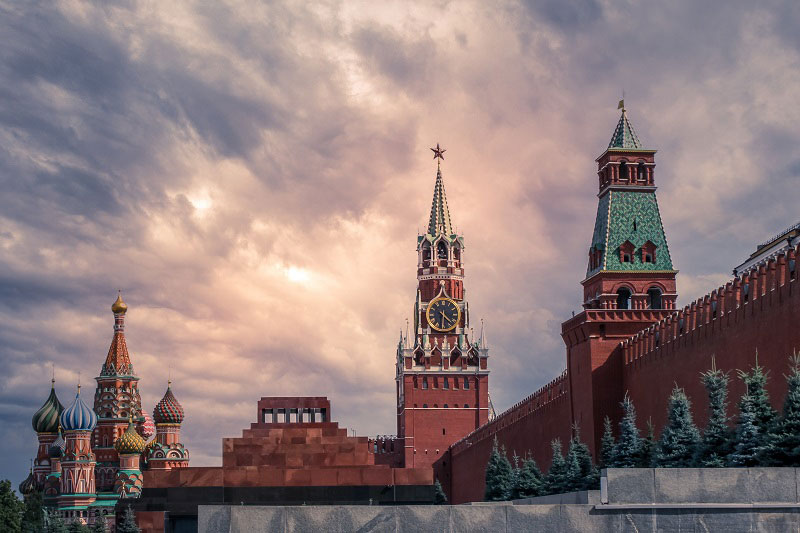
CLASSIC MOSCOW
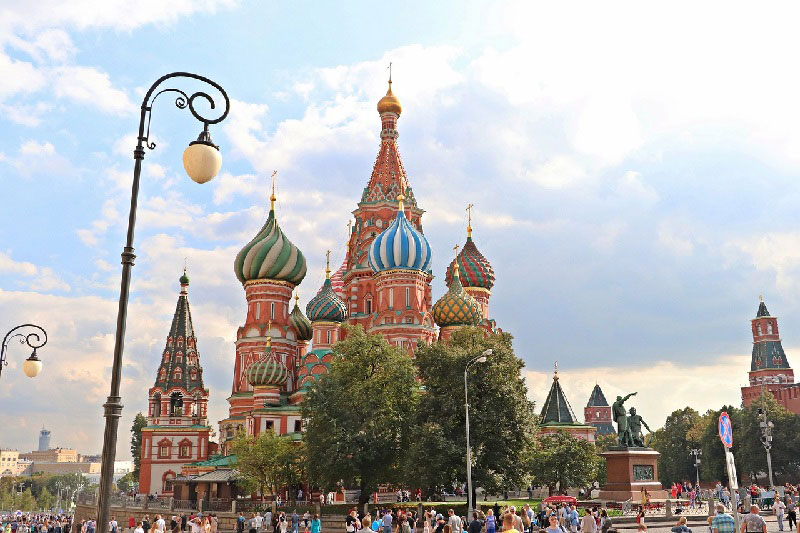
A WEEK IN MOSCOW
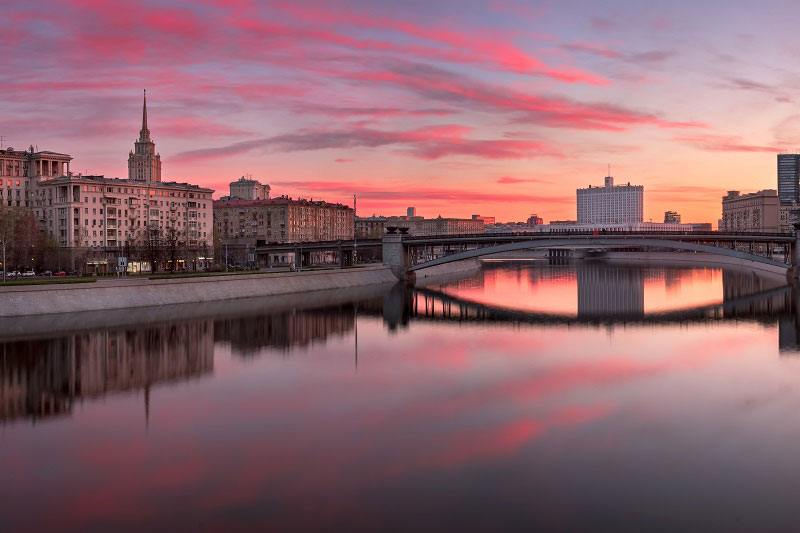
WEEKEND IN MOSCOW
View all tours
Why visit Moscow
It would take more than two days to walk around the perimeter of the biggest city in Europe, Moscow. Many of its inhabitants barely know what’s beyond the few blocks around their flat and there are so many attractions that it’s almost impossible to know where to start. If there is such a thing as an antidote to boredom, Moscow City is it. The mind-boggling range and diversity of things to do, places to eat, parks, historical monuments and more means that a vacation in Moscow has a wealth of activities to offer for every type of traveler, from young families to retirees.
Reasons to Vacation in Moscow in 2022
The Bolshoi theatre is familiar to almost everyone as Russia’s grandest theatre, but what people don’t know is that there are many more bolshoi (big) sites in Moscow that are worth travelling all the way to Moscow to see. For more than 100 years, the world’s biggest bell has been hidden behind the Kremlin’s walls and inside Moscow’s main park (which is bigger than some countries!) there is the world’s largest outdoor ice-rink. Travelers that visit Moscow can stay at the Izmailovo, Europe’s biggest hotel, then eat at the largest and most historic McDonald’s in Europe and after that have fun at the largest European indoor theme park!
Ancient Past & Stunning Architecture:
As those who travel to Moscow will see, just because Moscow is a city of record-breaking, glitzy high-rises doesn’t mean that there is no history. On the famous Arbat street, time-worn, wooden storehouses and century-old churches are squashed up against grey, soviet blocks which are then towered over by 21st century office-blocks. Unlike its much younger sibling, St Petersburg, Moscow’s roots stretch way back to the 12th century. Within the walls of the Kremlin, the city’s oldest building the Cathedral of Assumption can be admired in all its 500+ years of age.
Culture & Convenience
For a foreigner who has never visited Russia, Moscow is the perfect stepping stone into this great land of mystery. From the country’s best classical ballet troupes to snow-white troikas trotting through the parks, all the highlights of Russian culture can be had in Moscow without any of the complications that would be expected in other, less developed regions of Russia.
Cheap as Caviar
In Moscow, everything is bargain when with the current foreign exchange rates being what they are. Even caviar doesn’t seem so dear when the exchange rate is at 60rub to the dollar, so go on indulge yourself! Take your 2022 vacation in Moscow and have the best of both worlds, with European luxury at very affordable prices.

Lena, our guide in Moscow was excellent. She was very knowledgable and could answer any question we had for her. We liked that she could pick up on our interests and take us places we might not have thought of to go. When we realized that one of the places we had chosen to see would probably not be that interesting to us, she was able to arrange entry to the Diamond Fund and the Armoury for us. Riding the Metro with Lena was a real adventure and a lot of fun. In Saint Petersburg we found Anna well versed in the history of the Tsars and in the Hermitage collection. Arkady in Veliky Novgorod was a very good guide and answered all of our questions with ease. Novgorod was perhaps a long way to go for a day trip, but we did enjoy it. Vasily was a great driver to have and kept us safe with good humour and skill. We enjoyed ourselves so much, my daughter says she is already planning to return. We would both have no hesistation to recommend ExpresstoRussia to anyone we know.
Just wanted to let you know that My grandson Bruno and I couldn´t have been more pleased with our week in Moscow (6/15 - 6/21). We were absolutely enchanted with the whole experience, including getting lost a couple of times in the Metro during our free time. Although both our guides (both Eleanas) were excellent, I would particularly commend the first one (she took us to the Tatiakov, the KGB tour, and to that beautiful cemetery where so many great Russian artists, authors, composers, musicians, militarists, and politicians are buried). Her knowledge is encyclopedic; and her understanding of today´s Russia as a product of its past was, for us, truly enlightening. I will be taking another tour in Russia, with my wife, within the next two or three years. I will be in touch with you when the time comes. Meanwhile, I will refer you to other potential visitors to Russia as I meet them.
We had a great time both in Moscow and St Petersburg. Your travel agency was excellent in coordinating the whole trip. Everything worked like clockwork. The guides assigned to us were very nice and friendly. They had a great knowledge of their subjects. The cars and the drivers were great. The hotels were good and the itinerary was good. All in all, it was a wonderful experience. It was nice dealing with you and your company. Thank you very much for a great Russian experience. Have a great future ahead
- 31 reviews of Express to Russia Moscow Tours in Moscow
Our travel brands include

Express to Russia
Join us on Facebook
We invite you to become a fan of our company on Facebook and read Russian news and travel stories. To become a fan, click here .
Join our own Russian Travel, Culture and Literature Club on Facebook. The club was created to be a place for everyone with an interest in Russia to get to know each other and share experiences, stories, pictures and advice. To join our club, please follow this link .
We use cookies to improve your experience on our Website, and to facilitate providing you with services available through our Website. To opt out of non-essential cookies, please click here . By continuing to use our Website, you accept our use of cookies, the terms of our Privacy Policy and Terms of Service . I agree

COMMENTS
Please note that as only Highgate Cemetery guides are permitted to conduct tours of the Cemetery, this is not a suitable option if you wish to take a tour. Once your request has been received, we will contact you to confirm your booking. Prices: Adult £10, Children 8-17 £6, Students* £8. Minimum fee £100.
Guided Tours. There are guided tours of the East and West Cemetery led by Friends of Highgate Cemetery which include admission to both the West and East Cemetery. Guests can expect to learn about both the history of the cemetery and its occupants. West Cemetery Guided Tour Ticket Prices. £14/Adults.
Highgate Cemetery was one of the earliest private cemeteries in England. London's huge population growth in the early 19th century meant that most churchyards were full and there was growing concern of the need to bury the dead. ... On the Highgate Cemetery website you can choose between guided tours and self-guided visits of the West ...
You can also attend a guided tour, if you wish, for the East part - the total ticket costs 8 GBP and the tour is usually at 2 pm on Saturdays. Here's some more information about it. Visiting Highgate's West Cemetery. If you'd like to see the West side of the Highgate cemetery, however, you can ONLY do so via a guided tour. The West side ...
Highgate Cemetery is open daily except Christmas Day and Boxing Day. We recommend first-time visitors take a guided tour. Please see the 'visit' page for all ticket options. Visit the Cemetery; View events; Plan a burial or memorial; Opening times March to October. Open daily from 10am to 5pm
Highgate Cemetery & free time in Highgate. Includes private guided tour.. Explore the famous Highgate Cemetery, with a fascinating 90-minute guided tour of the private West Wing. You will see graves of many famous people in the West Wing, where many are laid to rest including George Michael, Jane Arden, The Rossetti family & Lucian Freud.
Highgate Cemetery - Guided Tour of West Cemetery. Where? Highgate Cemetery, Swain's Lane, Highgate N6 6PJ · Tel: 0208 340 1834 · Web: highgatecemetery.org. Opening times? 10 AM to 5 PM (Mon-Sun, Mar-Oct); 10 AM to 4 PM (Mon-Sun, Nov-Feb); Last entry 1 hour before closing. Visiting hours may change.
A guided tour of Highgate Cemetery West. We did a 12.30pm guided tour with approximately ten others, and they provide you with a free map to take with you. Our tour guide, Julia, began by discussing some of the history of London's burial practices. She explained how, in the 19th century, faced with a fast-growing population and overflowing ...
The West Cemetery Guided Tour tickets are £15 for adults and £8 for children. In addition to the Highgate West Cemetery tour, you can visit East Cemetery on the same day. If your tour is in the last half of the day, I recommend visiting East Cemetery before your tour. The catacombs of Highgate Cemetery are only accessible during tours.
A visit to the West Cemetery is possible by guided tour only. The latter lasts 70′ and costs £12/adult. Entrance to the East Cemetery is included in the price as well. ... All in all, a Highgate Cemetery tour is a fantastic way to escape the hustle and bustle of the big city, while, at the same time, delve into the core of the events ...
The cemetery is divided into two areas: Éast and West. Both can be visited together, or separately - but the West Cemetery is only accessible by guided tour; the entry price is higher, but already includes the ticket for the East Cemetery. East Cemetery (UKP 4,- entry/adult), where Karl Marx is buried, can be visited without a guide.
Highgate Cemetery by architects Stephen Geary & Bunstead Bunning, built 1839 on the site of 17th century Ashurst House. It has over 52,000 graves, many of famous people. These occupants are brought to life by the very informative and entertaining guided tours through the West Cemetery which must be booked in advance.
In 1975 The Friends of Highgate Cemetery was formed with the aim '…to promote the conservation of the cemetery, its monuments and buildings, flora and fauna, for the benefit of the public as an environmental amenity.' ... guided tour of the West Cemetery and access to the East Cemetery at leisure with free time in the village of Highgate ...
West Highgate ticket prices are £10 per adult and £6 per child for a self-guided tour. Guided tours are £15 for an adult and £8 per child. You must book a guided tour to see the catacombs. East Highgate ticket prices are £4.50 per adult and 50p per child for a self-guided tour. Guided tours are £9.50 for an adult and £2.50 for a child.
Before booking the guided tour at the cemetery, please check our dates of availability. Feel free to call or email us with your dates. Cab holds five people and price is per cab. Highgate Cemetery 'I need never have known existence': Radclyffe Hall and LGBTQ+ visibility - The National Archives blog Gray's Anatomy - Wikipedia
Join Curator of 'this and that' Henry Flynn as he takes you, yeah you, on a British Museum themed tour of London's Highgate Cemetery.Highgate Cemetery is the...
Highgate Cemetery. But Highghate Cemetery is a rare exception. Like Paris' Pere Lachaise or Prague's Olsany, Highgate Cemetery is the place to be. Dead, that is. And the English know it. In fact, they know it so well that they charge visitors a fee just to get in for a self-guided Highgate Cemetery tour—living visitors, that is.
Visiting the famous Victorian cemetery & now popular London tourist attraction. Highgate Cemetery. Surely, one of the best London tourist destinations. A hid...
West Cemetery. Open every day from 10am to 5pm. (4pm close from November - February). Closed Christmas Day and Boxing Day. Admission to the West Cemetery is either by Guided Tour or by a Self-Guided visit. We advise booking in advance (especially Guided Tours), but you can purchase upon arrival.
The Bulgakov Museumat Bolshaya Sadovaya ul. 10 (Sun-Thurs 1-11pm, Fri & Sat until 1am; free; t495/970-0619; Mayakovskaya), is the house where the novelist lived from 1921 to 1924. There are nightly tours (1-6am; R550; phone a week in advance for tour in English). The Museum of Modern History.
Novodevichy cemetery map. Below you will find the Novodevichy cemetery map that I found on the website of the Moscow city hall. The entrance is at the very bottom of the Novodevichy cemetery map on the left ("ВХОД"). Here are the coordinates of the graves of some famous personalities: Bulgakov => 2nd section ("участок"), row ...
Included in the price: the guided tour, 4 shot drinks. 1.5-hour boat trip on the Moskva River. Taking a boat tour in Moscow on the Moskva River is a very pleasant experience. It allows you to know the city from a totally different perspective and admire the beautiful bridges. In this 1.5-hour river trip, you will sail past many beautiful sites ...
The diversity of this mega-city is astounding. Only a few steps away from the solemn red facade of the Kremlin and the sounds of righteous church bells, a buzzing night scene and alternative-fashion boutiques can be found. Culture: In Moscow only the best goes. Be it a theatre, restaurant or gallery, the standards are certain to be world-class.